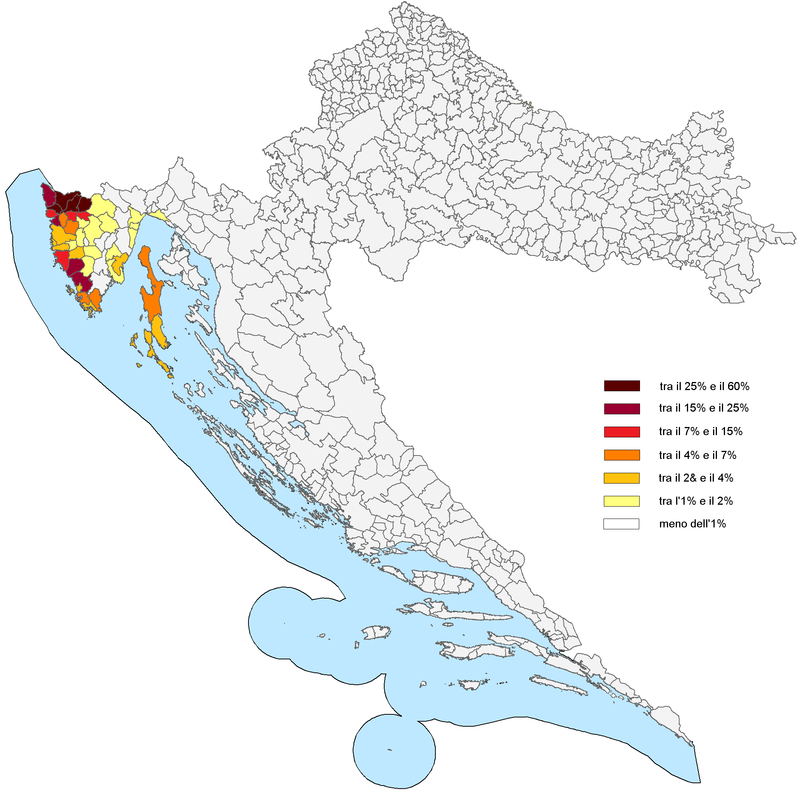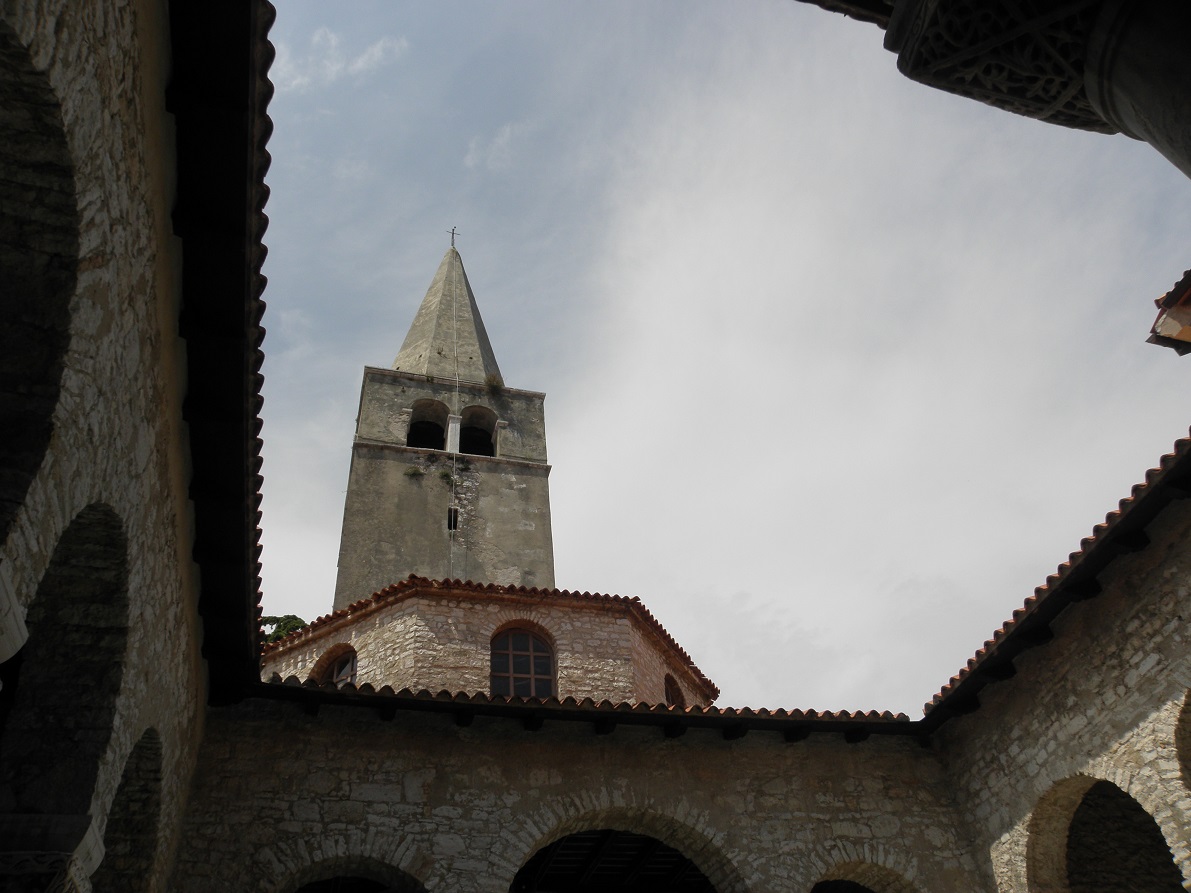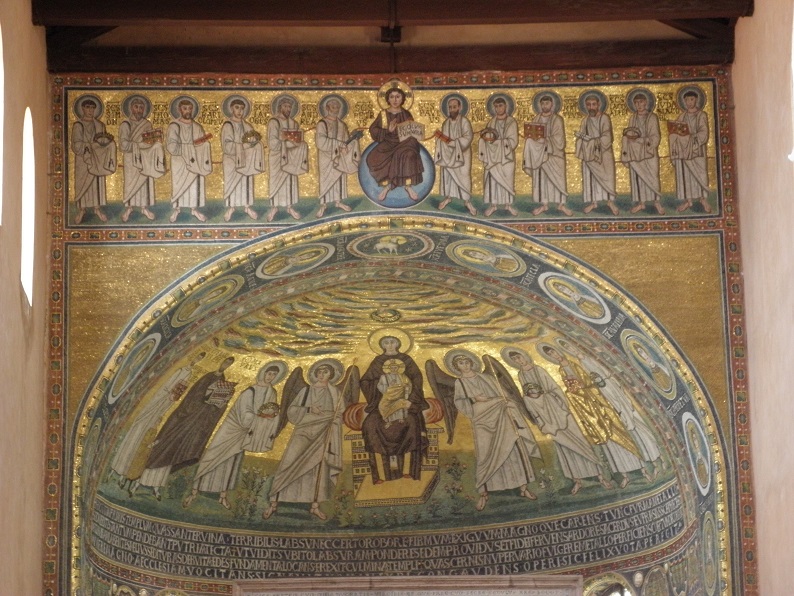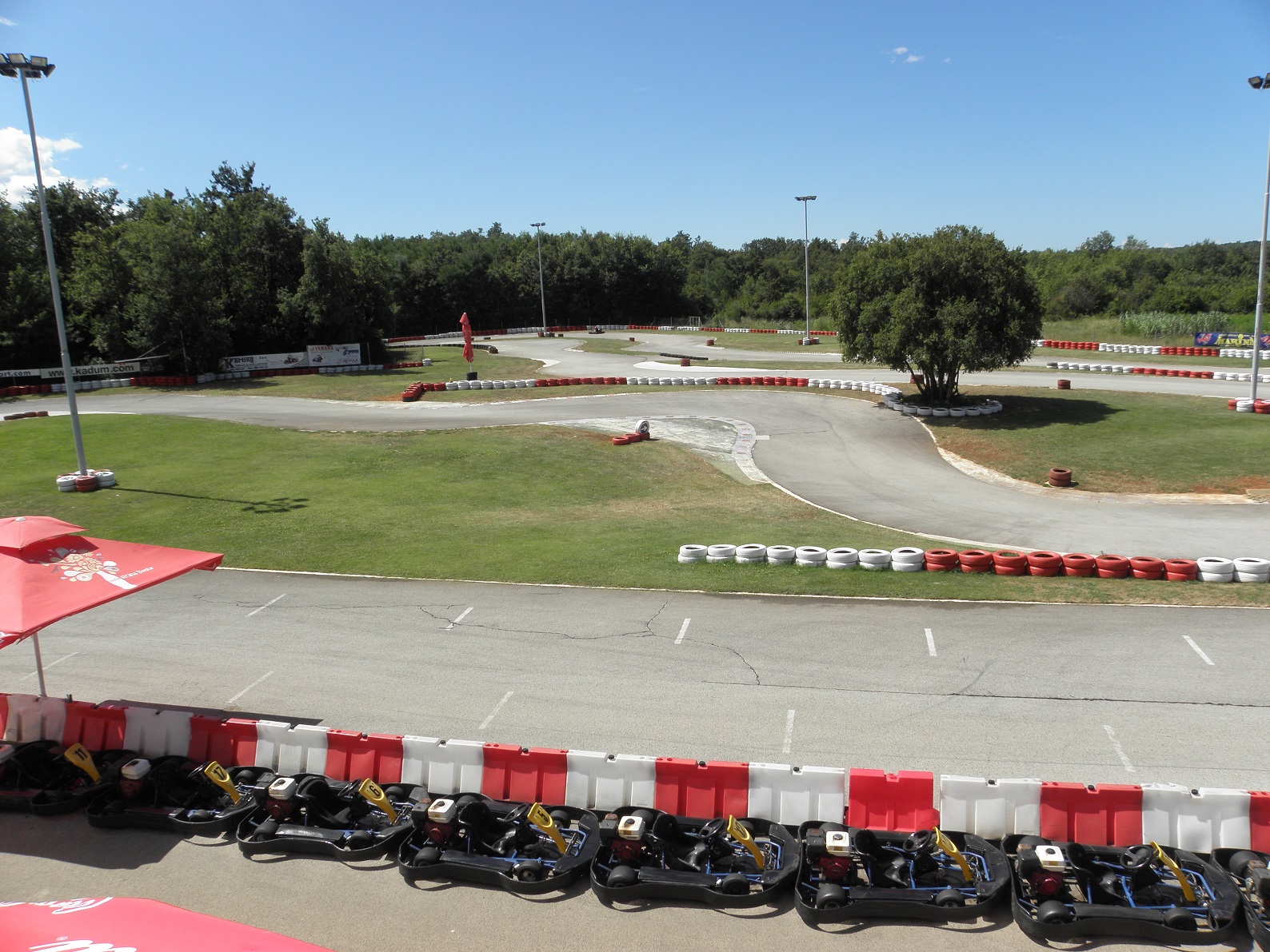Green Action and Green Istria's Lawsuit Over Plomin 1 Environmental Permit Rejected
ZAGREB, 5 March, 2021 - The Administrative Court in Rijeka issued a non-final verdict and rejected the claim of the Green Action and Green Istria associations, which sought to revoke the environmental permit for the coal-fired Plomin 1 thermal power plant issued by the Economy and Sustainable Development Ministry.
As the court reported, when announcing the verdict, which can be appealed against to the High Administrative Court, it was said that the administrative dispute did not decide whether the planned operation of Plomin 1 was inconsistent with the strategies and plans of the HEP power company and the Croatian government.
According to the explanation, those issues are not subject to consideration when determining the conditions for issuing an environmental permit. The court determined that the decision was made in accordance with the relevant regulations on the issuance of environmental permits for existing plants. It also established that the Ministry of Economy and Sustainable Development correctly and fully established the decisive facts in the administrative procedure, with valid application of substantive law.
Bernard Ivčić of the Green Action said on Friday that the associations would, after receiving the explanation of the verdict, consider the possibilities and probably file an appeal.
Interest in Houses in Zagreb Down 10%, Says Online Classified Site
ZAGREB, 5 March, 2021 - Over the past 12 months interest in buying a house in Zagreb dropped by 10% while at the same time interest in house purchase in Gorski Kotar, Lika and Istria grew significantly, shows an analysis by the Njuškalo online classified site.
Even though there have been no major changes in asking prices for real estate in Zagreb over the past 12 months, trends related to demand point to changes in customers' interest, which is probably due to a series of earthquakes that hit central Croatia in 2020.
Whereas last year clients increasingly searched for houses in Zagreb, rather than flats, over the past 12 months the interest in buying a house in Zagreb dropped by 10%.
In the entire country the interest in house and flat purchases grew less than one percent on the year but some regions have become much more attractive.
In the central mountainous Primorje-Gorski Kotar County, the interest in buying a house rose by 26.75% in the last 12 months, while in Istria it went up by 25%. Ads for properties in Lika-Senj County, too, saw an increase in views of 22.4%.
The average asking price for houses in Primorje-Gorski Kotar County was €1,595 per square metre, in Istria County it was €1,799 and in Lika-Senj County €1,160.
Potential buyers also increasingly searched for houses in Zadar County, as well as in the region of Međimurje, with interest in buying real estate there going up by 11%.
Interest in flats in Zagreb up 5.6%
From February 2020 to February 2021 interest in buying a flat in Zagreb grew by 5.6%, with the average asking price exceeding €2,150 in February 2021.
Among the cities where asking prices have continued growing are Osijek, Zadar and Pula, with Rijeka seeing the highest increase, of 6.4%, for the second consecutive month. Even though Split was previously in this group, it has been stagnating now in terms of the average asking price, Njuškalo says.
Rent in Zagreb down 9%, demand down 6%
Over the past 12 months, the rent on flats in Zagreb dropped by 9% and demand in the first two months of this year dropped 6% compared to the same period of 2020.
The average rent in Zagreb was €539, with most flats for rent having an area of 40-70 square metres, and the only flats to see an increase in the cost of rent on the year were those with an area of 20 square metres. The cost of rent for such flats went up by 3.2% to an average €231 per month.
The cost of rent dropped the most in the downtown area of Zagreb, by 11%, however, the average cost of rent still exceeds €700 a month, the online site says.
People Also Ask Google: How Far is Porec from Other Parts of Croatia?
March 2, 2021 – You've found yourself in Croatia, you've heard about Porec being an exciting town in Istria, and now you want to seize the opportunity to visit it? In our People Also Ask Google series, we explain how far is Porec from other parts of Croatia.
Although beautiful in all areas, Croatia is a country with an extremely unusual shape, making it difficult to travel from one part to another (for example, from Osijek to Dubrovnik). The long and very indented coast on the Adriatic Sea hides some of the most beautiful seascapes. Due to its specific position and numerous bays and islands, it is impossible to explore it in one fell swoop.
The largest peninsula in Croatia – Istria – is located in the north of the Croatian Adriatic coast and hides many natural and cultural sights in the west part of Croatia, where also lays Croatia's westernmost point – Savudrija. If in Croatia, it would be a shame if one does not take the opportunity and visit Istria. Cities on the west coast of Istria, such as Rovinj, Poreč, and Pula, have been attracting tourists' attention for years because of their proximity and excellent connections with Central Europe and its irresistible cultural heritage that makes them interesting destinations worth exploring.
We recently described whether Porec is worth visiting, and in this article, we will try to explain how far Porec is from other parts of Croatia and how to reach this one of the many Istrian gems easily.
However, if you are interested in how to get to Istria from Italy or Slovenia by car, bus, train, plane, or ferry, you can find all the information in the TCN's special guide.
How far is Porec from the airport?
Pula Airport – If coming by plane to Croatia, Pula Airport is the closest to Poreč. The distance between Pula Airport and Poreč is about 58 kilometers, of which 42 kilometers is the Istrian highway (i.e., the Istrian Y). The bus drive from Pula Airport to Poreč takes an hour, while the car ride takes 45 minutes. However, you can also take the local road through Istria. Still, even though it is a slightly shorter distance (52 kilometers), your journey will take at least 15 minutes longer in ideal conditions. Before you choose a route, consider that local roads in Istria can be very crowded during the summer season.
There are shuttle bus lines from Pula Airport to the main Pula bus station, 30 minutes after the landing of the aircraft, from where you can take a bus to Poreč (as well as to other parts of Istria). The shuttlebus drive to Pula takes 10-15 minutes, and the ticket costs 30 kunas. You can check the Pula Airport shuttlebus schedule for 2021, as well as other shuttle bus services from Pula Airport.
From the main Pula bus station, you can easily take the bus to Poreč with services provided by Arriva, Flixbus, and others. The bus connection between Pula and Poreč is excellent, with many bus lines throughout the year and day, especially during the summer season.
If you decide to take a car ride from Pula Airport to Poreč, several rent-a-car businesses offer services at Pula Airport.
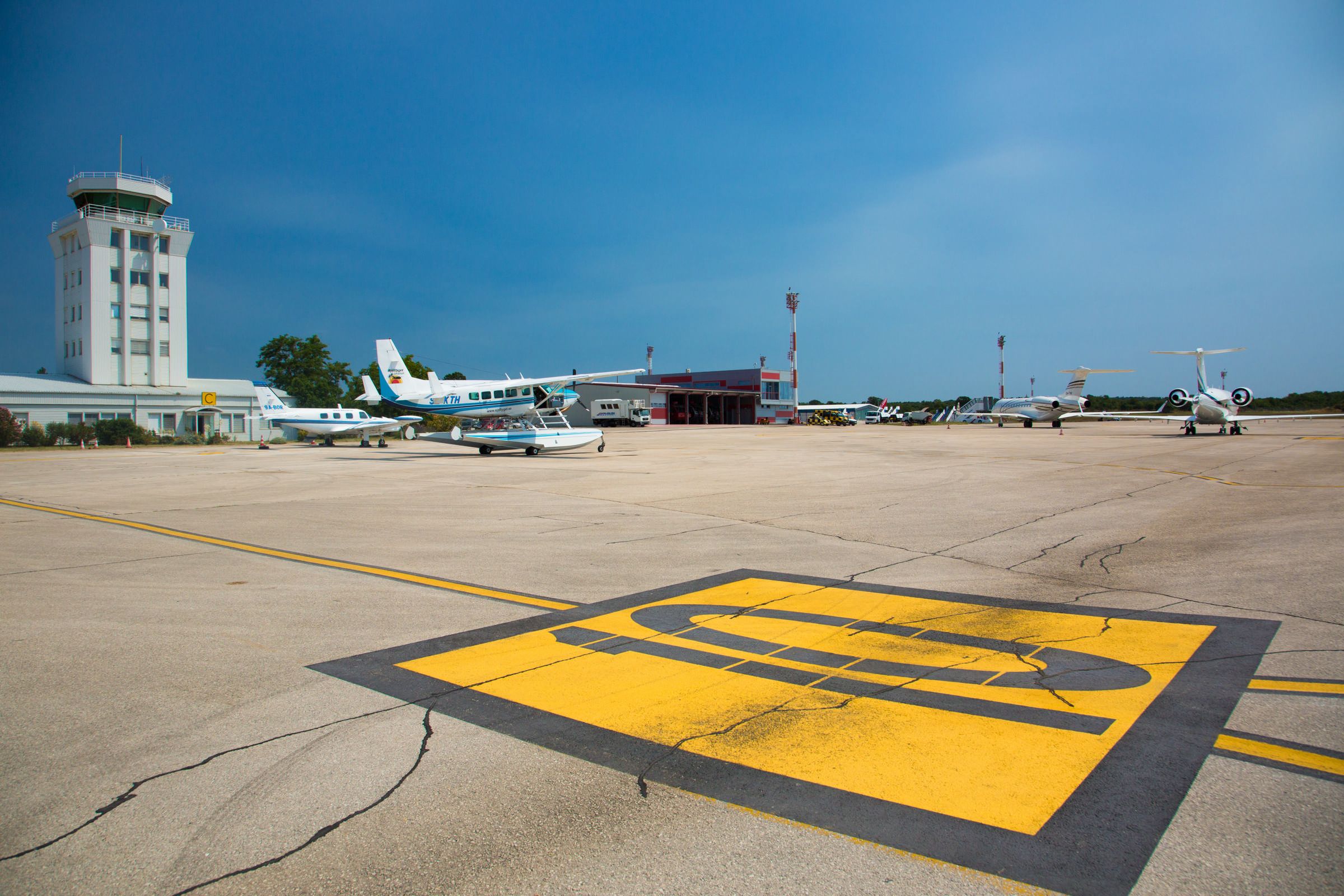
Pula Airport / Romulić and Stojčić
If you choose to take the local road to Poreč, you should follow the local D21 road, as seen on the photo below, and the journey will take about an hour.
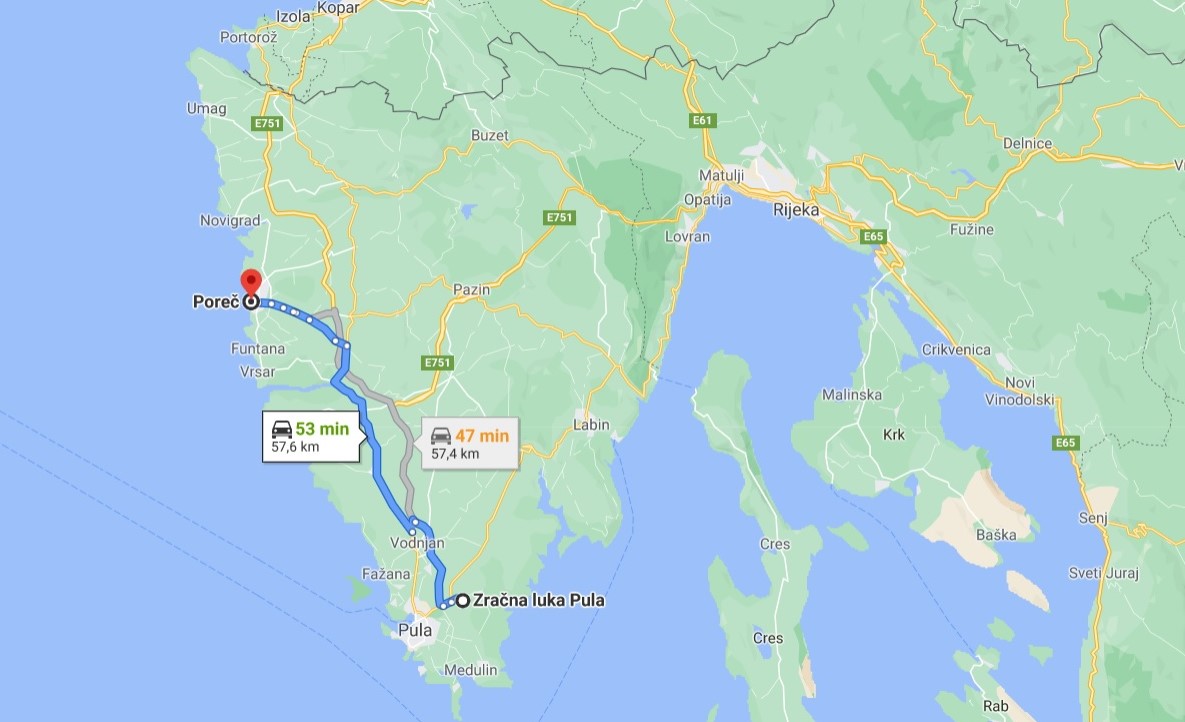
However, if you're taking the highway, you enter the E751 highway (A9 in Croatian) Istrian Y highway, at the Pula junction, and then get off at the Baderna junction. Note: A toll is charged on this route and costs 27 kunas for the first vehicle category. (Check all prices on Istrian Y here.) From Baderna, Poreč is only 17 minutes away by the local road. This route is showed on the photo below.
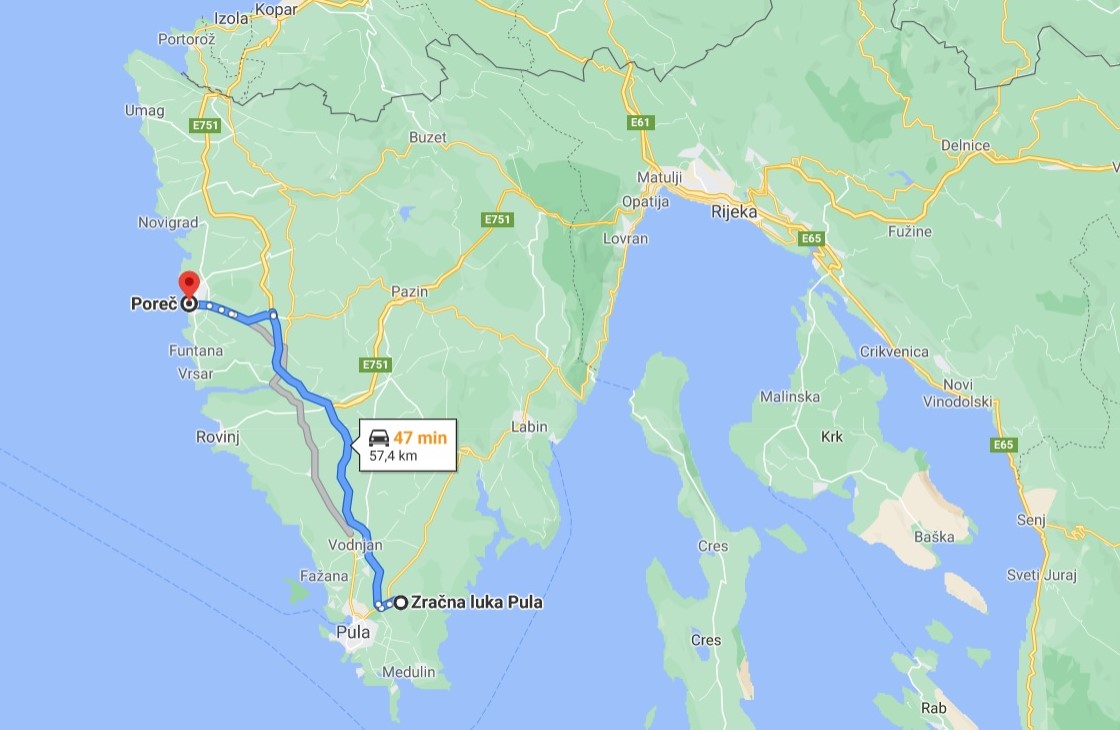
Check more cheap and quick ways to get from Pula Airport to Poreč here.
Rijeka Airport – The second closest Croatian airport to Poreč is Rijeka Airport, situated on the island of Krk, which is connected with the Croatian land by bridge. It is located about 30 kilometers from the center of Rijeka. Just like at the Pula Airport, the Rijeka Airport also offers shuttle bus services to the Rijeka city center, shortly after arrival of airplanes. However, during winter months, there's no regular shuttle service, but only service on demand from/to Rijeka and Omišalj on Krk. From Rijeka, you can take a bus to Poreč, and you can find more details about that route later in the article.
If you are traveling from Rijeka Airport to Poreč by car, you can rent a car at the Rijeka Airport, from where you'll get to Poreč in an hour and 45 minutes. The car route from Rijeka Airport to Poreč is about 115 kilometers, of which 75 kilometers is the highway (Istrian Y), and this is shown on the photo below. Find more info about Poreč to Rijeka by car later in the article.
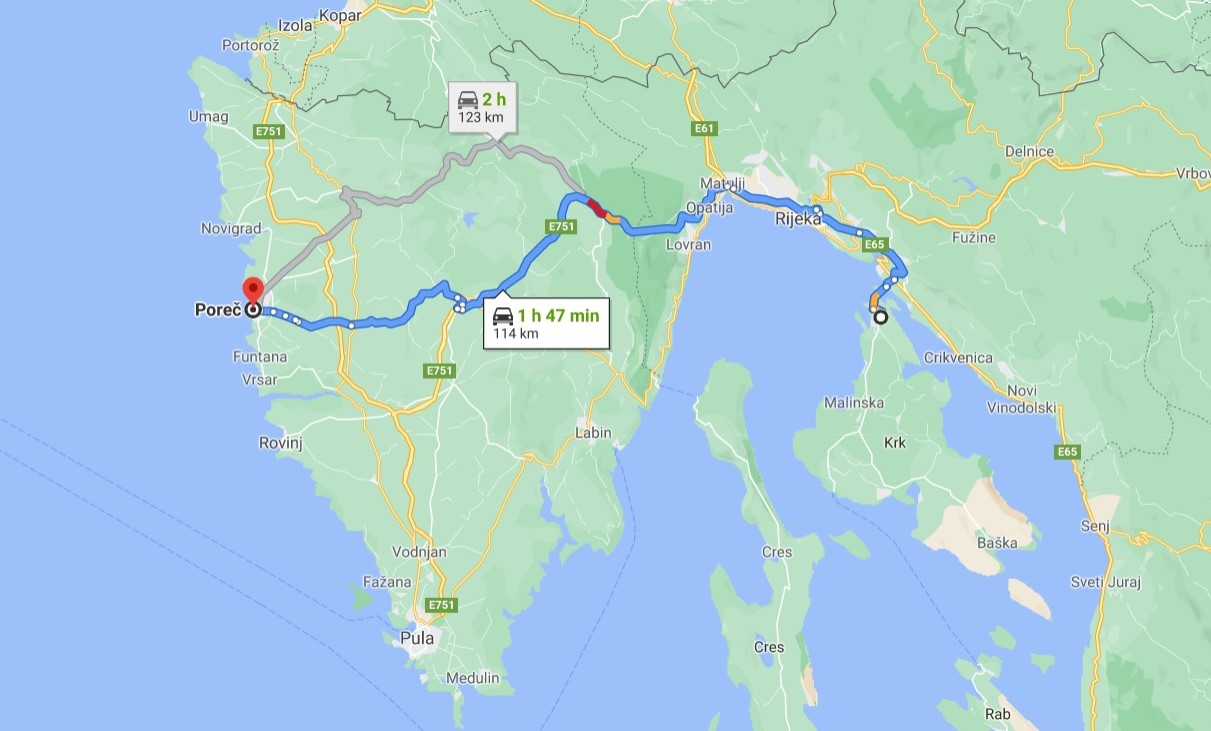
Check more cheap and quick ways to get from Rijeka Airport to Poreč here.
Other nearer airports to Poreč are Zagreb Airport, Ljubljana Airport, Trieste Airport, Treviso Airport and Venice Airport.
How far is Porec from Rijeka?
Poreč is 102 kilometers from Rijeka, and it takes an hour and 25 minutes of driving along the Istrian Y highway and local road by car. Of course, the traffic conditions should be taken into account, because during the season, the traffic can be increased which prolongs the time of traveling.
To go from Rijeka to Poreč by car, you can take the Istrian Y highway from Matulji near Rijeka and exit it in Rogovići near Pazin, from where you must continue to Poreč along the local road. Note: A toll is charged on the route from Rijeka to Pazin and costs 37 kunas for the first vehicle category. However, if you do not fancy paying a highway toll, and you'd like to stop at the Učka National Park along the way, you can take a local road D48 or D44 local road bypassing the Istrian towns of Buzet and Motovun. If you want to go along the eastern Istrian coast, you can take the local road number D66 to get from Rijeka to Poreč.
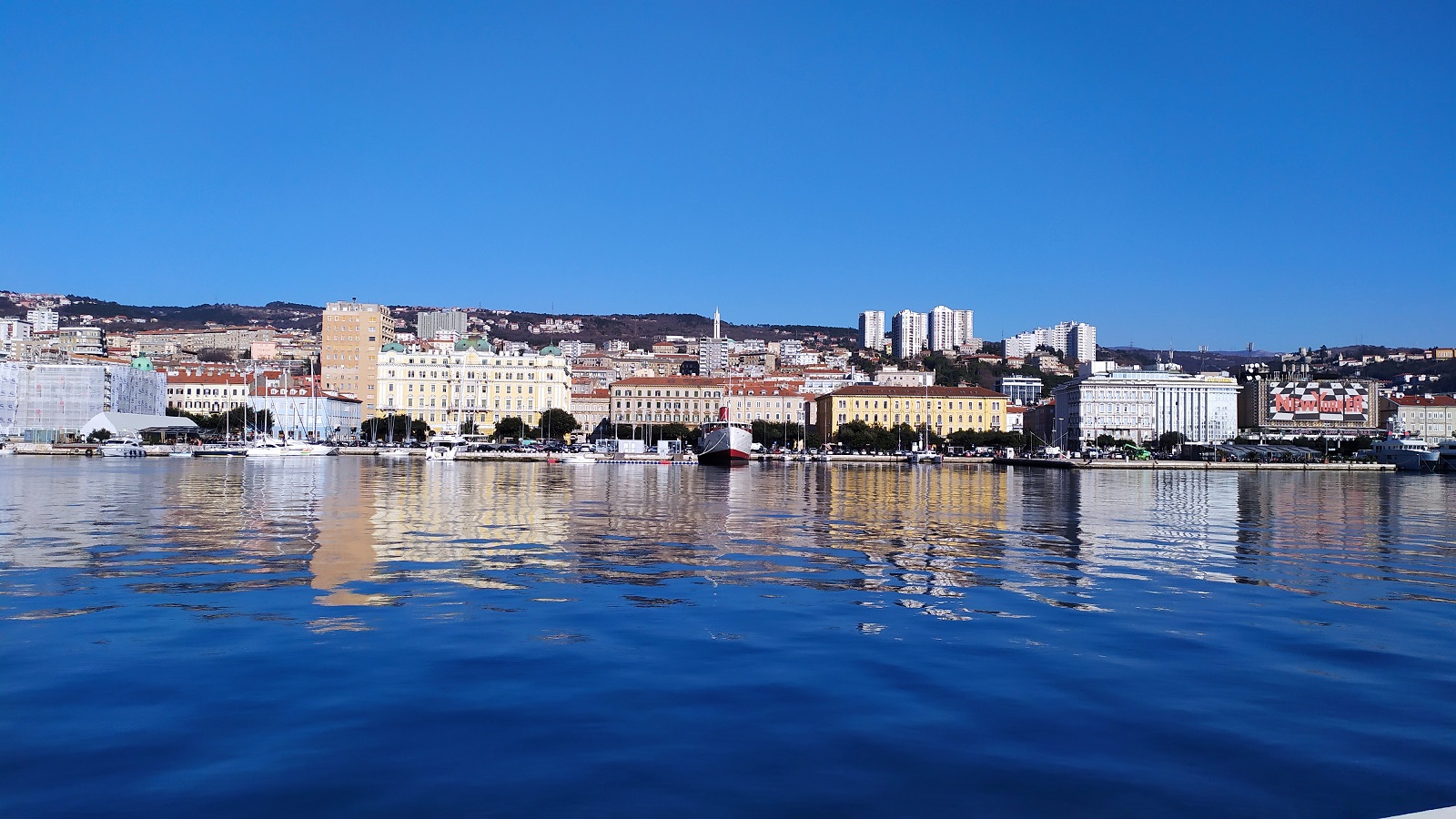
Rijeka / Donatella Pauković
Suppose you decide to take a bus from Rijeka to Poreč. In that case, there are several daily bus lines provided by Arriva, Flixbus, and other Croatian bus operators throughout the year and day. During the summer tourist season, the bus lines from Rijeka to Poreč are more frequent. It takes about an hour and a half from Rijeka to Poreč by bus, depending on the traffic conditions.
How far is Porec from Rovinj?
Poreč is 42 kilometers away from Rovinj, and you can quickly get there by bus in 45 minutes, and even faster by car. During the high summer season, there can be more traffic, so traveling time can vary. Since these two Istrian towns are so close, there are also boat lines connecting them.
Ferry from Rovinj to Poreč served by TriesteLines runs twice per week in the high summer season but does not operate outside the season. The journey takes 30 minutes and is only a foot-passenger ferry. Neither pets nor bikes are permitted onboard. Due to the coronavirus pandemic, there are likely to be many alternations and cancellations of the ferry schedules, so you will have to double-check all information. The TriesteLines operates daytime connections exclusively during summer, from Trieste to and between the port of Piran in Slovenia and the ports of Poreč, Rovinj, and Pula in Croatia.
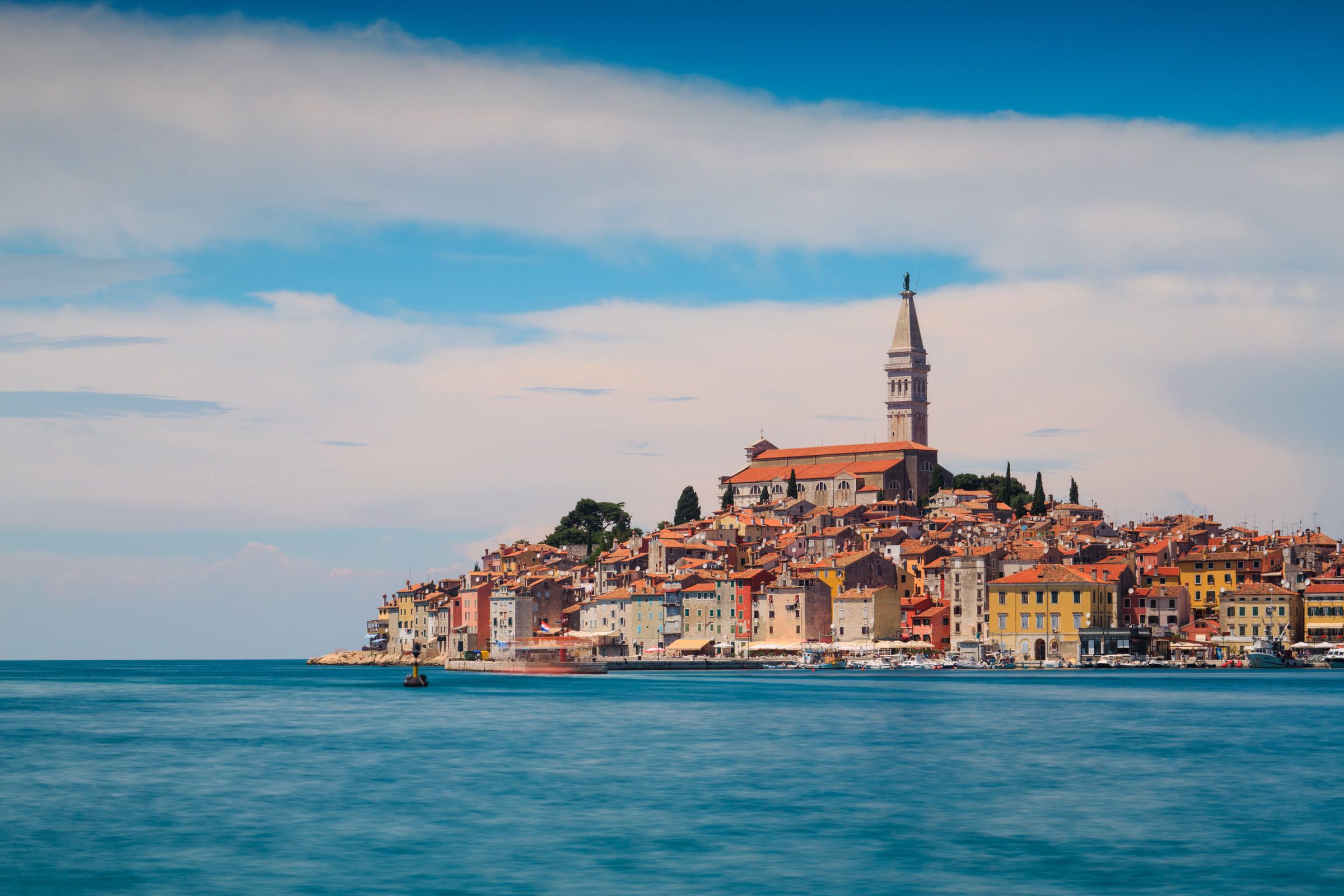
Rovinj / Romulić and Stojčić
If visiting only one town, you can easily book a one-day trip to another city. Poreč and Rovinj are separated by the Lim Bay (Lim Fjord), created as a rias of the river Pazinčica which in the past flowed into the Adriatic Sea, which today sinks in the Pazin Cave near Pazin. Hence, the road is enjoyable whether you ride a boat or car.
Several bus lines are running between Rovinj and Poreč every day, and during the summer season, there are even more of them. Bus lines from Rovinj to Poreč and in the opposite direction can be found here. You can also take the taxi from Rovinj to Poreč or find other transfer options.
How far is Porec from Dubrovnik?
Considering the fact that Dubrovnik, due to its separation and distance in the southernmost part of Croatia, is one of the hardest cities to reach in Croatia, it is quite far away from other parts of Croatia outside Dalmatia, including from Poreč. Since Poreč is 691 kilometers away from Dubrovnik, there are no direct bus lines between the two cities, but the alternative travel option would be through Rijeka. There are several bus lines operating from Dubrovnik to Rijeka, and Rijeka and Poreč are very well connected with bus lines, as explained earlier in the article.
A few bus lines from Dubrovnik to Rijeka operate throughout the year, while during the summer season, there are even more of them. The journey takes about 12 hours.
If you decide to take a car ride from Dubrovnik to Poreč, it will take about 7 hours and 50 minutes of traveling. For more details about crossing the Croatian-Bosnian border near the Bosnian town of Neum, check our dedicated article. From Dubrovnik, you can drive along the Croatian coast, i.e., the Jadranska Magistrala (D8 state road), and connect to the E71/E65 highway (A1 in Croatian) all the way to the junction Žuta Lokva in Lika (and pay a toll). From there, you can again take a local road and Jadranska Magistrala to Rijeka, where you can connect to the Istrian Y highway (as explained earlier in the article).
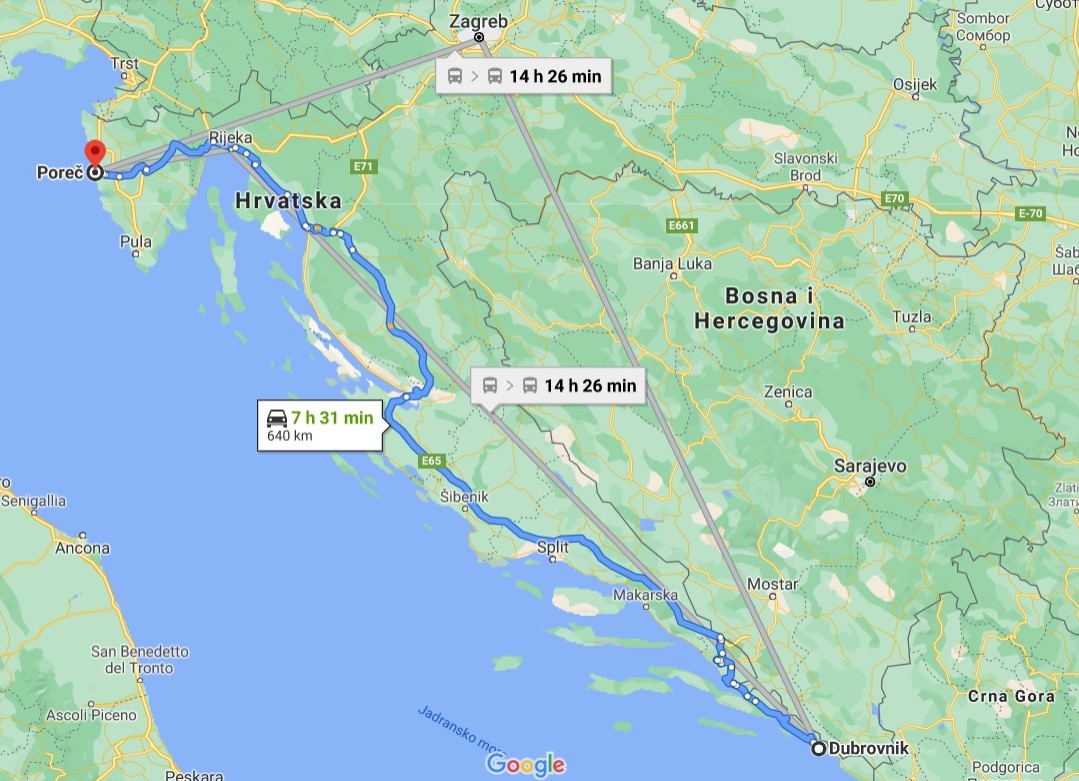
There are no ferry lines between Dubrovnik and Poreč either, nor between Dubrovnik and Rijeka.
How far is Porec from Split?
The distance between Split and Poreč is 451 kilometers, and just like with Dubrovnik, there are no bus lines connecting these two Croatian cities. Also, Poreč can be reached from Split by bus lines through Rijeka, as well as by car and highway.
How far is Porec from Zagreb?
Poreč is 250 kilometers away from Zagreb, and you can quickly get there by numerous bus lines throughout the year, as well as by a personal vehicle. If coming from the continental Croatia, Istria and Kvarner are the closest seaside destinations and easiest to reach.
How far is Porec from Osijek?
As with Zagreb, Poreč is also well connected with Osijek by bus lines operating throughout the year. Poreč is 530 kilometers away from Osijek, and it takes five and a half hours to get there by car. Some bus lines going from continental Croatia to Poreč stop in other smaller Croatian towns, such as Novska, for example, providing connected lines to Poreč. Check all bus lines to Poreč with Flixbus, Arriva, and other Croatian bus lines.
If you'd like to know the exact distances between cities in Croatia, you can check them all at one place (in Croatian).
To follow the People Also Ask Google about Croatia series, click here.
People Also Ask Google: What Language Do They Speak in Istria?
February 25, 2021 – Continuing the TCN series answering the questions posed by Google's People Also Ask function, one that confuses many: what language do they speak in Istria?
Where is Istria?
Istria is the biggest and northernmost peninsula in Croatia and the Adriatic. It lies in the northern part of the Adriatic, in Croatia, Slovenia, and Italy. Geographically, 90 percent of the Istrian peninsula is part of Croatia, while nine percent includes Slovenia.
Most Croatians live in the Croatian part of Istria (68,33 percent), while minorities make up a quarter of the population, of which Italians are the biggest group – six percent. In the Slovenian part, Slovenes make up the absolute majority population. Only one percent of the Istrian surface is part of Italy. It includes only two small municipalities near Trieste, of which the majority of the inhabitants in one are Slovenes and in the other are Italians.
According to the 2011 census, 25 percent of people in Croatia declared their regional identity as Istrian, of which 12 percent live in Istria County, one of 20 Croatian counties. The name for a regional identity developed by a part of the citizens of Istria, mainly its Croatian part, is Istrianism. Thus, regional identification is more pronounced in Istria than in other parts of Croatia.
How many official languages are there in Istria?
Since there are two official languages in Istria – Croatian and Italian – Istria is a bilingual community. Italian is the second official language in Istria since 1994, and the Constitution guarantees the rights to bilingualism in Croatia. Out of 208,000 inhabitants in Istria County, 180,000 stated that their mother language was Croatian, while 14,000 of them stated Italian as their mother language.
Native speakers of Italian in Croatia according to the 2011 census / Wikipedia
In addition to Croatia's Constitution, local legislation, i.e., the Istrian County Statute equates these two languages in public use and encourages learning Italian as an environmental language. The Istrian bilingual community includes both smaller and larger Istrian settlements.
Due to this bilingualism, Istria is a specific region in Croatia, so there are many Italian public institutions (schools, kindergartens, etc.). Istria has a long tradition of education in another language. Besides, the environment itself is bilingual, which means that Italian is not only spoken by Italians but people of other nationalities too, including Croatians. Also, Istria is historically, culturally, and economically strongly connected with Italy.
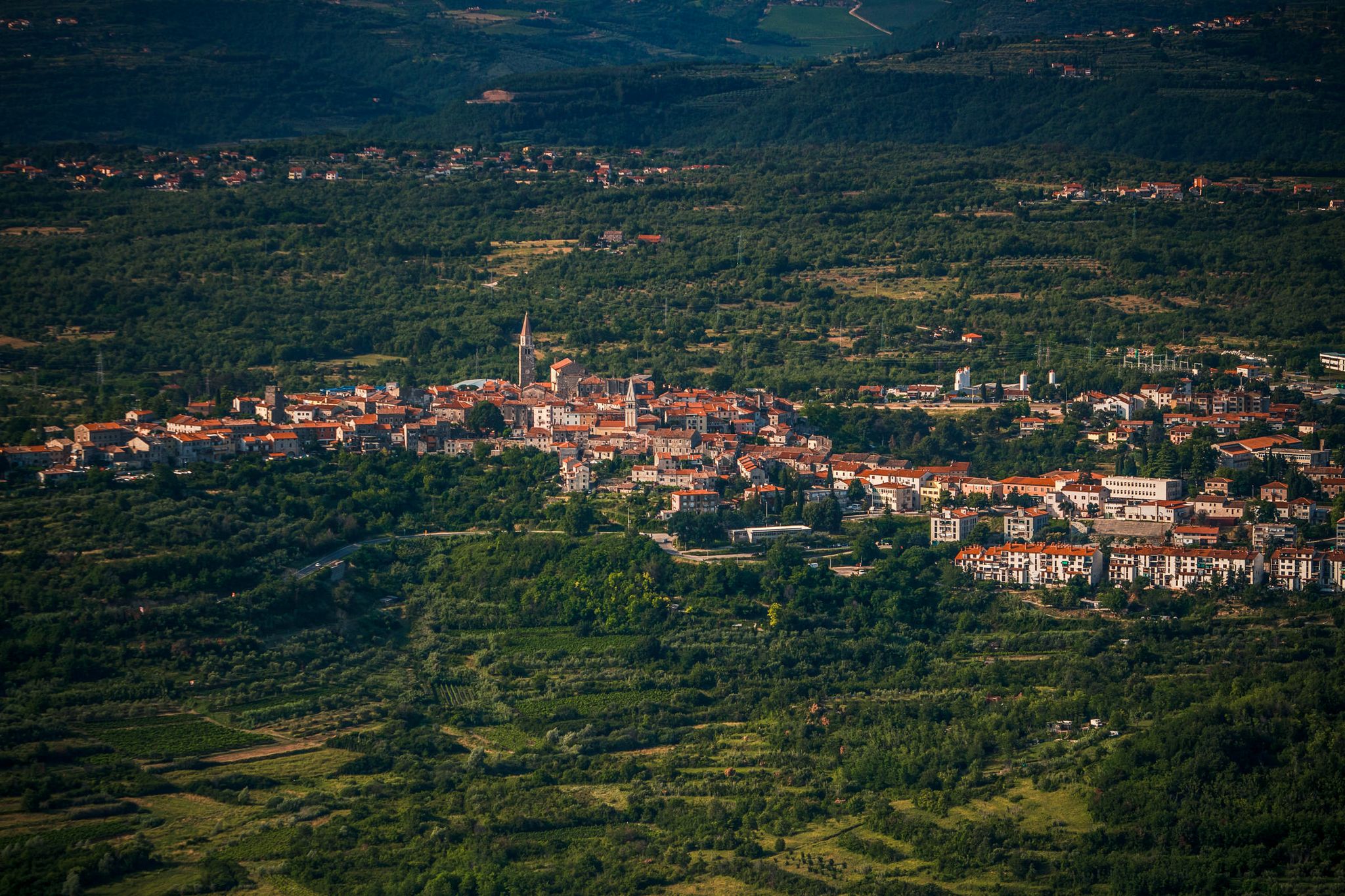
Buje, Istria / Copyright Romulić and Stojčić
Reputable cultural, scientific, pedagogical, and artistic minority institutions have been established in Istria: Italian Drama in Rijeka (Dramma Italiano), Center for Historical Research in Rovinj (Centro di Ricerche Storiche), Italian department at the Faculty of Philosophy and departments in Italian for teacher education at the College of Teacher Education in Pula. Also, La Voce Del Popolo, a daily newspaper in Italian owned by the Italian Union (Unione Italiana), is published in Rijeka.
During his visit to Istria last year, Italian Ambassador to Croatia, Pierfrancesco Sacco, said that Italians in Croatia feel at home, like Croats in Italy. This is especially evident in Istria and Pula, where there are a deep friendship and a desire to find new cooperation methods. On that occasion, the Mayor of Pula, Boris Miletić, said that the fundamental values, which have been nurtured in this area for decades, are openness, multiculturalism, and coexistence.
What language do they speak in Istria?
The vast majority of Istrians speak the Croatian language's Chakavian dialect, meaning they use the interrogative pronoun "ča." Only in some parts near the border with Slovenia, some people use the interrogative pronoun "kaj," so they are often mistaken for Kajkavians. Still, the structure and characteristics of these speeches are distinctly Chakavian.
Chakavian dialect is also spoken in Dalmatia. However, the Istrian Chakavian dialect is different from the Dalmatian one due to the numerous Italianisms. It is also difficult to understand it in the rest of Croatia. The most widespread Chakavian dialect in Istria is the Southwestern Istrian dialect. There are also Buzet, Northern, Central, and Southern Chakavian dialects in Istria.
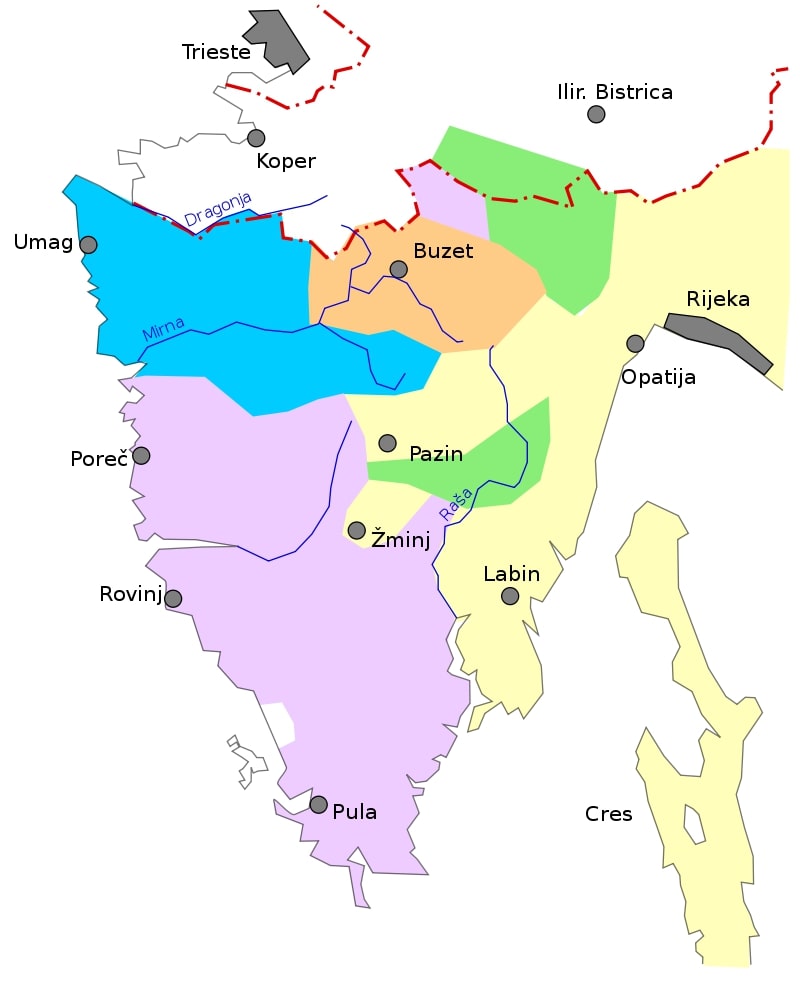
Chakavian dialects in Istria: Southwestern (purple), Buzet (orange), Northern (yellow), Central (green), and Southern Chakavian (blue) / Wikipedia
The aforementioned Italian minority lives in some towns on the Istrian west coast and in some villages near Buje, and they speak Italian. In the Slovenian part of Istria, the Slovenian language is spoken.
In the eastern part of Istria, at the foot of the Ćićarija mountain, in several smaller villages live Istro-Romanians or Ćići, a population of Romanian origin who speak their own Istro-Romanian language, which is a mixture of Romanian and Croatian. Today, many of them have adopted the Croatian language and are now considered Croats.
In addition to the dominant Croatian and Italian languages, other minority languages are spoken in Istria, namely Serbian, Bosnian, Slovenian, Albanian, and Macedonian. One can hear the Shtokavian dialect in Istria as well.
What language do they speak in Istria? Istro-Romanian language
Istria is home to two of the 20 most endangered languages in the world by UNESCO – the Istro-Romanian language and Istriot.
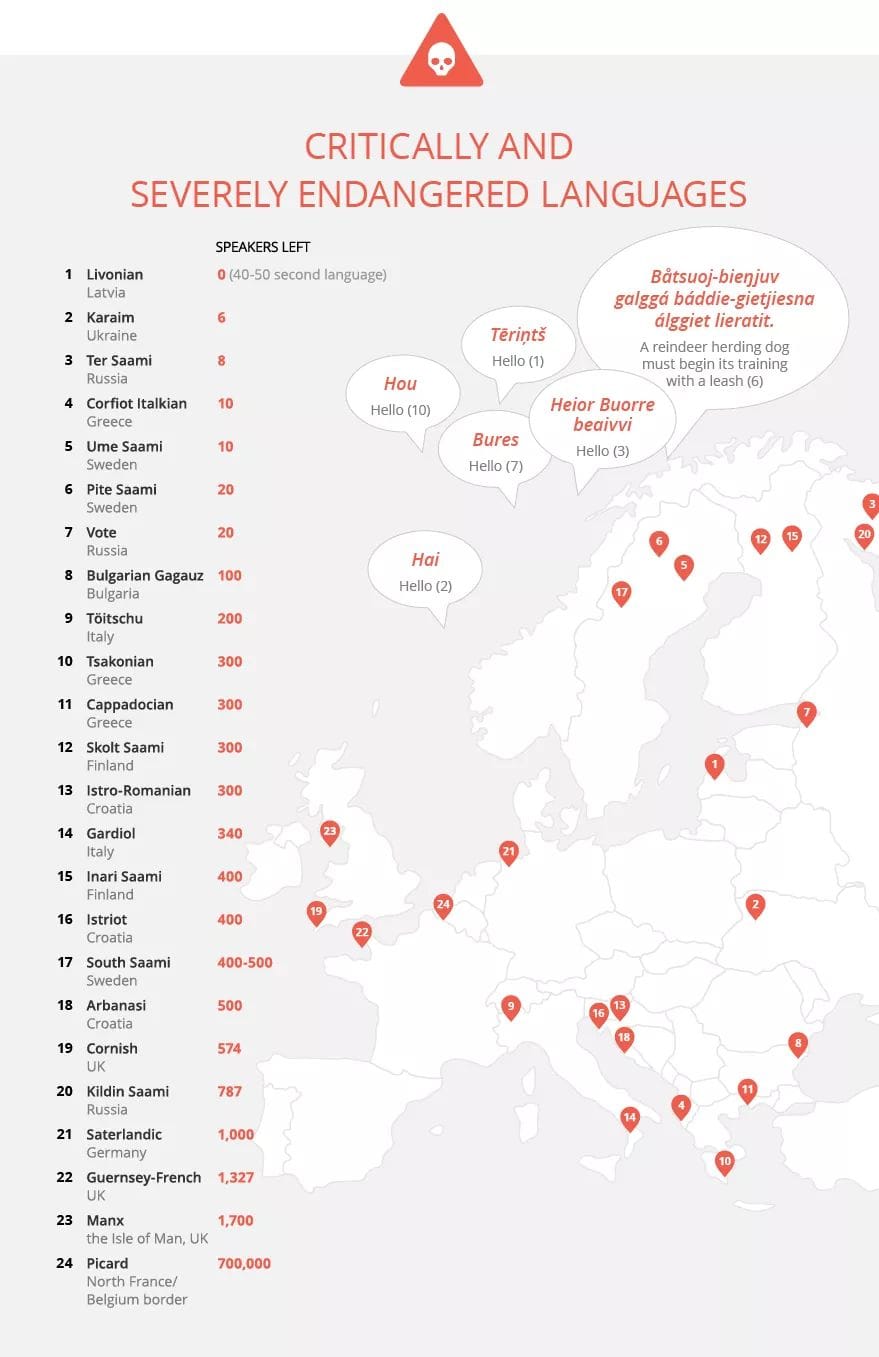
Istro-Romanian language is a Balkan Romance language spoken by only a few hundred people today in the northern Istrian villages of Žejane, Lanišće, and Šušnjevica. It is highly similar to the Romanian language, and for some linguists, the Istro-Romanian language is considered a dialect of Romanian. People in Istria who speak it are called Rumeri, Rumeni, Vlachs, or Istro-Romanians. Croats disparaging started to call them Ćići or Ćiribirci.
In the middle of the 15th century, the Ćiribirci were settled by Ivan VII Frankopan from Velebit on the island of Krk. Since the Ćići plundered Ivan Frankopan in northern Istria in 1463, when their name is first mentioned, it is believed that they immigrated to Istria from Krk. However, Istro-Romanians are not officially recognized as a national minority in Croatia.
The most interesting fact about the Istro-Romanian language is that it was spoken by one of the most famous inventors of all time – Nikola Tesla – even though he wasn't even aware of the ethical existence of the Istro-Romanians. Since elementary school, Tesla was able to speak the Istro-Romanian language, despite the fact that Istro-Romanian was not taught in schools in those years. It was only spoken by a few thousands of people in Istria and Lika, and he could have probably learned it in his family.
Although Telsa always considered himself a Serbo-Croat, one Romanian academic, Professor Moraru, thought Tesla was an Istro-Romanian. When Romanian scholars contacted Tesla in the early 20th century and explained he was of Istro-Romanian roots, he allegedly showed amazement but did not comment on that matter. Therefore, Nikola Tesla has never denied the possibility of his Istro-Romanian origins.
What language do they speak in Istria: Istriot language
Istriot language, often confused with Istro-Romanian language, is a Romance language spoken by about 400 people in the southwestern part of Istria, particularly in Rovinj and Vodnjan. Still, it is also preserved in Bale, Fažana, Galižana, and Šišan. It should not be confused with the Istrian dialect of the Venetian language either.
According to some estimates, the Istriot has only a few dozen active speakers and about 300 people who understand it and can use it in part. It is a Romance language related to the Ladin populations of the Alps, currently only found in Istria. Its classification remained mostly unclear, but in 2017, it was classified with the Dalmatian language in the Dalmatian Romance subgroup.
Historically, its speakers never referred to it as "Istriot language." Instead, it had six names after the six towns where it was spoken: in Vodnjan it was named "Bumbaro," in Bale "Vallese," in Rovinj "Rovignese," in Šišan "Sissanese," in Fažana "Fasanese," and in Galižana "Gallesanese." The term Istriot was coined by the 19th-century Italian linguist Graziadio Isaia Ascoli.
Younger Italians in these places mostly understand Istriot, but they rarely use it, and Croats rule this idiom very badly or not at all. It is most endangered in Fažana, and it seems that it is most strongly maintained in Bale.
What language do they speak in Istria: Istrian dialect in Slovenia
Slovene dialects are separated into a few groups, and the Istrian dialect, spoken in Slovene Istria, falls in the Littoral dialect group. Istrian dialect is spoken in the rural areas of Koper, Izola, and Piran. The Slovenes living in the Italian municipalities of Muggia and San Dorligo della Valle, as well as in the southern suburbs of Trieste (Servola, Cattinara). In Croatia, it is also called the Slovenian-Istrian dialect.
The dialect has been influenced by Croatian as spoken in Buzet and Ćićarija and is further subdivided into the Rižana and Šavrin Hills subdialects.
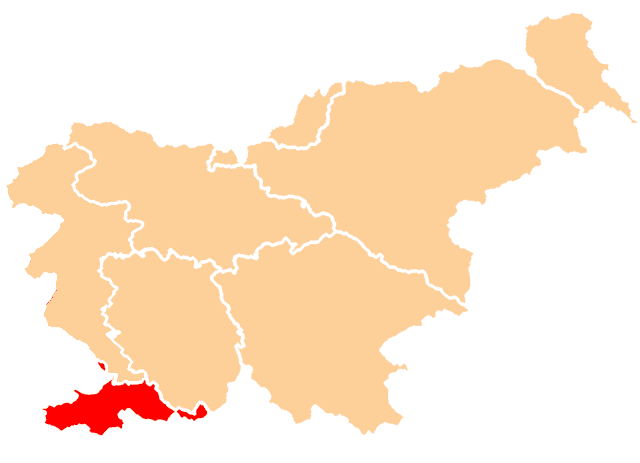
Slovene Istria / Wikipedia
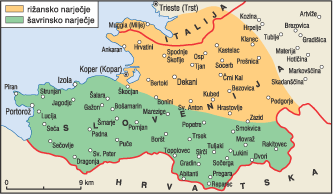
Rižana subdialect (yellow) and Šavrin Hills subdialect (green) / Wikipedia
The Rižana subdialect is spoken in the northern part of Slovenian Istria, in the Rižana Valley east and north of Koper, including the settlements of Bertoki, Dekani, Osp, Črni Kal, Presnica, Podgorje, and Zazid. In Italy, Rižana subdialect is spoken in most of the municipalities of San Dorligo della Valle and Muggia south of Trieste and some southern suburbs of Trieste, especially Servola.
The Šavrin Hills subdialect is spoken in the Šavrin Hills south of a line from Koper to the south of Zazid. It includes the settlements of Koper, Izola, Portorož, Sečovlje, Šmarje, Sočerga, and Rakitovec.
The mixture of Šavrin dialects proves the closeness to the Čakavian dialects, and the Rižana sub-dialect is entirely Slovene. There are many Romance loanwords in both sub-dialects linguistic legacy, mostly Venetian, Trieste-Romance, and Italian.
Why do locals speak Italian?
As previously explained in the second paragraph of this article, Croatians in Istria speak Italian because it has been implemented in public speech and institutions for such a long time.
As Marija Črnac Rocco, head of the Rovinj City Council office, explained for Novosti portal, the Italian national minority in Istria (and certain other Croatian parts) is autochthonous, meaning that the Italian component has always lived and existed in these territories.
Likewise, Italian was the official language during all the various reigns in Istria until the end of the Second World War – the Venetian Republic, the Kingdom of Austria, Napoleon's rule, the Austro-Hungarian Monarchy, and the Kingdom of Italy.
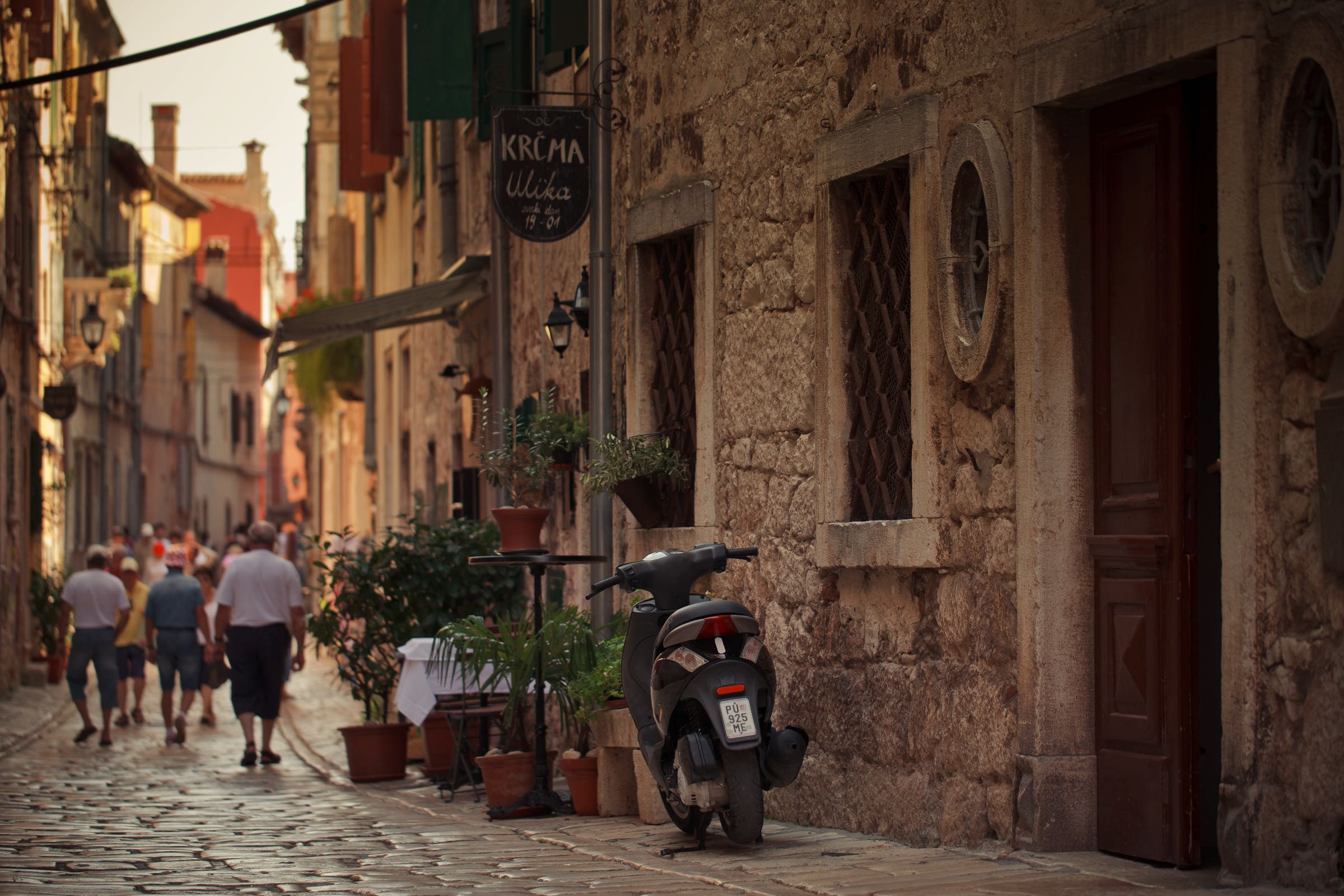
Rovinj, Istria / Copyright Romulić and Stojčić
After the Second World War, Istria was annexed to the Federal Republic of Slovenia and Federal Republic of Croatia, namely the Socialist Federal Republic of Yugoslavia. The Italian national community's position, which became a minority in a significant part of Istria due to sad post-war circumstances, has been the subject of consideration and securing the rights of many international agreements.
Therefore, the equal use of the Croatian and Italian languages in Istrian County and many towns and municipalities in Istria is undoubtedly a legal obligation, which for most Istrians is both a moral duty and a civilizational achievement of which they are proud.
Bilingualism in Istria is not only lived in translated official documents, it is lived in families, on the street, in everyday communication, in traditions, and customs. Bilingualism in Istria is natural, spontaneous, and it is perceived as an advantage and a richness.
Istria in Italian and Croatian: some important bilingual place names
Istrian County has ten cities and 31 municipalities. When you drive through Istria, you will notice bilingual traffic signs, including both Croatian and Italian names of towns and municipalities, such as:
- Buje – Buie
- Buzet – Pinguente
- Fažana – Fasana
- Grožnjan – Grisignana
- Labin – Albona
- Medulin – Medolino
- Motovun – Montona
- Novigrad – Cittanova (d'Istria)
- Pazin – Pisino
- Poreč – Parenzo
- Pula – Pola
- Rovinj – Rovigno
- Umag – Umago
- Višnjan – Visignano
- Vodnjan – Dignano
- Vrsar – Orsera
- Žminj – Gimino
As such, in Croatian, we say Istra, and Italians say Istria.
When was Istria a part of Italy?
Istria was a part of the Kingdom of Italy after the First World War when the Austro-Hungarian Empire disintegrated. In 1920, with the Rapallo Peace Treaty, Istria, the Croatian city of Zadar, as well as the islands of Lastovo, Cres, and Lošinj, belonged to Italy. Rijeka belonged to Italy in 1924. During the Second World War, the population organized a movement of resistance to fascism by Benito Mussolini. Therefore, after the war, Istria became part of Yugoslavia, where it remained until its disintegration in the early 1990s when the Istrian peninsula was divided by Croatia and Slovenia.
During the 19th and the first half of the 20th century, a significant Italian linguistic and ethnic community in Croatia mainly concentrated on the west coast of Istria and in Rijeka, Dalmatian, and Kvarner towns. After the First and especially after the Second World War, most Croatian Italians emigrated to Italy.
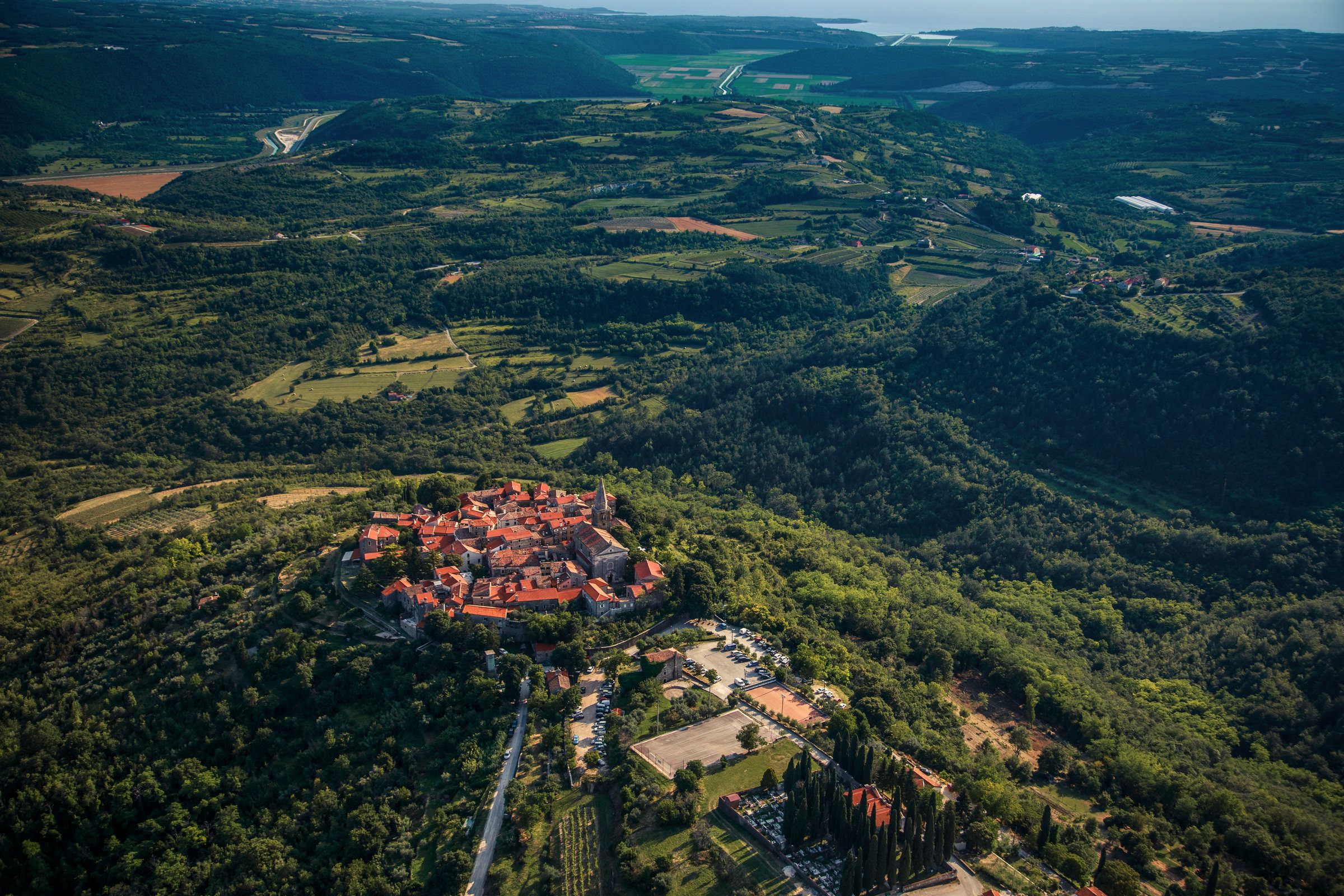
Grožnjan / Copyright Romulić and Stojčić
Today, almost three-quarters of all Italians in Croatia live in Istria County. The only municipality in Croatia where Italians make up a relative majority is Grožnjan in Istria, with 39.4 percent ethnic Italians in the population and 56 percent of the people whose mother language is Italian.
The Italian community's position and rights are guaranteed by the Constitutional Law on Human Rights and the Rights of Ethnic and National Communities of the Republic of Croatia, as well as various international agreements and treaties.
To follow the People Also Ask Google about Croatia series, click here.
Holiday Homes in Istria Already Full, Expected Excellent Summer Season
February 23, 2021 – Istrians are hoping that the upcoming season will be significantly better than last year, with holiday homes in Istria already fully booked.
As HRT reports, Istria is already ready for the tourist season, which Istrians hope will be significantly better than last year. They are most optimistic due to the proximity to the most important markets from which their guests come by car. Apart from the coast, the peninsula's interior is becoming more and more interesting for tourists.
Five hundred tourists are resting this winter in Poreč, mostly athletes. Most of them have been guests in Istria for many years.
"You have hundreds of kilometers of beautiful mountain bike trails for training, you are close to us, we do not depend on airplanes, we come quickly by car, we stay at sea, you are excellent hosts for everything we need," said Matthias Krick from Germany.
In the long-term tourist champion of Croatia, Poreč, they are ready for an excellent summer season. The announcements are great.
"It's going very well. There are bigger announcements for Easter, May 1, and later 'rush hour.' We are preparing as if the season will be great, and we strongly believe in that," says Nenad Velenik from the Tourist Board of Porec.
Phones in the tourist boards of central Istria are constantly ringing. The Istrian green oasis has never been bigger bait.
"The advantage is that the holiday homes in our county are isolated, scattered on the beautiful hills in the greenery. After the lockdown and isolation in big cities, especially in Germany where our guests come from, people wanted nature, beauty, and spending holidays with their loved ones," says Sanja Kantaruti from the Central Istria Tourist Board.
And travel agencies are also ready, just waiting for the opening of borders and transparent rules.
"We even have questions from guests about whether renters are vaccinated, what the vaccination situation is in Croatia, what the current situation is. They want to be safe, travel safely, and get home safely. We hope that all this will be resolved and that the borders will be opened, and we are ready," said Alen Babić, owner of a travel agency in Poreč.
A favorite and close destination of Germans, Austrians, Italians, and Slovenes, Istria is ready to present the tourist season well in not at all enviable circumstances, just like it did last year.
For the latest travel info, bookmark our main travel info article, which is updated daily.
Read the Croatian Travel Update in your language - now available in 24 languages.
Pula Tree Planting: City Handing Out Hundreds of Trees to Residents
February the 22nd, 2021 - Pula tree planting is getting underway as residents of this beautiful Istrian city are given various trees to plant in their hundreds to plant across the city.
As Morski writes, by distributing 132 fruit trees to the city's residents and planting dozens of new trees on public green areas in various areas, the Pula tree planting mission has got off to an excellent start. As part of this Pula tree planting action, citizens will be given fruit trees, 50 olive trees, 50 fig trees, 20 pomegranate trees, 30 hazelnut trees and 32 two-year-old chestnut trees.
''Planting trees on public green areas and within private gardens and back gardens contributes to increasing the green fund of the city and the protection and preservation of the environment, all of which are activities among the priorities of the City of Pula. In addition to the positive aspect in terms of enriching the green fund of the city, residents will be able to enjoy the benefits of the fruit these trees will bear, which, we're sure, they'll nurture with full care and attention,'' said the Mayor of Pula, Boris Miletic.
Even before the Pula tree planting mission gets started at the hands of citizens in their gardens and in other areas, the employees of Horticulture Pula Herculanee will, following favourable weather conditions, start planting even more palm trees, sycamore, holm oak and pine trees within the city, as replacement trees for previously removed or dead trees. The activities of planting ornamental trees will continue on other public green areas in which, as part of the action "Plant a tree, don't be a stump!", citizens will be able to actively participate. The time and location of this Pula tree planting mission will be announced the day before it begins.
It should be noted that as part of the maintenance of public green areas, these actions are performed at the request of residents/tenants and building managers.
The City of Pula has emphasised that the protection and preservation of the city's green areas are important determinants in the spatial planning system of the City of Pula and its representation, in the context of monitoring the state of the green fund and taking measures to increase it, is a common activity in planning and implementing specific activities.
As much as 40 percent of the surface of Pula is covered by green areas, and CO2 emissions have been significantly reduced as a result of that.
''Considering that the city is a "living tissue" and is developing every day, new public green areas are being formed during the implementation of the city's construction and maintenance projects and as such have become an integral part of its regular maintenance. In the last ten years alone, thousands of trees and shrubs have been planted in the area of Pula, which has significantly reduced CO2 emissions,'' read a statment from the City of Pula.
''Developing awareness of the importance of greenery in relation to people's overall quality of life, achieving the goals of environmental protection and sustainable development and reducing environmental pollution is a guiding thought during the implementation of various activities, especially when it comes to working with young people and associations.
"Plant a tree, don't be a stump."
Pula was one of the first cities to engage heavily in planting new trees as part of this initiative, and about a hundred trees were planted on public green areas and on the grounds of kindergartens and schools, and the same number were donated to fellow citizens to plant on their properties.
It's also worth recalling the specific indicators which, at the level of spatial plans, indicate a very high representation of green and recreational areas when compared to the representation of plans for other purposes.
The fact that Pula is covered in so much greenery speaks in favour of the Istrian city's commitment to the importance of greenery, which significantly exceeds the recommendations of representation set by the European Commission (EC) as well as specific indicators at the level of large cities in Croatia and at the European Union level.
For the latest travel info, bookmark our main travel info article, which is updated daily.
Read the Croatian Travel Update in your language - now available in 24 languages.
People Also Ask Google: Is Porec in Croatia Worth Visiting?
February 21, 2021 – Continuing the TCN series answering the questions posed by Google's People Also Ask function. Is Porec in Croatia worth visiting? The shortest answer would be – of course – and here are all the reasons why.
What is Porec like in Croatia?
Located on the west coast of the Istrian peninsula in Croatia, Poreč can most simply be described as a seaside town with many tourist attractions but also with a rich and indispensable cultural history. It is perhaps best known as the home of the Euphrasian Basilica (so-called Euphrasiana) from the 6th century, one of the seven UNESCO's world heritage sites in Croatia.
However, in the last few years, Poreč has been filling newspaper columns as one of the best cities to live in Croatia, which has been contributed to by its economic, cultural, and social development. A famous tourist town that lives throughout the year? It seems like it could be. Since I have been spending almost every summer in Poreč since I was born, I would unquestionably like to get to know it better from the perspective of living in it. Maybe one day, but for now, I will focus on what I know Poreč is worth visiting for.
Historic center: Is Porec in Croatia worth visiting for culture and heritage?
Apart from the aforementioned Euphrasian Basilica, a must-see cultural site to visit, the whole old Poreč city core is a cultural monument. The peninsula on which the old town of Poreč is located hides historic traces dating back thousands of years. The main street that passes through it – Decumanus – is full of tourists in summer due to its numerous shops and restaurants. At the intersection with Cardo Street, the so-called Dekumanova Street reveals several Gothic and Baroque palaces.

The Euphrasian Basilica in Poreč is one of the most beautiful preserved monuments of early Byzantine art in the Mediterranean.
Built in the 6th century during Bishop Euphrasius, after whom it is named, the Euphrasian Basilica is famous for glittering mosaics dating from the 3rd century. The picture shows the Euphrasian Basilica's apse decorated with Byzantine mosaics.
At the entrance to Dekumanova Street from Sloboda Square, attention is drawn to the Pentagonal Tower, at the top of which is a restaurant. At the top of the nearby Round Tower overlooking the waterfront, tourists love to enjoy a cafe.
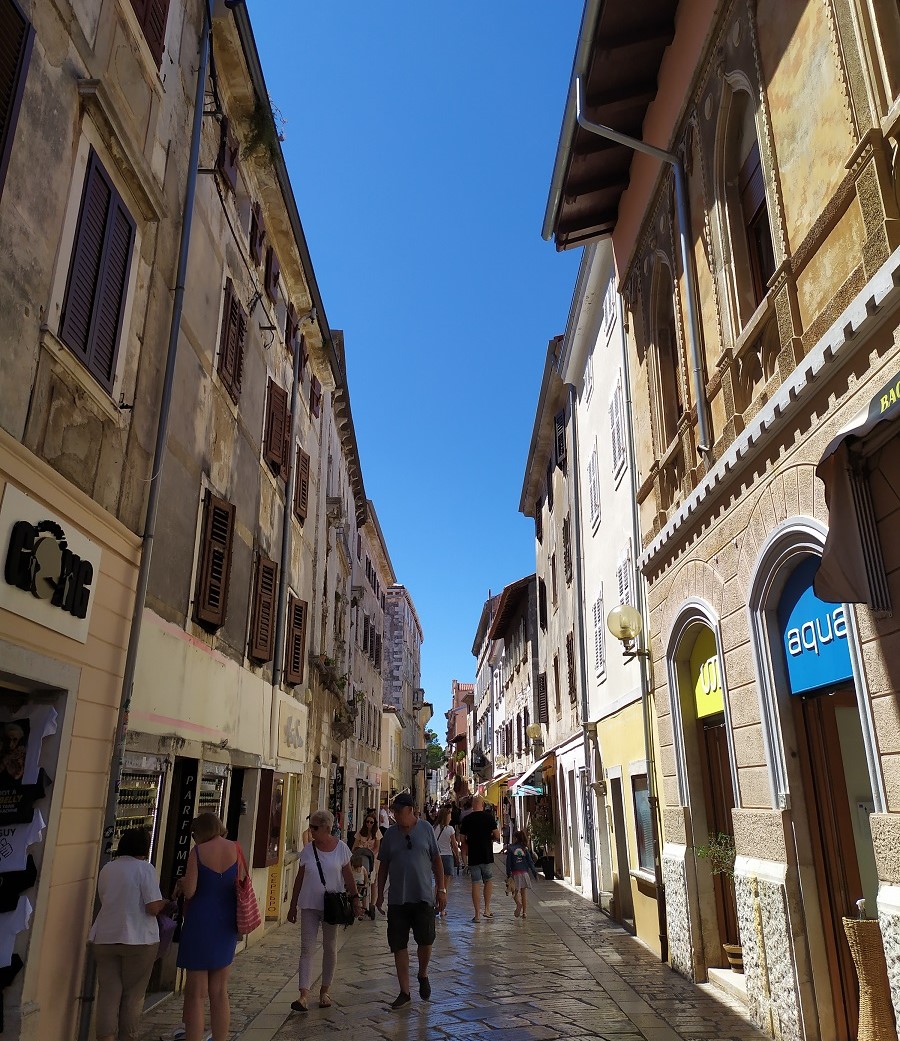
Dekumanova Street / Decumanus Street in Poreč
Evidence of life from ancient times is hidden near the oldest square of Marafor. Also, Poreč is the proud home of the largest Roman shrine in Istria, the Large Temple, and to the north of it are the remains of the Temple of Neptune.
For me, one of the usual evening activities in Poreč is a walk through the old town in the mentioned Decumanus Street, as well as along Poreč's lungomare or Ante Šonja Coast, with a romantic view of the north side of Poreč – Peškera Bay (where the city beach is located), Pical, and Materada. I call it the quiet side because there are no stands on it, for which the other part of the city is famous, just the open sea in front of you, with some lighthouse flashes.
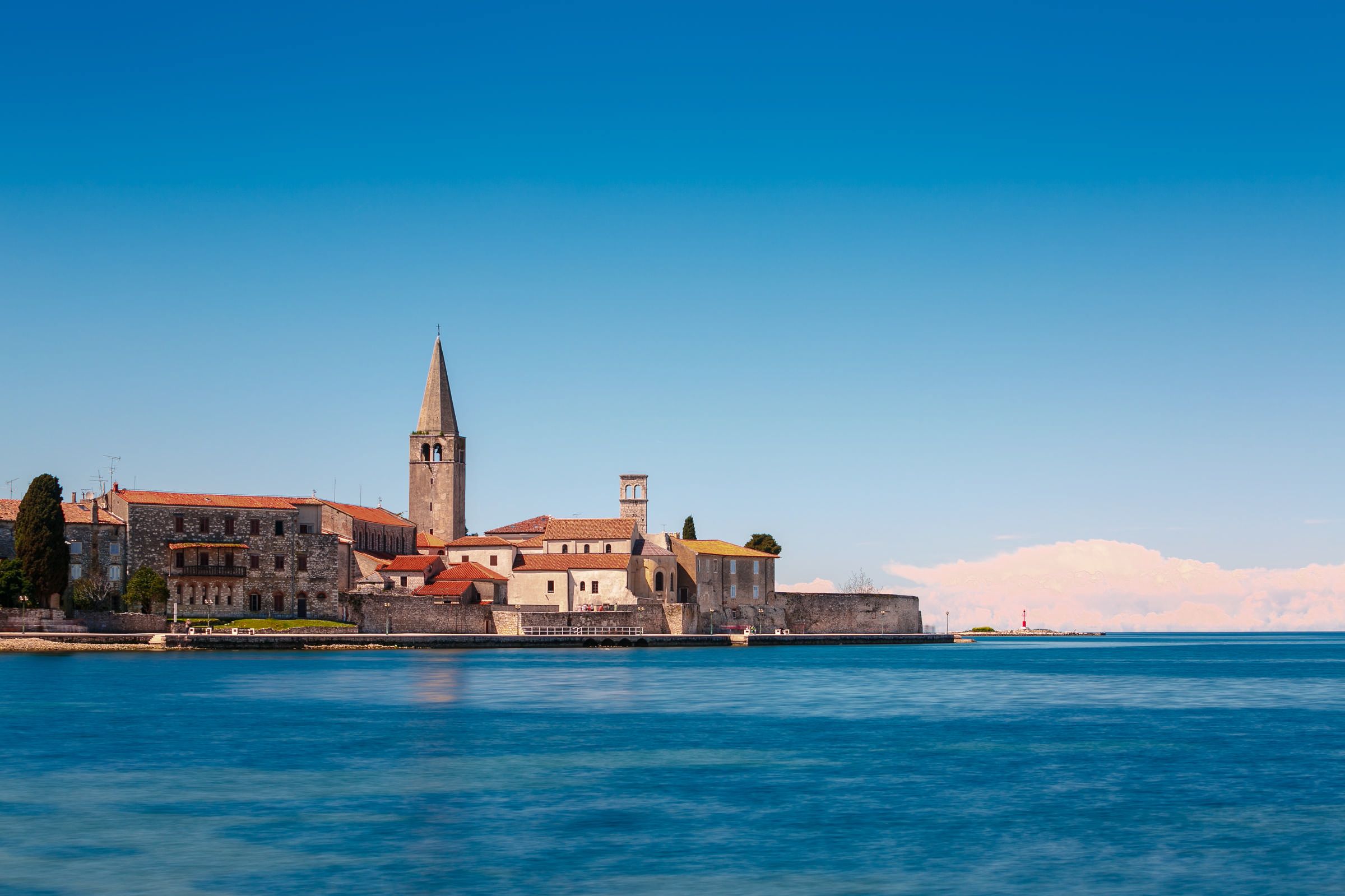
The old town of Poreč and Poreč lungomare / Romulić and Stojčić
I usually continue my walk along the coast to the newly renovated city waterfront, i.e., Marshal Tito's Coast, thus embracing the entire old core of Poreč. I admire numerous yachts, tourist boats, and fishing boats moored in the Poreč port along the waterfront side.
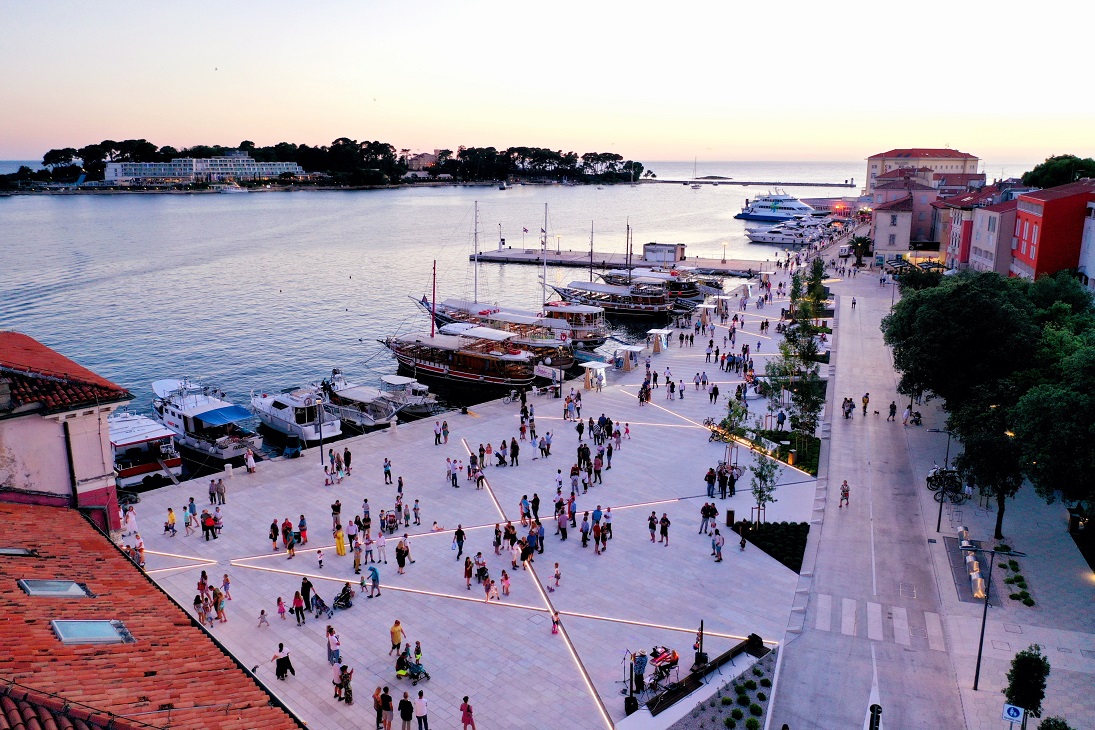
Last year, the Poreč waterfront, an integral part of the Poreč old town, got a new attire – new facilities with signposts to the old town's sights. / Poreč Tourist Board
Is Porec in Croatia worth visiting for beaches and sports activities?
I stayed in Poreč during all stages of my life – from a playful child, through a demanding teenager, to a serious student – and at no time was I bored in Poreč, nor my parents who have been spending their summers in this beautiful Istrian city for almost 30 years. As we are a family that likes a combination of active and lazy holidays, we love Poreč because we get both there – beautiful and clean beaches, as well as many cultural, gourmet, adventure, fun, and sports facilities.
As my all-time favorite activity is rollerblading (and as I'm not a fan of swimming), I enjoy long rides from the center of Poreč along beaches trails. There is a crystal clear sea on one side of the trail, while on the other side, there are various sports and catering facilities. The first beach to reach is Beach Brulo. Located in the mild Mediterranean and sheltered bay, surrounded by pine trees, it is ideal for a real summer vacation.
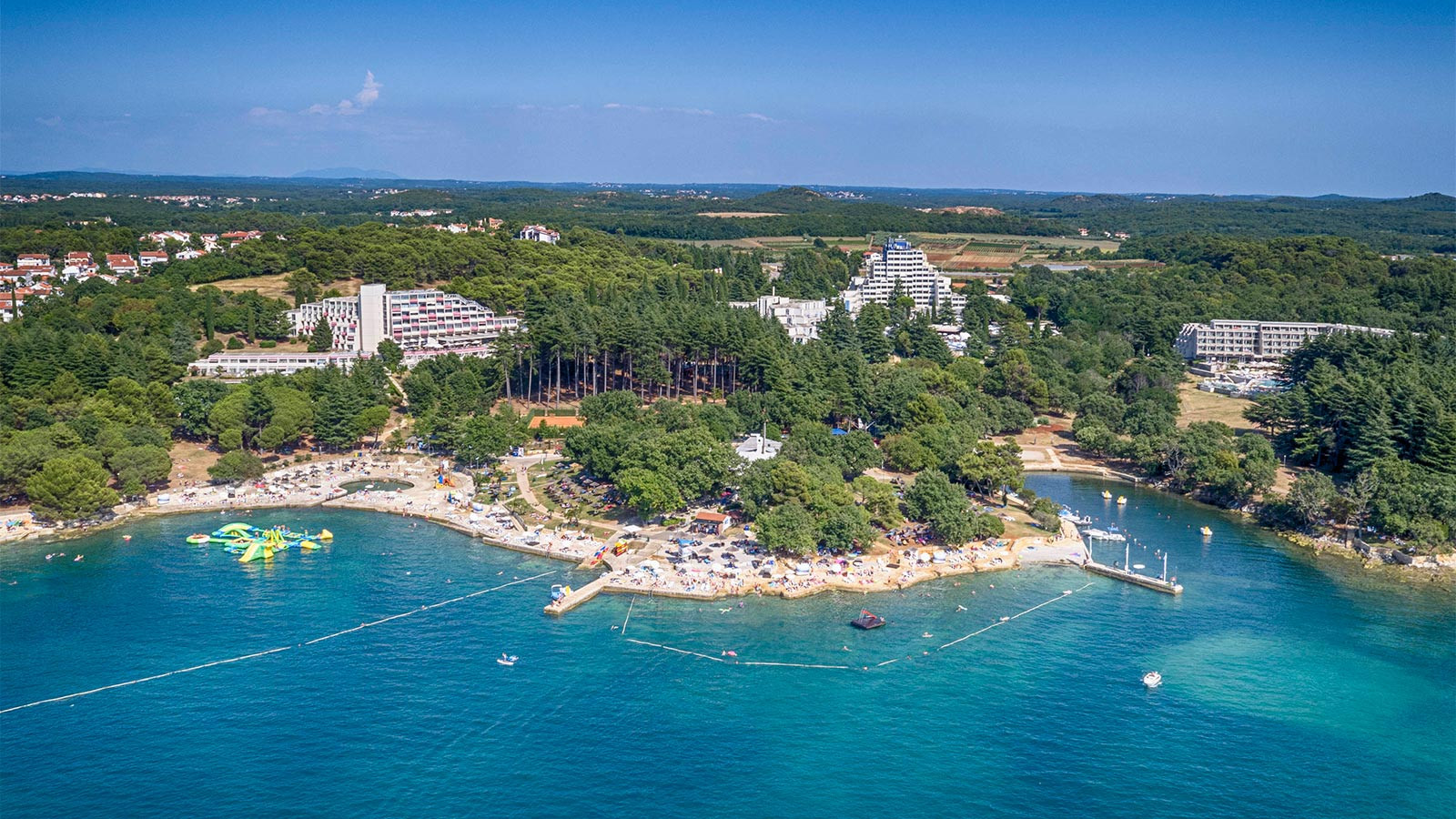
Brulo Beach / Croatian Tourist Board
The trail along the coast goes all the way to Poreč Blue Lagoon, Green Lagoon, and White Bay, beautiful bays and hotel resorts. I recommend the popular tourist train that goes from the south side of Poreč Riviera! Also, If you like cycling and similar recreation, you will love cycling in Poreč.
As there are pebble, sandy, rocky, and concrete beaches, you will indeed find a beach tailored to your needs in Poreč. In 37 kilometers of the Poreč shore, there are as many as 22 beaches with a Blue Flag, an international symbol of clean sea and landscaped coastline. That is as many as 20 percent of all Blue Flags which flutter along the Croatian coast!
What I always liked about beaches in Poreč are numerous fun activities, such as water sports – pedal boats, canoes, paragliding, banana boats, parasailing, aquapark, and sports facilities such as tennis courts, volleyball courts, and mini-golf.
It is important to emphasize that the City of Poreč works tirelessly to provide access to all cultural facilities to people with disabilities. For example, last year, they carried out an adaptation project in the Euphrasian Basilica, and many beaches have been adapted for people with disabilities.
Our all-time favorite daily activity is visiting the Saint Nicholas island across Poreč, also known as Valamar Isabella Island Resort. In the summer months, the island is connected to the Poreč waterfront by a full-day ferry line. The boat from Poreč to the island goes every thirty minutes in both ways. The boat ride takes only five minutes, and the ticket price is 40 kunas (5,30 euros).
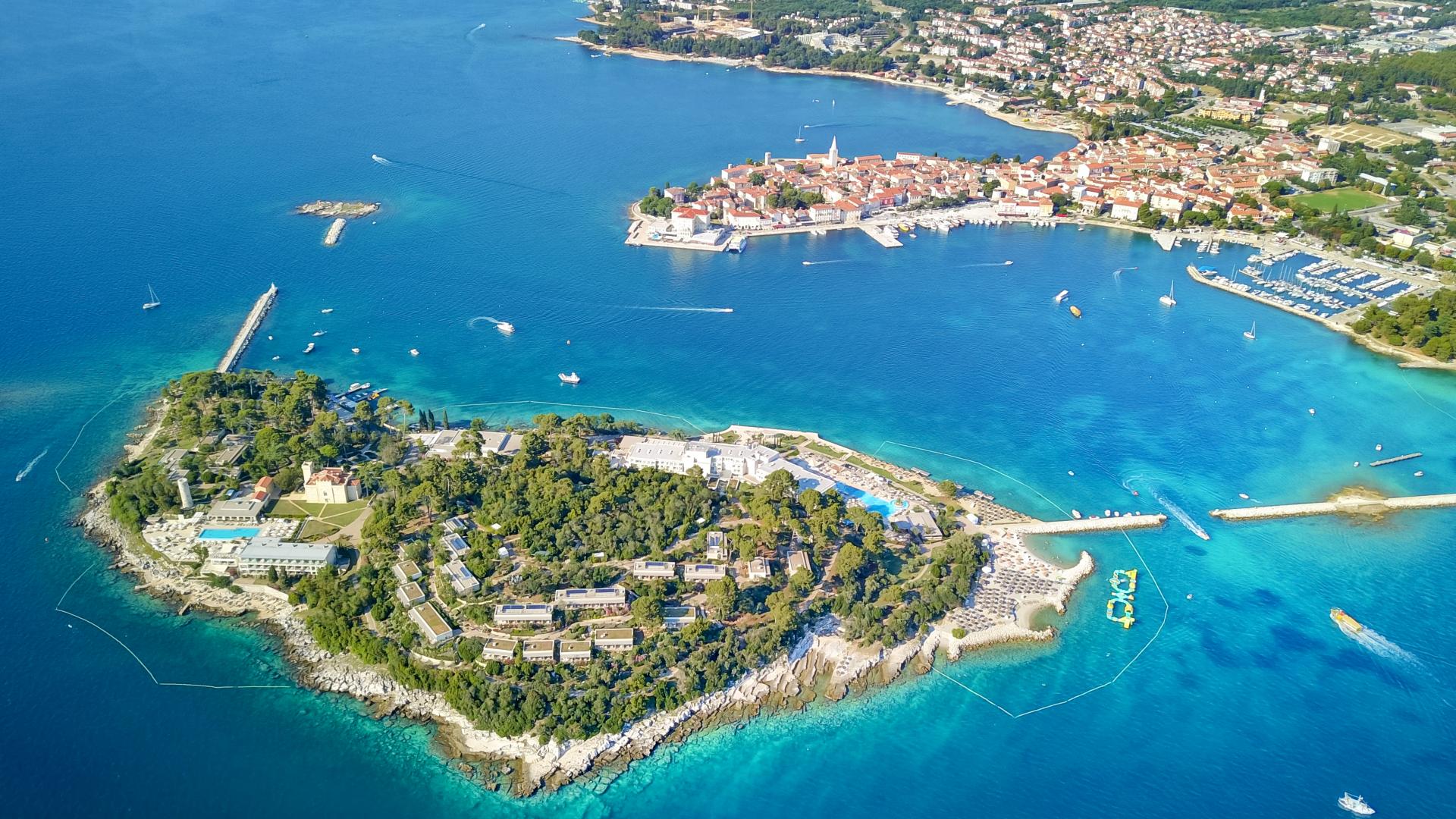
The island of Saint Nicholas in Poreč and Isabella Castle, Valamar Isabella Island Resort / Poreč Tourist Board
I recommend visiting this lovely island across Poreč at least once during your stay to enjoy beautiful, clean, and tidy beaches. It has always been a kind of undiscovered place for my family and me, even before it was renovated by Valamar, the biggest tourism company in Croatia. A nice walk around the island to experience nature's calmness and see the old but now renovated Isabella castle is a must!
On the island and in the whole city, a lot of effort has been put into facilities and activities for children. Along the beaches, you can find numerous children's playgrounds and toboggans. Poreč invests a lot in education, which I witnessed last year when I found out they even have summer tourism workshops for children. Also, children's camps are organized on the beaches, where you can often see many animators with groups of children. There is also a diving school on Brulo Beach.
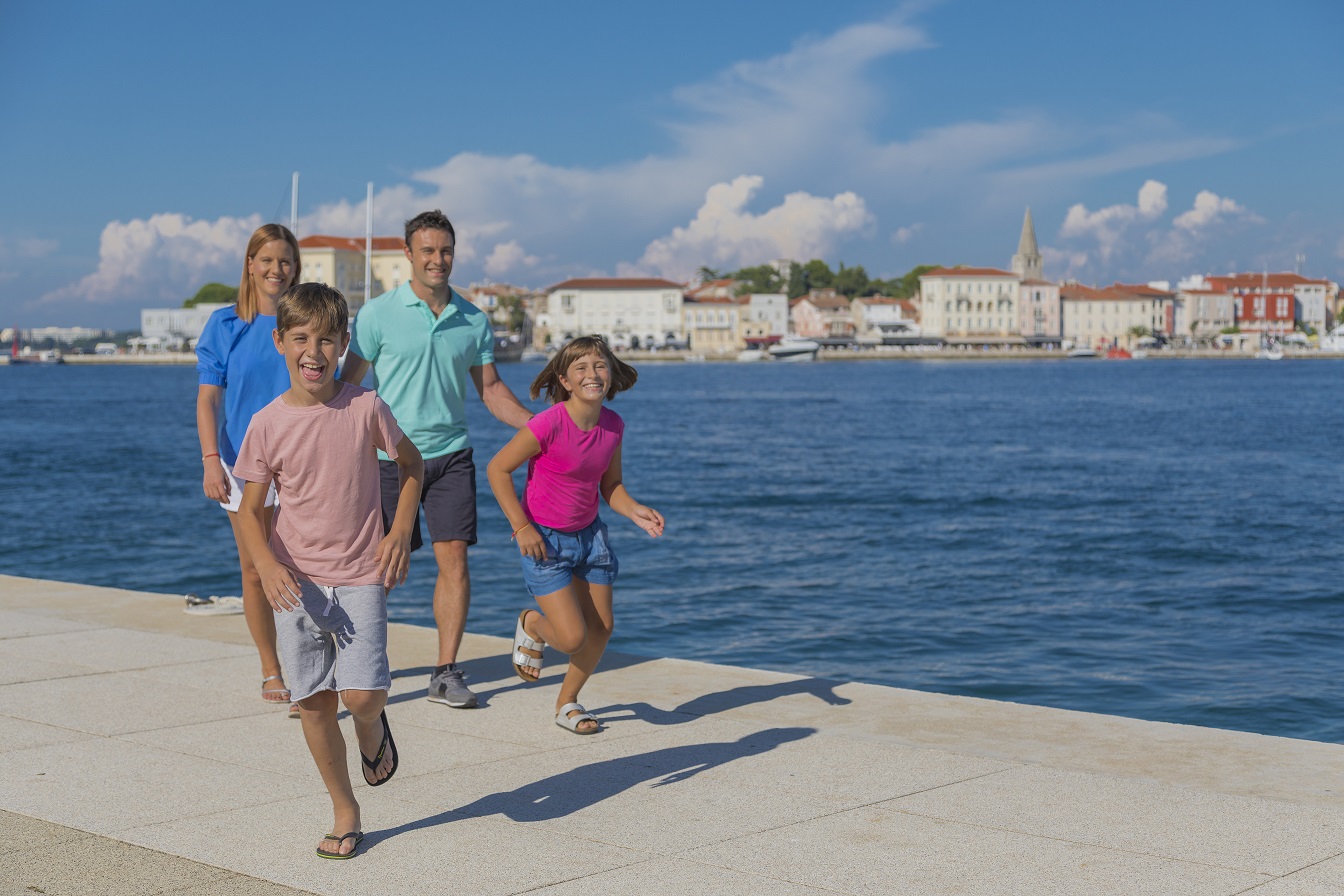
Poreč Tourist Board
Is Porec in Croatia worth visiting for daily boat excursions?
Daily boat excursions from Poreč to surrounding bays and cities are among the most popular activities among tourists. While walking along the waterfront during the evening, when many tourist boats are waiting for their next venture, you can book one-day boat trips to Rovinj, Vrsar, and Lim Fjord, fish picnic trips, and submarine ride. You can also find boats and taxi boats to the nearby Poreč bays, such as Green Lagoon, Blue Lagoon, and White Bay.
One of my earliest travel memories was a one-day trip to Venice from Poreč when I was eight, which I totally recommend. Even though I have seasickness, my first trip to Italy was by boat from Poreč, and I absolutely loved it. Hopping to another country and another city in the middle of your holidays was so exciting back then, and I hope that soon the circumstances will allow the like journeys again.
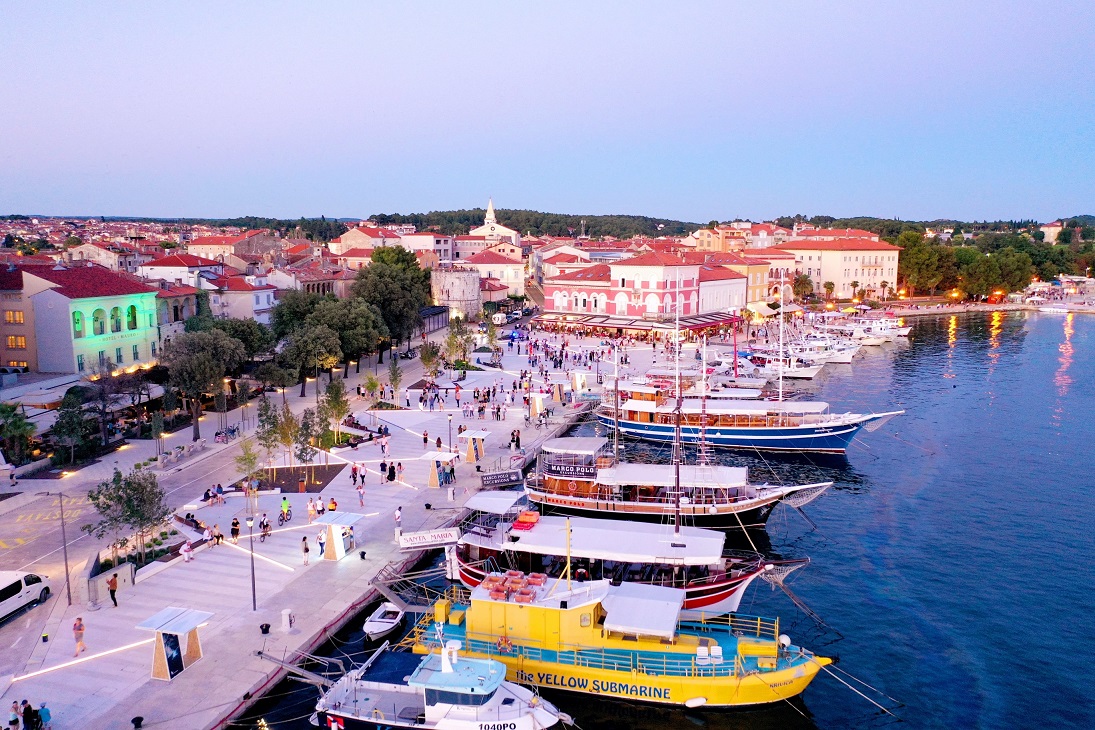
Tourist boats in the Poreč waterfront / Poreč Tourist Board
Is Porec in Croatia worth visiting for nightlife?
Here comes the fun part. During the summer evenings, at the beginning of the city waterfront, you will not be able to miss the sounds of the world's greatest hits and dance rhythms from the famous Poreč club Saint & Sinner.
There is no shortage of night bars and clubs in the city, and the Poreč casino is also popular. Various performers (most often musicians) perform at the summer terraces of hotels and restaurants almost every day. One of the most famous such summer bars is the Lapidarium.
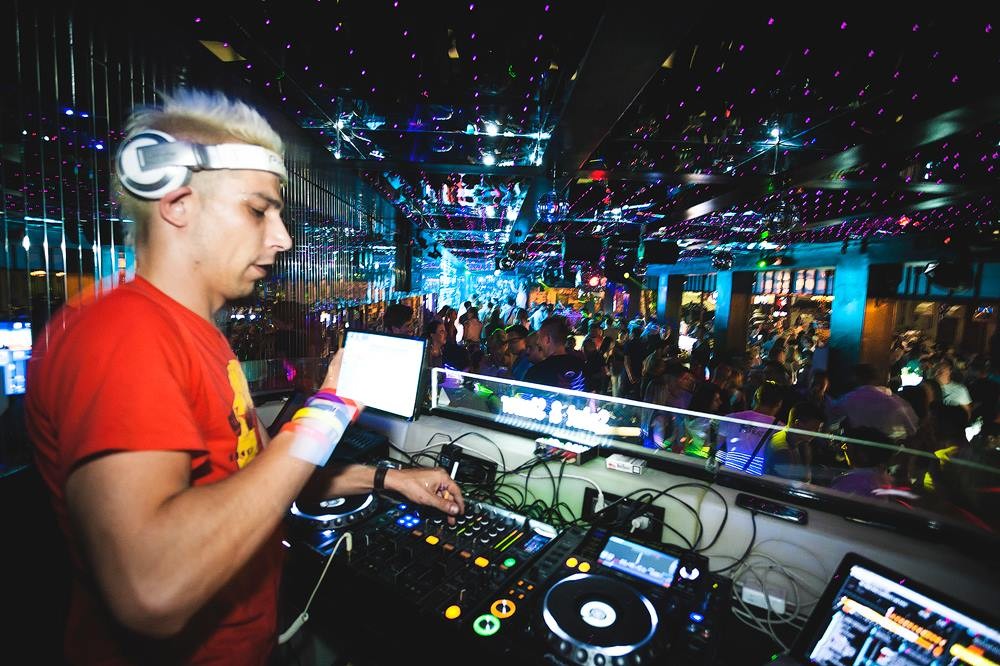
Saint & Sinner / Poreč Tourist Board
At the very top of the Poreč peninsula, at the foot of the Riviera Hotel, music from the attractive Palazzo Club attracts attention. Besides, there are numerous lounge and beach bars by the sea.
I also remember seeing organized transport vehicles around Poreč offering transport services for party people to the nearby famous nightclub Byblos. I'm sure I'm not the only one who is nostalgic about crazy summer parties! Last summer, it was relatively quiet in Poreč, but let's hope for the better in the upcoming summer season.
As for parties, Poreč is also known for hosting Poreč Open Air Festival, an all-summer-long festival that consists of street performances, music nights, cinema, theatre, and special events. The MTV Summerblast in Poreč was also held, but due to the current situation with the coronavirus, the holding of all festivals is uncertain for now.
Is Porec in Croatia worth visiting for gastronomy, adventure, and education?
Although the temperatures in Poreč are high and the sea is warm, I will not lie - almost every year, I experience one rainy day during holidays. However, such days allow me to explore Poreč and its surroundings.
In addition to the many hotels and apartments, many famous restaurants and cafes in Poreč offer only the best Istrian delicacies. Getting to know the local specialties is an indispensable part of getting to know the destination. In Poreč and Istria, those are, among others, truffles, olive oil, Istrian prosciutto, Istrian boškarin beef, asparagus, and seafood, offered in best of Poreč offer. Along the Dekumanova Street in the old city core, you can find many patisseries with ice cream.
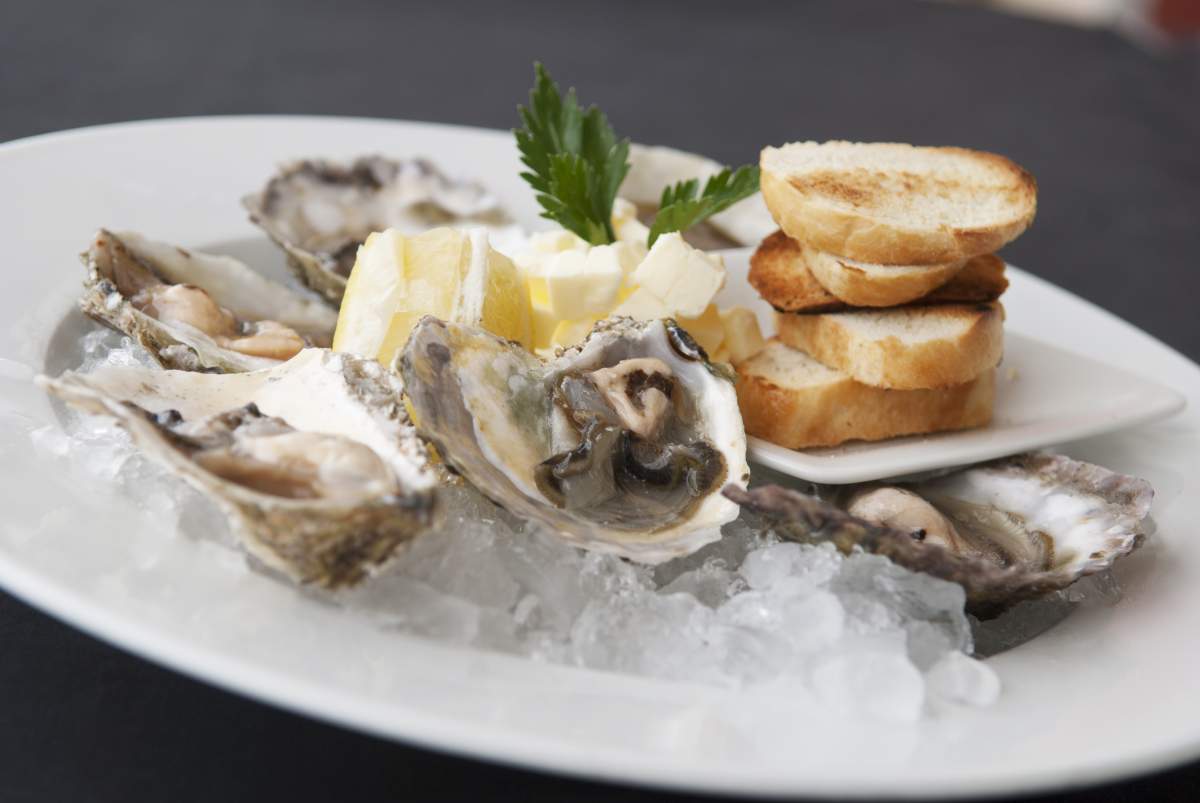
Istrian food - scallops, mussels, oysters / Poreč Tourist Board
I don't have to emphasize the importance and popularity of Istrian wines and wine roads. One must taste them when in Poreč, but what surprised me last year was the favorite activity of Istria people – truffle hunting. It was the best activity for me in the whole visit to Poreč and Istria the previous year, and it is worth experiencing!
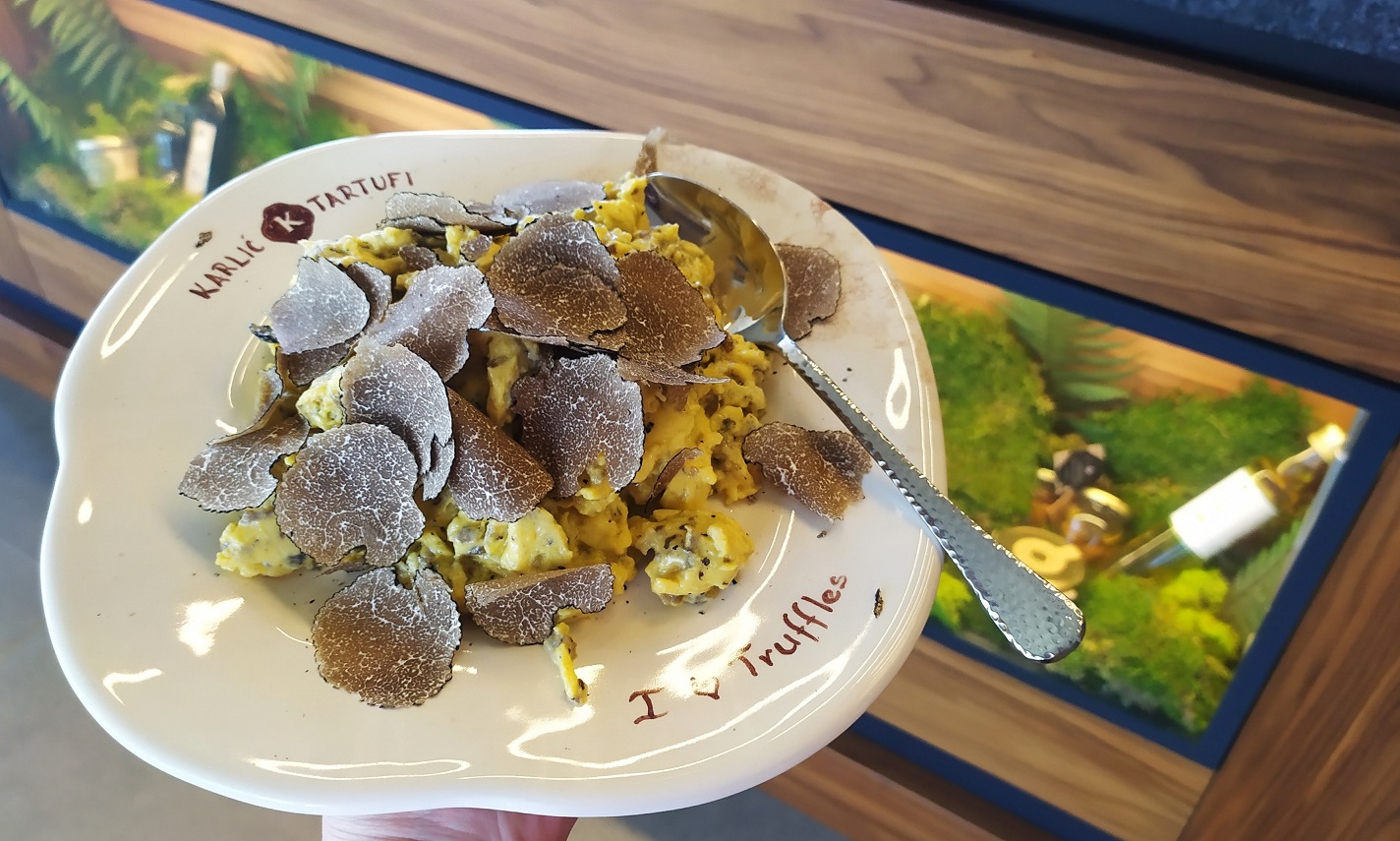
As part of a truffle hunting tour, we ate an Istrian specialty - scrumbled eggs with black truffles / Donatella Pauković
And since Istria has been named the best olive oil region in the world for the sixth consecutive year, my next visit will for sure include olive oil roads in the Poreč hinterland.
Near Poreč, there are many entertainment and educational facilities, such as Motodrom Poreč with karting. In addition to karting, many other activities are offered: bigfoot riding, cross-kart driving, segway, quads motor wheels, paintball, and Adventure Park SkyFox. It is possible to ride horses in the nearby horseriding centers in Poreč.
Motodrom Poreč / Donatella Pauković
A few years ago, we spent a day visiting the Baredine Cave, at the bottom of which we saw one of the few specimens of a human fish. I recommend the Baredine Cave if you get bored of the heat because by descending to a depth of 60 meters, the air temperature also drops to 14 degrees Celsius, which is a shock compared to the outside 30 degrees during the summer days.
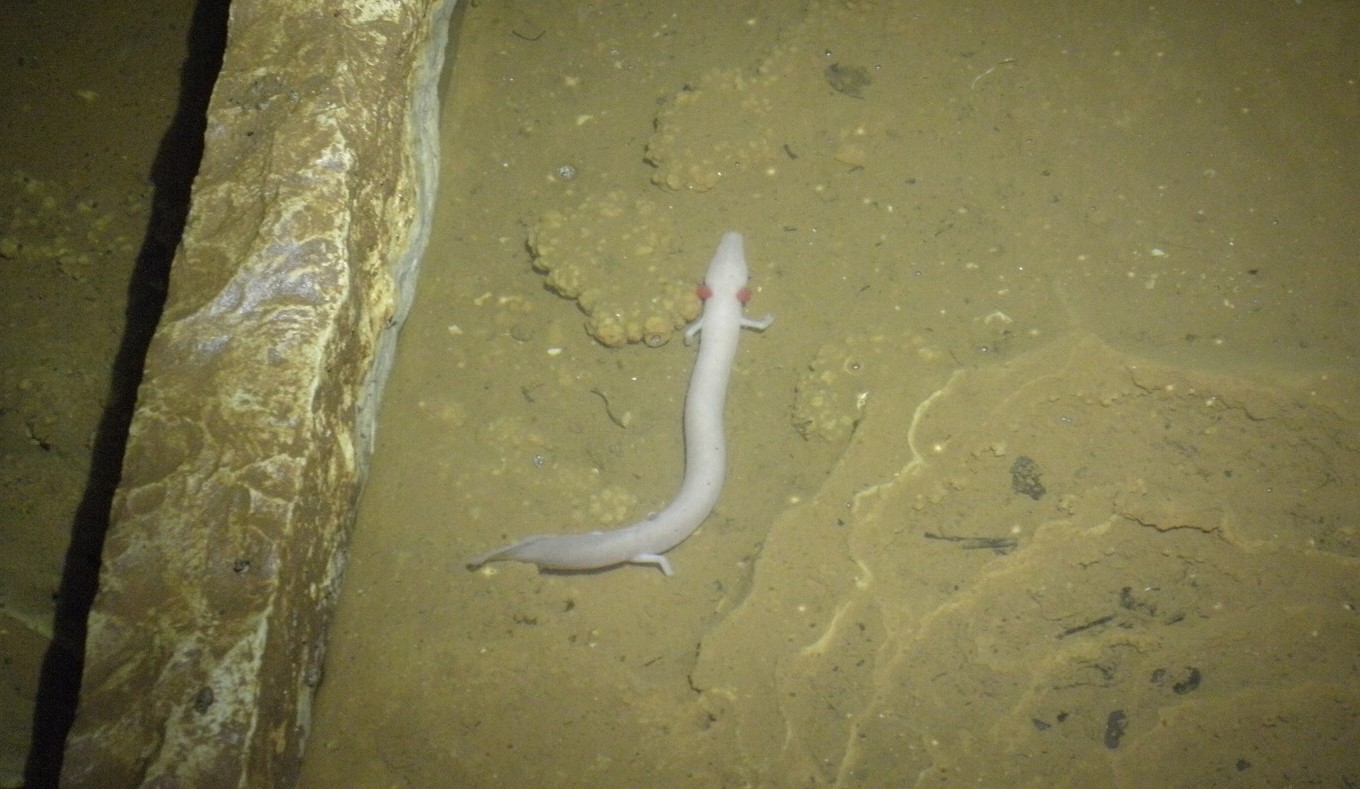
Human fish in the Baredine Cave near Poreč, Istria / Donatella Pauković
If you want to get the best from water experience, near the tourist resort Zelena Laguna in Poreč, you can enjoy the largest Croatian water amusement park – Aquacolors Poreč. Also, the attractive Aquapark Istralandia, recently named fourth best water park in the world, is only a 20-minute drive from Poreč.
If you want to learn something about astronomy, the Višnjan Observatory, one of the 12 most productive observatories in the world of all time, is 16 kilometers away from Poreč. During 2018 and 2019, the Observatory discovered and documented over 1,400 asteroids, and recently, as part of a crowdfunding campaign, they secured funding for further investment in scientific and educational facilities.
Conclusion: Is Porec in Croatia worth visiting?
Suppose you want to have active holidays, then yes. In that case, Poreč is worth visiting because it offers a combination of lovely beaches, city sights, beautiful sunsets, rich culture, numerous sports and adventure activities, great food, and even a great nightlife. Poreč simply has it all.
I have visited Poreč countless times in winter when it turns into a quiet town without tourists, and I would always rejoice to see some pizzerias, restaurants, and cafes open even during the winter. Poreč is also a host to many sports teams during winter, who do the preparations for sports competitions in six Poreč sports halls. Did you know that Poreč will soon even have a football camp? It is the result of a long-term investment in sports in Poreč.
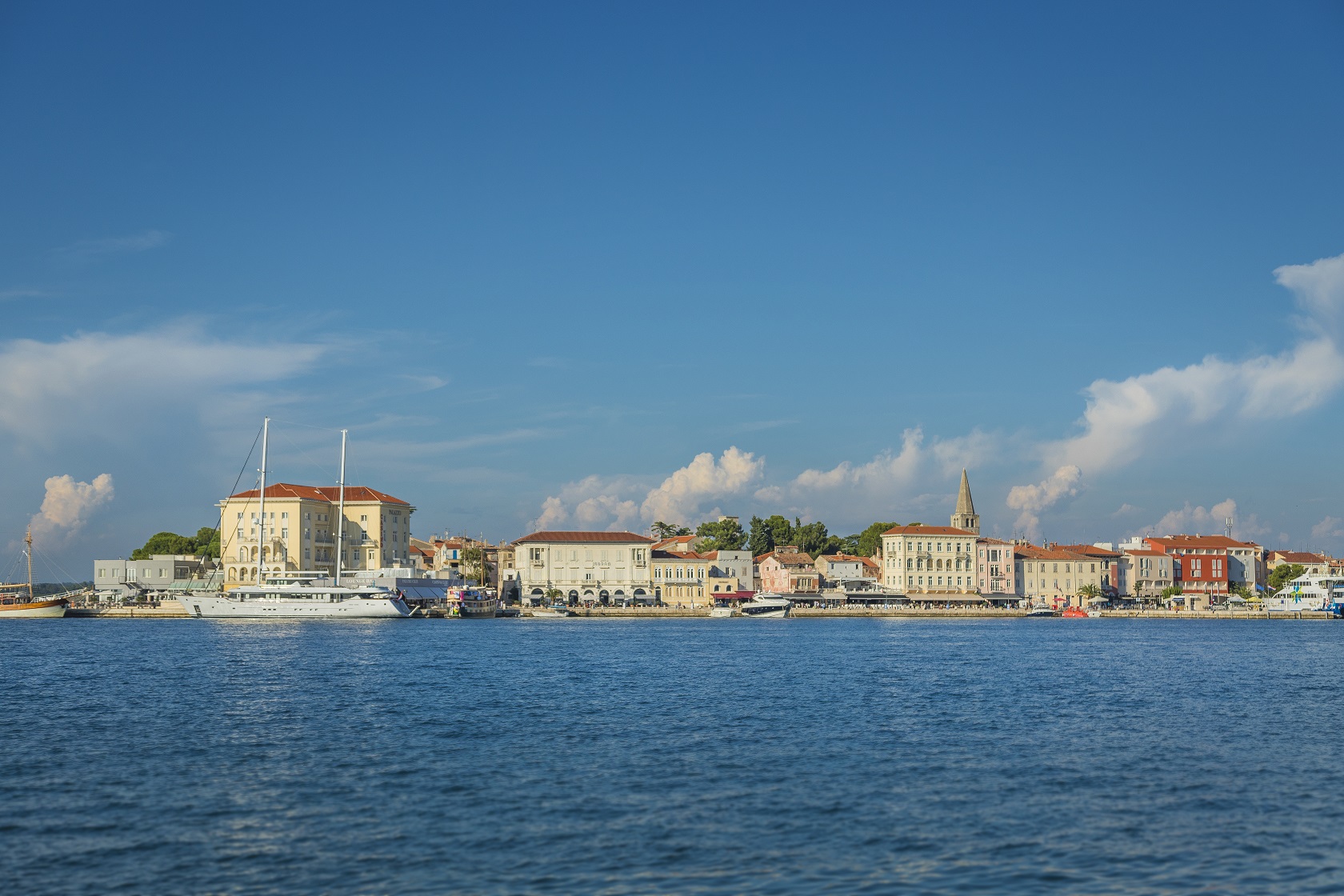
Poreč Tourist Board
It is fascinating to me how every Croatian city and place hides many interesting facts, and sometimes it is challenging to discover them all in one visit. Therefore, I know there is a lot more to do and see in Poreč, and I can't wait to revisit it.
Although I have traveled a large part of the Croatian coast in my 24 years and the mainland, I think there is always something new to explore in Croatia, and I'm looking forward to finding out more about my beautiful country in the future.
To follow the People Also Ask Google about Croatia series, click here.
People Also Ask Google: How to Get to Istria, Croatia in 2021?
February 17, 2021 – In Google's "People also ask" feature, the hard questions are the ones that start with "how." It is not always easy to find answers how to do something or how to get somewhere. However, in this article, we will try to explain how to get to Istria, the biggest and famous Croatian peninsula.
Located in the most western part of Croatia, Istria is a peninsula known for its rich cultural heritage, as well as it's delicious gastro offer that includes world's best wine, olive oil, and truffles. Last year, Istria was named world's best olive oil region for the sixth consecutive year, which is one more reason why Istria is an unavoidable place to visit when in Croatia.
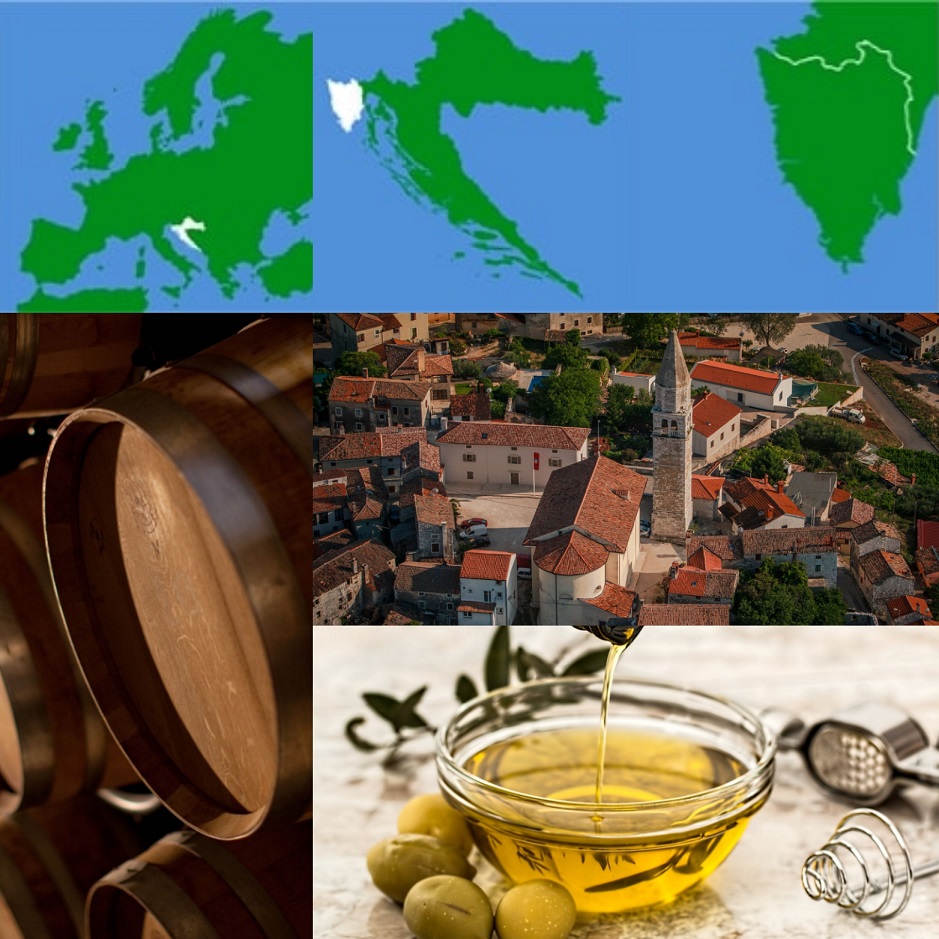
Sources: Istria.hr, Pexels, Romulić and Stojčić
We will let you explore the charms of Istria for yourself, but first, we will try to help you how to get to Istria.
How to get to Istria Croatia by car?
Istria is one of the best, if not the best traffic-connected Croatian coastal region. Thanks to its geographical position, it achieves a record number of tourist arrivals and overnight stays every year, and the cities of Poreč and Rovinj are at the very top of Croatian tourist destinations.
The largest number of tourists come to Istria by land, by personal vehicles, from the close countries of Germany, Austria, and Italy. If you're coming to Istria from those countries, or from that direction, you must pass through Slovenia.
There are four main border crossings with Croatia and Slovenia in Istria. The first ones are Plovanija and Dragonja/Kaštel, from the direction of Koper, marked in red on the photo below.
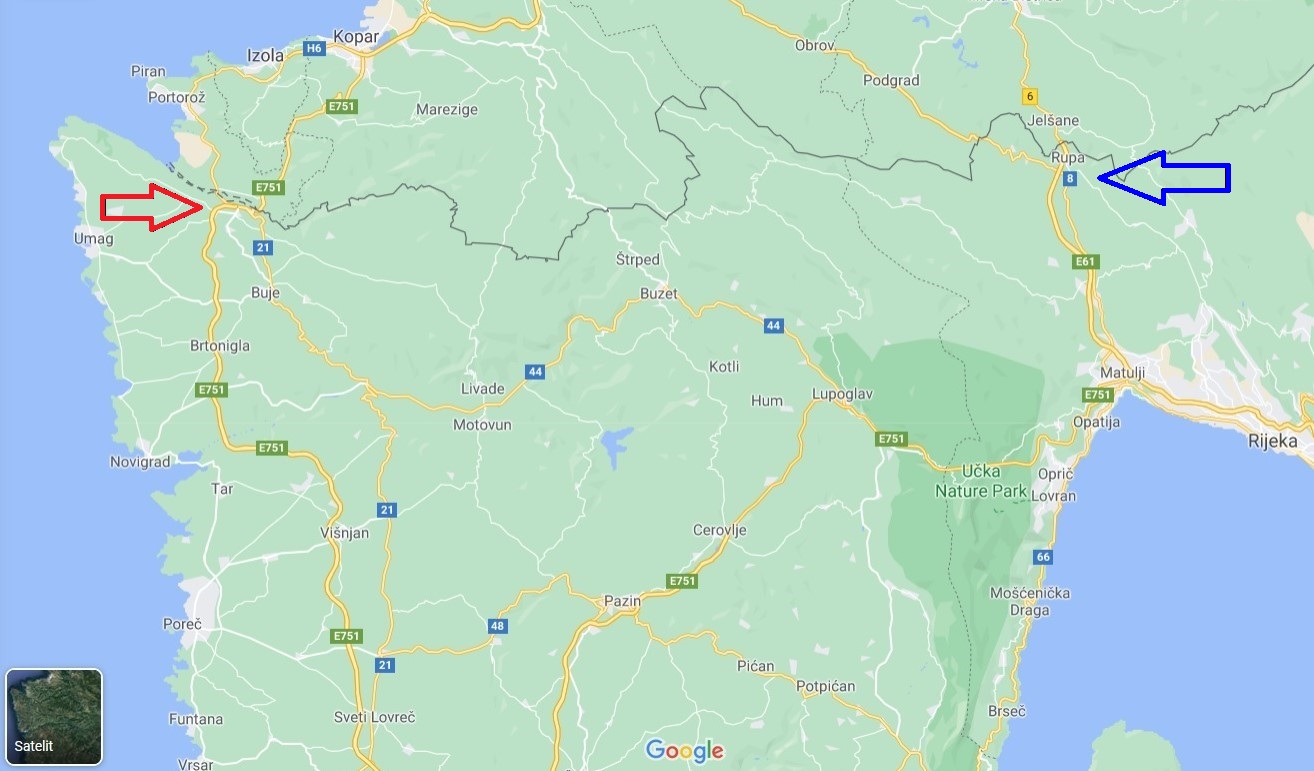
Screenshot Google Maps
The road to Plovanija goes along the Slovenian shore, and the border crossing Dragonja/Kaštel is on the road E751. After the Croatian border, that road connects with the most famous and most important road in Istria – the so-called Istrian Y, a Y-shaped highway, which connects all parts of Istria.
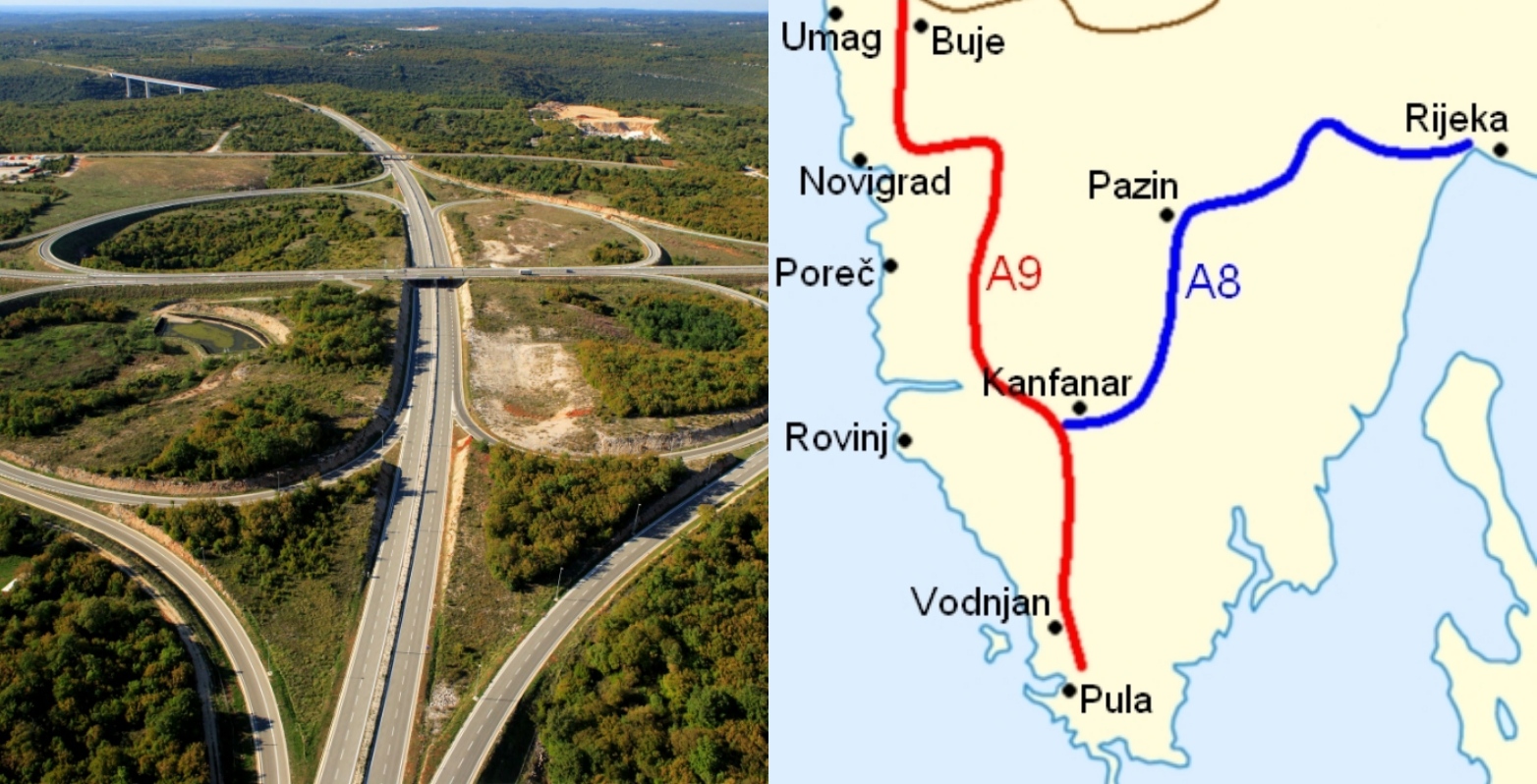
On the left: Center of Istrian Y in Kanfanar (Romulić and Stojčić) / On the right: the map of Istrian Y (Wikipedia)
That part of the Istrian Y, marked in red on the photo below, goes along the western shore, and it is a highway A9 from the Slovenian border to Pula. It connects Istrian cities of Umag, Novigrad, Poreč, Rovinj, and Pula. However, the highway itself is a little away from these cities, so you will have to turn to state roads to reach them.
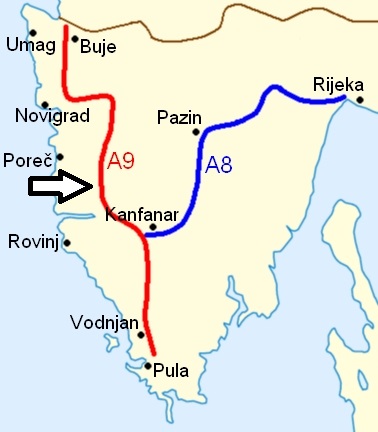
A9 highway, a part of Istrian Y, marked in red / Wikipedia
The second two important - and also the busiest - border crossings in Istria are Pasjak and Rupa, marked in blue on the first photo. Although they are located in the Primorje-Gorski Kotar County, they are a gate to Istria County.
As shown on the photo below, the highway E61 goes to Croatia via the Pasjak crossing border from the direction of Trieste in Italy. If coming from the direction of Ljubljana, you must cross the Rupa crossing border. Highway E61 (in Croatian: highway A7) from both Pasjak and Rupa end in Matulji (marked in red) near Rijeka, where it connects with the second part of Istrian Y – highway A8 that goes to Kanfanar, the center point of Istrian Y.
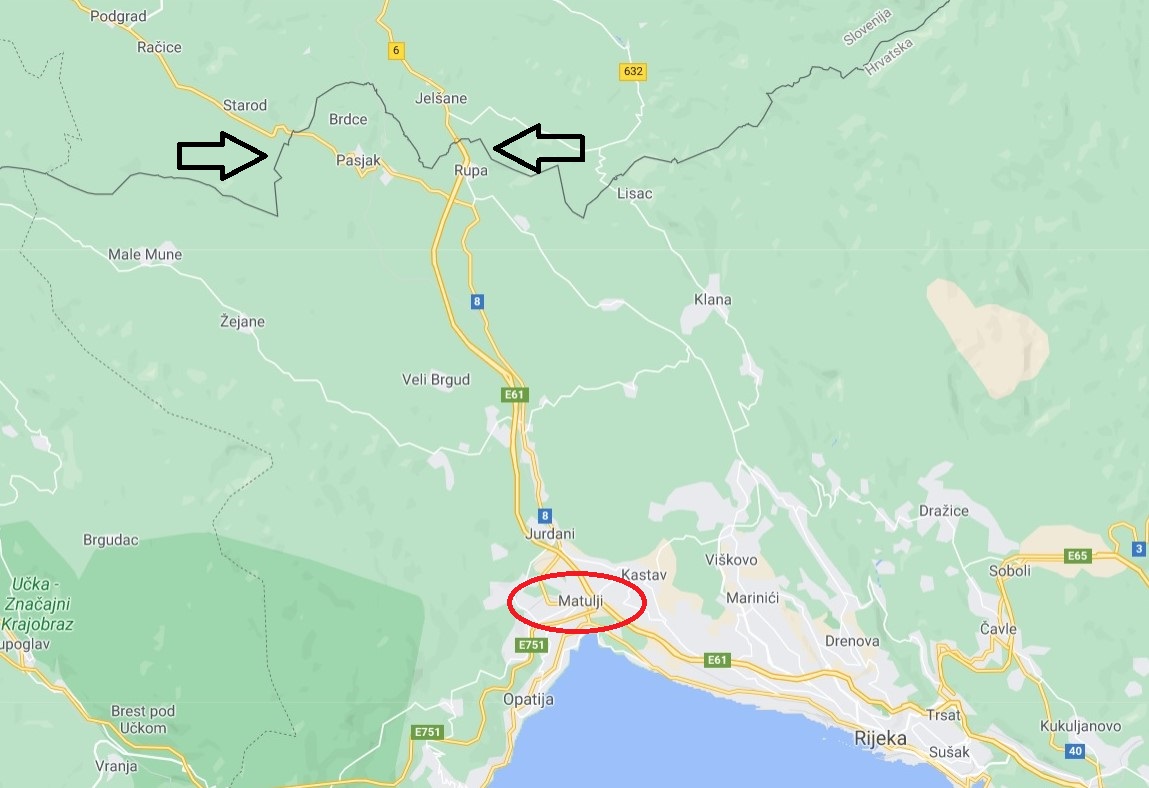
Screenshot Google Maps
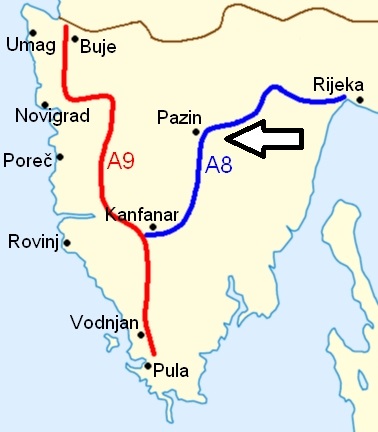
A8 highway, a another part of Istrian Y, marked in blue / Wikipedia
Remember, once you reach Istrian Y, you can reach any part of Istria. Istrian Y is actually a system of two highways, A8 and A9 – learn more about the Istrian Y.
Other Slovenian-Croatian border crossings are Bregana near Zagreb and Macelj near Krapina, from where you can go to Istria via highways E59 and E65.
How to get to Istria by plane?
The only airport in Istria is the one in Pula, while the other close airports are in Friuli Venezia Giulia Airport in Trieste, Marco Polo Airport in Venice, and Treviso Airport in Italy, Jože Pučnik Airport in Ljubljana in Slovenia (also known as Brnik Airport or Fraport Slovenia), Zagreb Franjo Tuđman Airport and Rijeka Airport in Croatia.
Pula Airport welcomes both charter and scheduled flights. Before many flights were canceled due the pandemic, Pula Airport had a solid tourist traffic. One of the most popular airline in Pula was Ryanair, offering cheap flights to some of the biggest European cities. However, the traffic in Pula Airport dropped by 89.6 percent in 2020, compared to the record 2019.

Pula Airport by Romulić and Stojčić
Airlines operating to Pula Airport in 2021 are Air Serbia, British Airways, Croatia Airlines, EasyJet, Eurowings, Finnair, Jet2.com, Lufthansa, Norwegian, Ryanair, S7 Airlines, TUI, Volotea, and Wizzair.
In 2021, it will be possible to come to Pula, Istria by flights from Belgium, Croatia, Denmark, Finland, France, Germany, Ireland, the Netherlands, Norway, Russia, Scotland, Serbia, Sweden, Switzerland, Ukraine, and the UK.
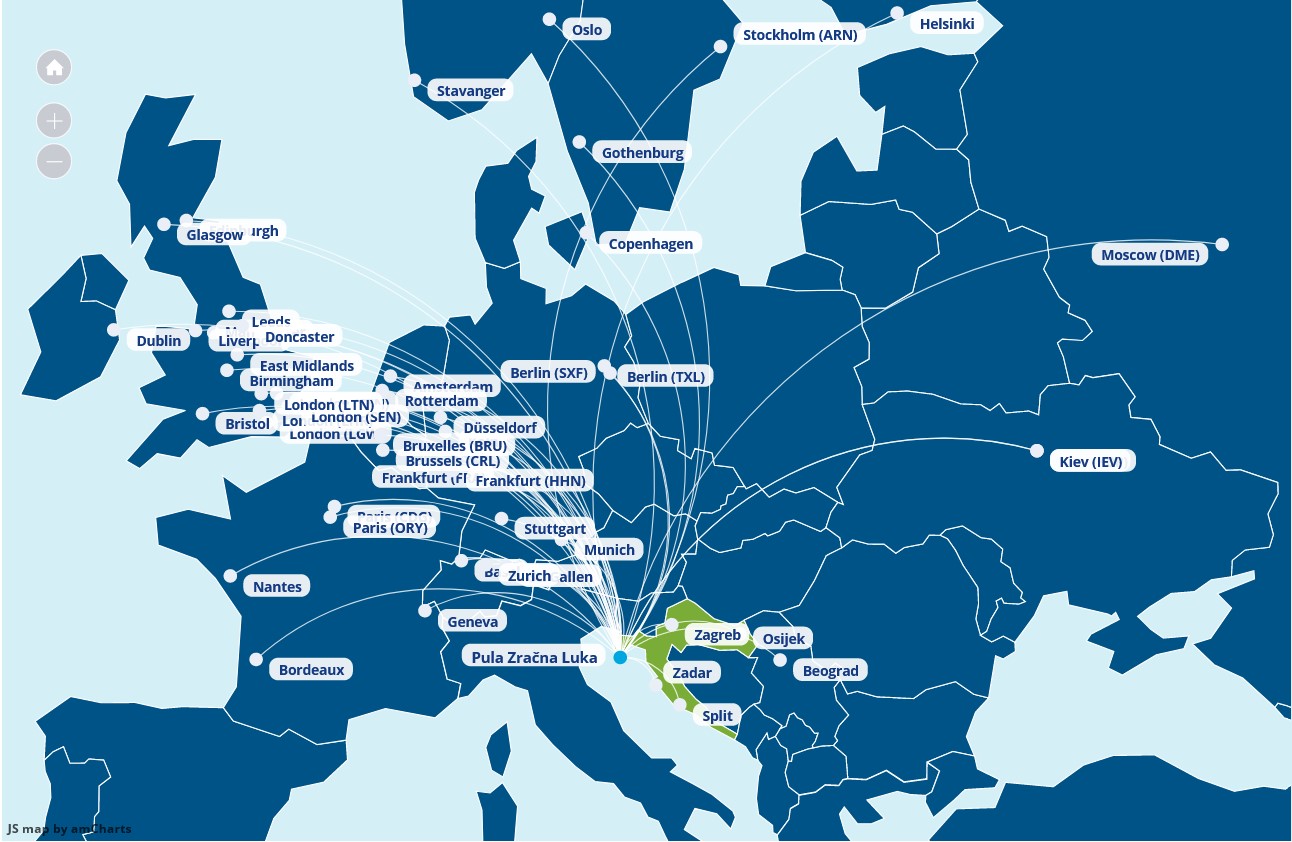
Screenshot Pula Airport
Follow TCN's dedicated page for the newest information about flights to Croatia.
How to get to Istria by bus?
If you come from neighboring countries, the bus may be a good option to get to Istria. Since northern and western Croatia is well-connected with northern Italy, you can get to Istria by bus from Trieste to Buje, Poreč, Rovinj, Pula, along with other places on the way. The bus from Trieste to the western part of Istria, as well as to Rijeka, operates throughout the year.
There are also bus lines from Venice to Pula by the Pula-based bus company FILS, operating the whole year. Another Pula-based bus company Brioni Pula provides bus services from Padova (with stops in Venice and Trieste) to Vodnjan, Rovinj, Buje, and Pula. All the bus lines from Italy to Croatia can be found here (in Croatian).
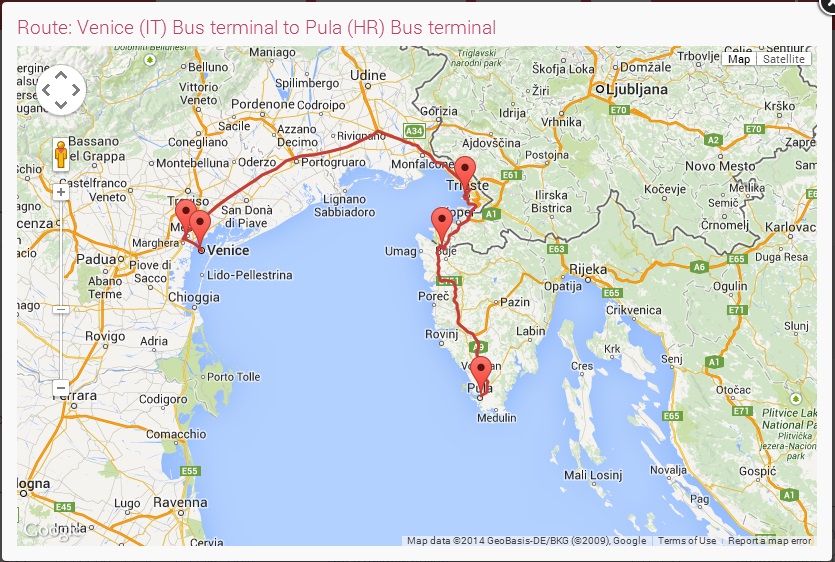
Bus routes from Venice, Italy to Pula, Croatia / Buscroatia.com
Istrian bus companies Brioni Pula i FILS also provide bus lines from many Croatian cities, mostly from the capital of Zagreb. If you're coming from continental Croatia, Istria is the closest seaside region to visit. There are many bus lines, especially during summer. You can find them also on the Flixbus and Arriva bus companies' webpages.
How to get to Istria by ferry?
Since Croatia has a sea border with Italy, one way to get to Istria from Italy is ferry. There are two ferry providers from Italy to Istria – Adriatic Lines and Venezia Lines.
Adriatic Lines operates from Venice to Istrian cities of Pula, Rovinj, Poreč, and Umag. Catamaran lines from port San Basilio in Venice to Istrian cities last about two and half hours. One-way ticket price is 65 euros (or 500 kunas) for adults and 32.50 euros (250 kunas) for children. The schedule for 2021 is still unavailable.
Adriatic Lines' catamarans are quite famous, as they are recognizable in Istrian ports. "Prince of Venice," mostly seen in Poreč port, has an attractive and distinctive design, while "Adriatic Jet" is known for its speed and interesting appearance.
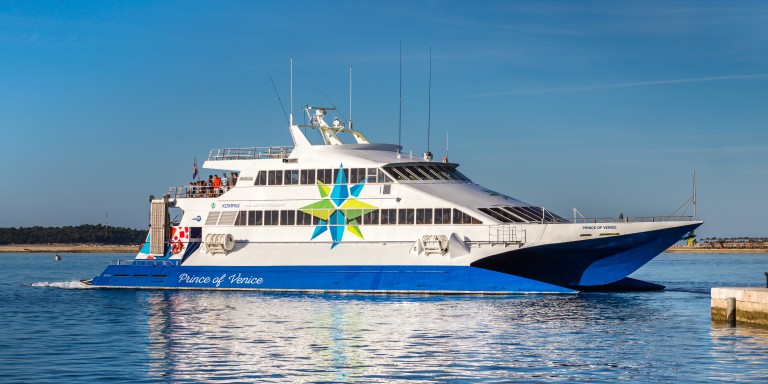
Prince of Venice in Poreč port / Adriatic Lines
During summer, namely from April to October, Venezia Lines have catamaran lines from Venice to Piran, Poreč, Pula, Rovinj, and Umag. Ticket prices range from 59 to 69 euros per person (450 to 520 kunas per person). It takes about three hours and 15-30 minutes to get in one direction, depending on the route. However, the schedule for 2021 has not yet been published.
Ferries from Istria to Italy also allow the transport of pets and bikes.
To find more ferries from Italy to Croatia, check the Istrian Sun webpage.
How to get to Istria by train?
If you decide to come to Istria by train, you can arrive very quickly using the lines from Ljubljana or Zagreb.
The line from Ljubljana can take you to Buzet or Pula every day and it takes four hours. There are no more trains going from Italy to Croatia.
If traveling from the Croatian capital, there are no direct train lines to Istria. However, you can take the train to Rijeka, but then travel by bus from Rijeka to Lupoglav, from where you can continue your train journey through Istria, to Pazin and Pula. The whole journey take four hours. You can book the train tickets on the Croatian Railways webpage.
Six railway stations in Istria are in Pula, Kanfanar (mentioned above as the center of Istrian Y), Vodnjan, Pazin, Buzet, and Lupoglav. Pula and Pazin are the main railway stations in Istria, from where you can quicky come to western Istrian cities of Poreč, Rovinj, and Novigrad.
Fun fact about travelling by train in Istria?
Did you know that Istria is home to the only island on the Adriatic coast connected by train? Its name is Uljanik and is one of the six islands in the Pula bay.
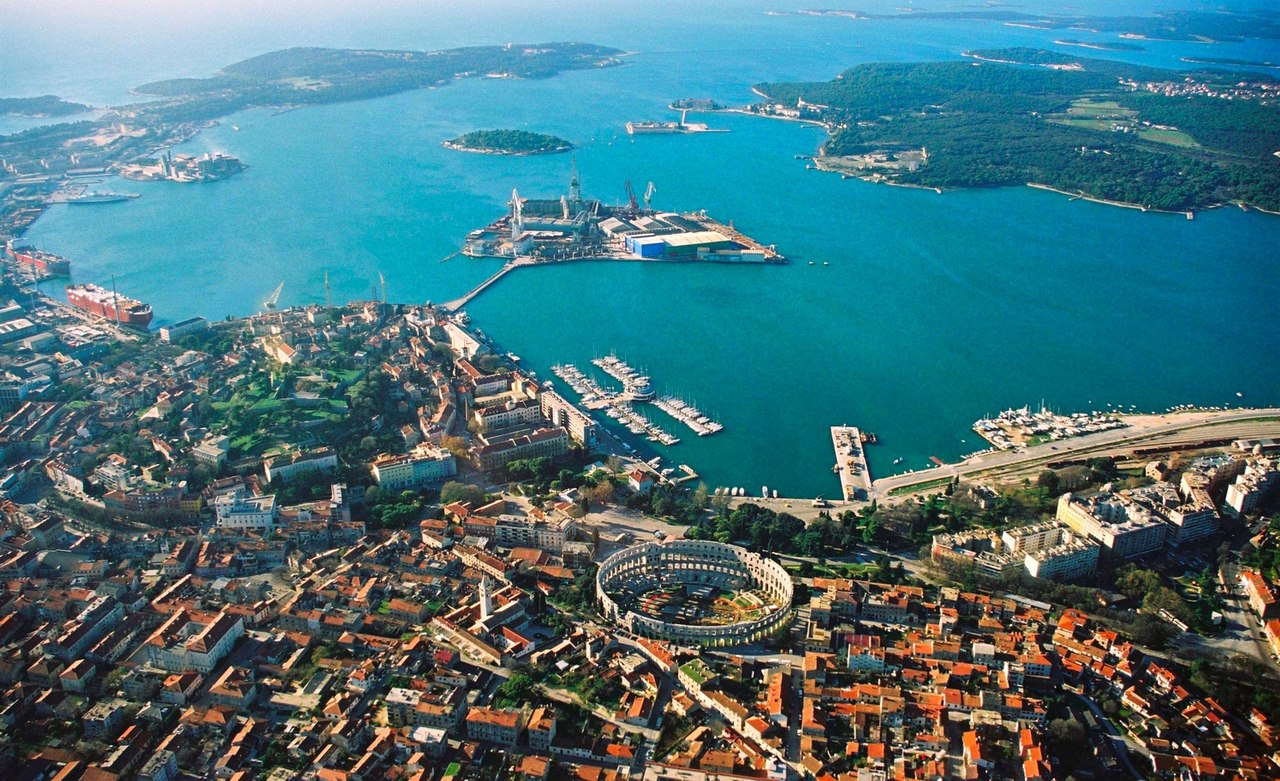
Pula and Uljanik island seen from above / Wikipedia
The name Uljanik, after which the nearby Pula shipyard was also named, comes from olive trees or, in Croatian, "ulike" that grew on it. Of all the olive trees, only one remained in the center of the island, surrounded by the Uljanik shipyard facilities, whose central plants are located on the island.
Interestingly, the industrial track for the shipyard Uljanik that goes from Pula railway station continues over the bridge, all over to the island of Uljanik. The bridge thus connects the island of Uljanik with the coast, making Uljanik the only Croatian island connected to the mainland by rail.
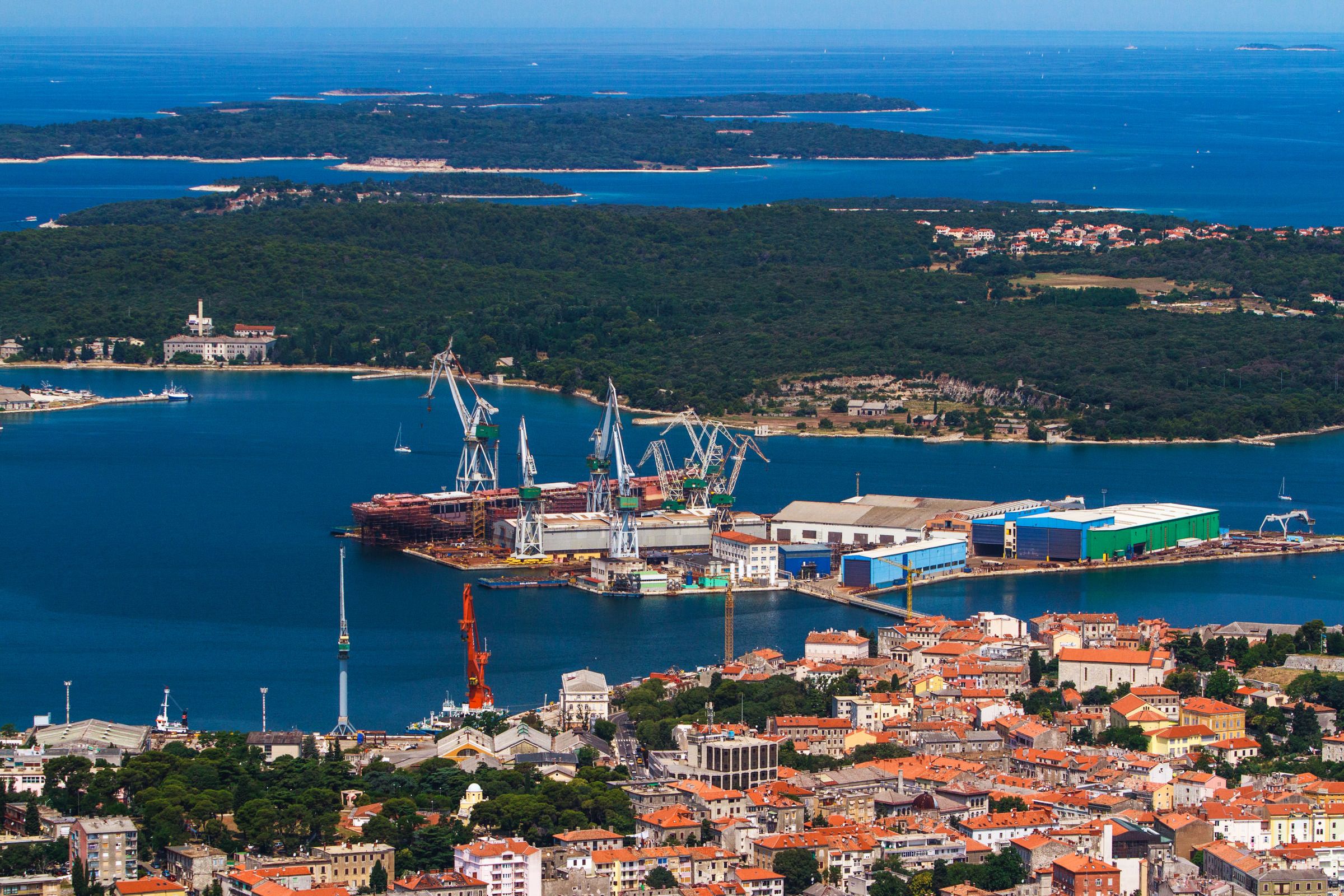
Uljanik shipyard's main plants on the island of Uljanik / Copyright Romulić and Stojčić
To follow the People Also Ask Google about Croatia series, click here.
PHOTOS: Outstanding Contemporary Croatian Architecture of the Year
February 10, 2021 – 10 of the most outstanding examples of contemporary Croatian architecture have been selected by the Association of Croatian Architects to compete in the extremely prestigious Mies van der Rohe Awards. Held only once every two years, they are the European equivalent of the Pritzker Prize for Architecture.
The Mies van der Rohe Awards are a really big deal. The greatest works of European architecture compete for recognition in the competition. The greatest success of Croatian architecture in the awards was attained by UP studios' Toma Plejić and Lea Pelivan, who received a special award for upcoming architects and had their high school in Koprivnica named the best building in that category in 2009. The success has had a considerable impact on their careers since.
Being held only once every two years, Croatian architecture projects completed since the closure of entries for the 2019 awards are eligible to be submitted. Here are the outstanding examples of contemporary Croatian architecture that will represent the country in 2022.
Cinema Urania Zagreb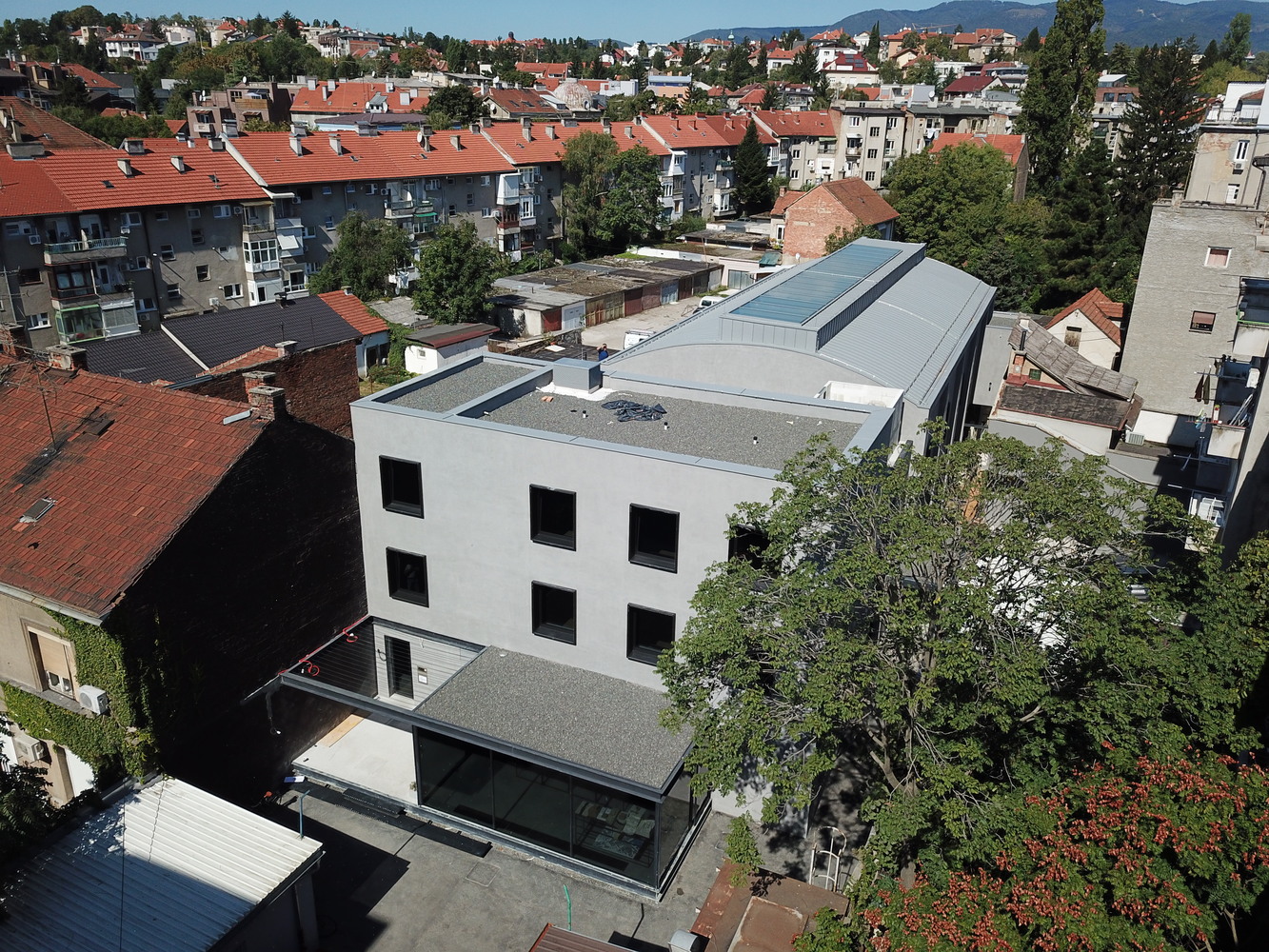
An old neighbourhood cinema built into the back streets near Kvatric. In their redesign, 3LHD preserved the best features from this early example of concrete engineering in Croatian architecture. They added a glass pavilion at the entrance, atriums and skylights, flooding the former darkness with the natural light needed for its new purpose as an event and work space.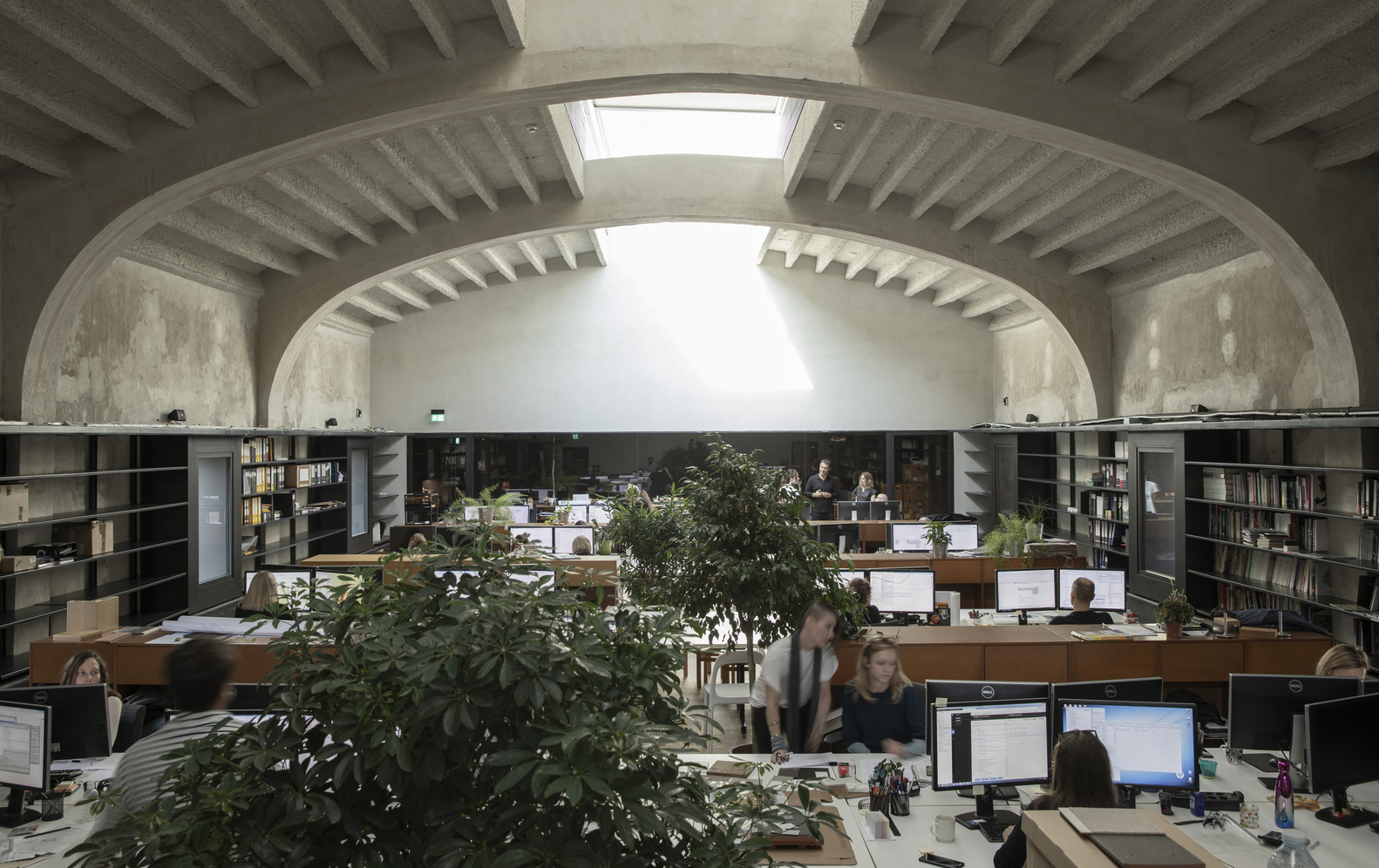 © Jure Živković
© Jure Živković
Grand Park Hotel, Rovinj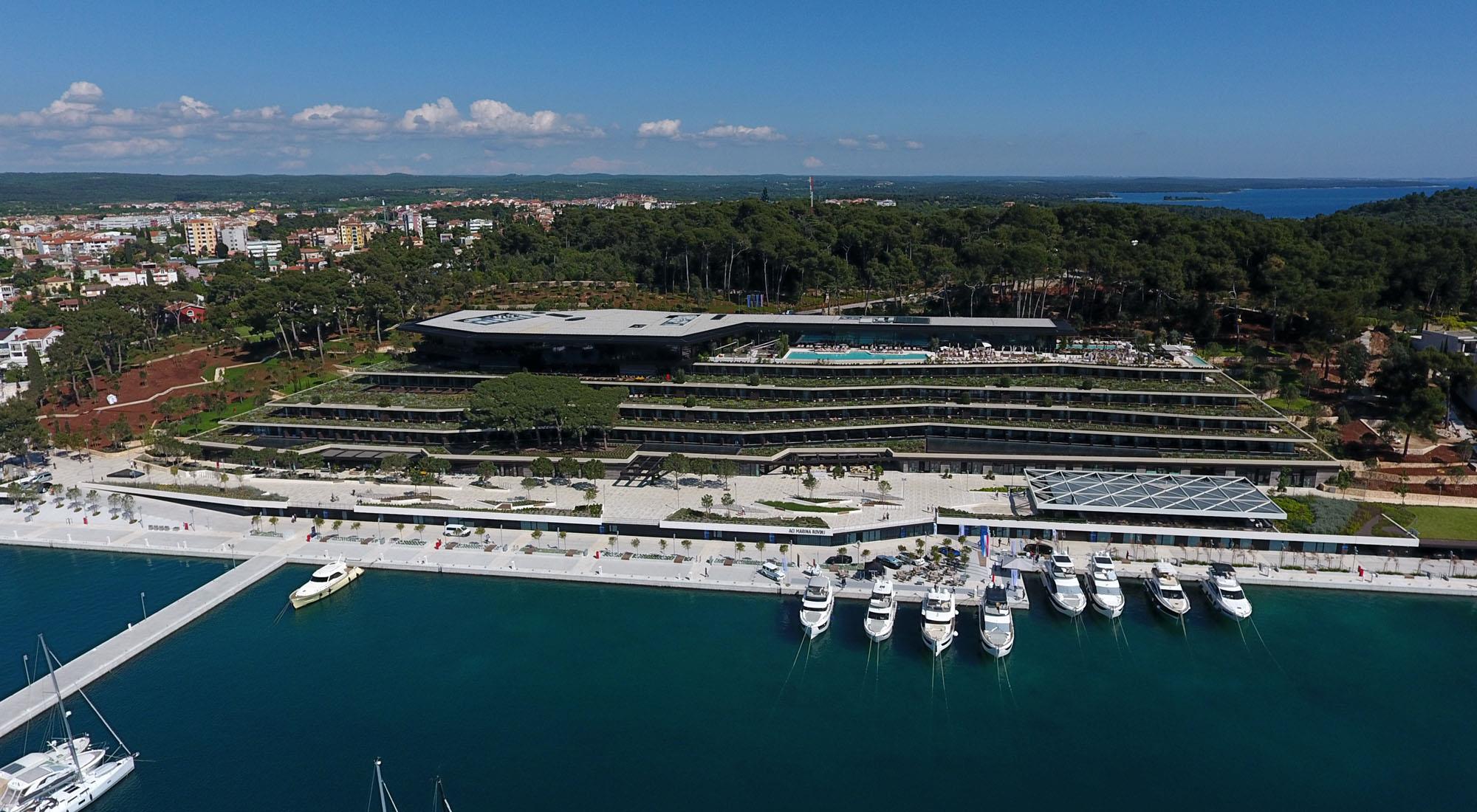
Sprawling widely across six stepped levels, the new luxury Grand Park Hotel and spa could easily have looked a long swipe of concrete. But, by places greenery on each of its staged roofs, architects 3LHD have ensured that no matter where you are in the 500-guest-capacity building, your view places you within a garden, looking out onto Rovinj Old Town and the expanse of the Adriatic. Croatian architecture at its most breathtaking.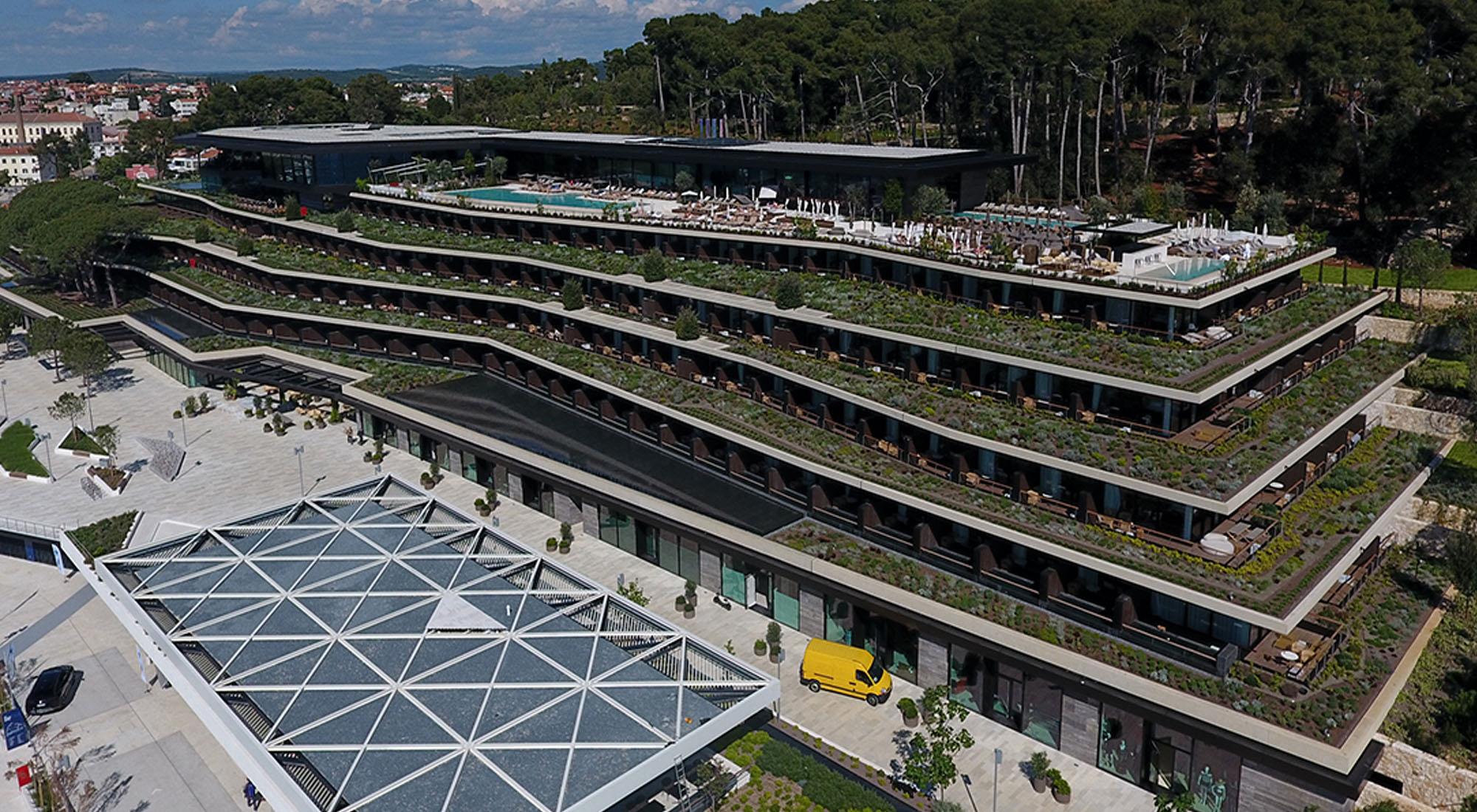 © Alukoenigstahl hr
© Alukoenigstahl hr
Ivanja Reka Elementary School, south Sesvete, east Zagreb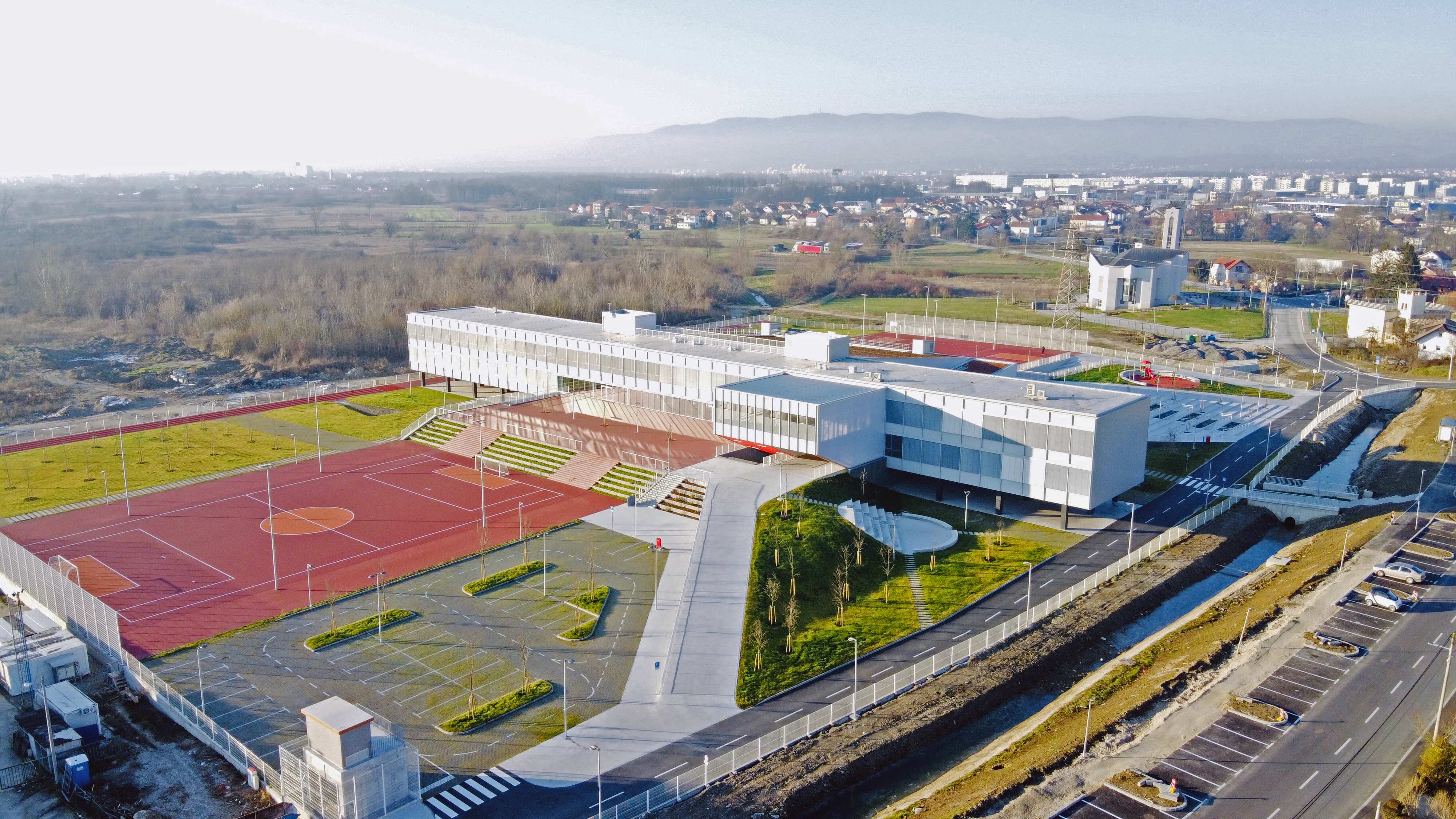
If every elementary school looked as pretty and was as well equipped as Ivanja Reka Elementary School in the south of Sesvete, eastern Zagreb, you could well believe daily attendance would never drop below 100%. Designed by a team of architectural authors (SUBMAP studios Marija Burmas and Ivo-Lola Petrić, and Jakša Kalajžić from JKA Arhitekti), the multi-level main building sits centrally, surrounded by sports, recreation and other facilities creating an impressive view for both those outside and within.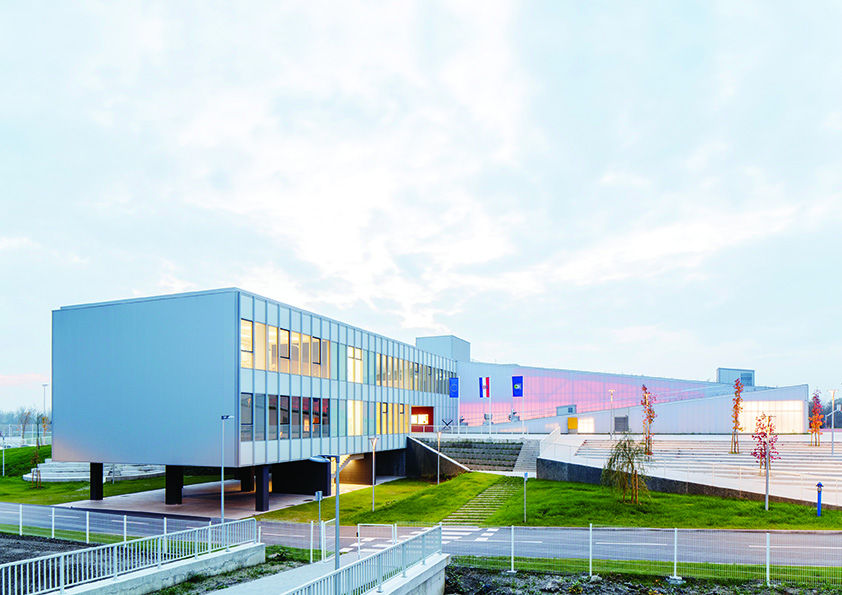 © Ivanja Reka Elementary School / Domagoj Blažević
© Ivanja Reka Elementary School / Domagoj Blažević
Roxanich Wine & Heritage Hotel, Motovun, Istria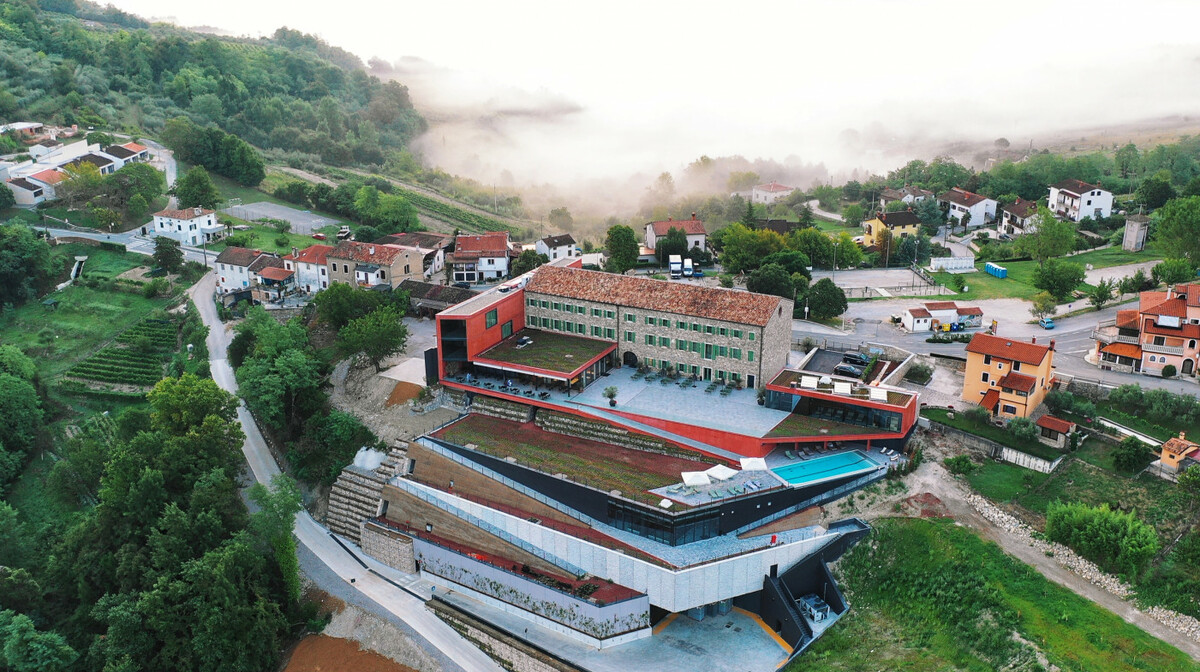
The view is unmistakably Istria. Vineyards carpet the land below and - rising above - the picturesque hilltop town of Motovun. Helmed architecturally by consistently bold Rijeka designer Idis Turato, this multi-level, multi-purpose redesign retains the traditional feel of its existing stone building and its purpose – there's a huge wine cellar beneath – but has opened up the space to give stunning views, not least over a sun deck that spectacularly reflects the sunrise and sunset. This is an active winery, with works and equipment all housed within its lower floors, not that you could tell from the 25 person capacity boutique hotel, restaurant and wine shop upstairs.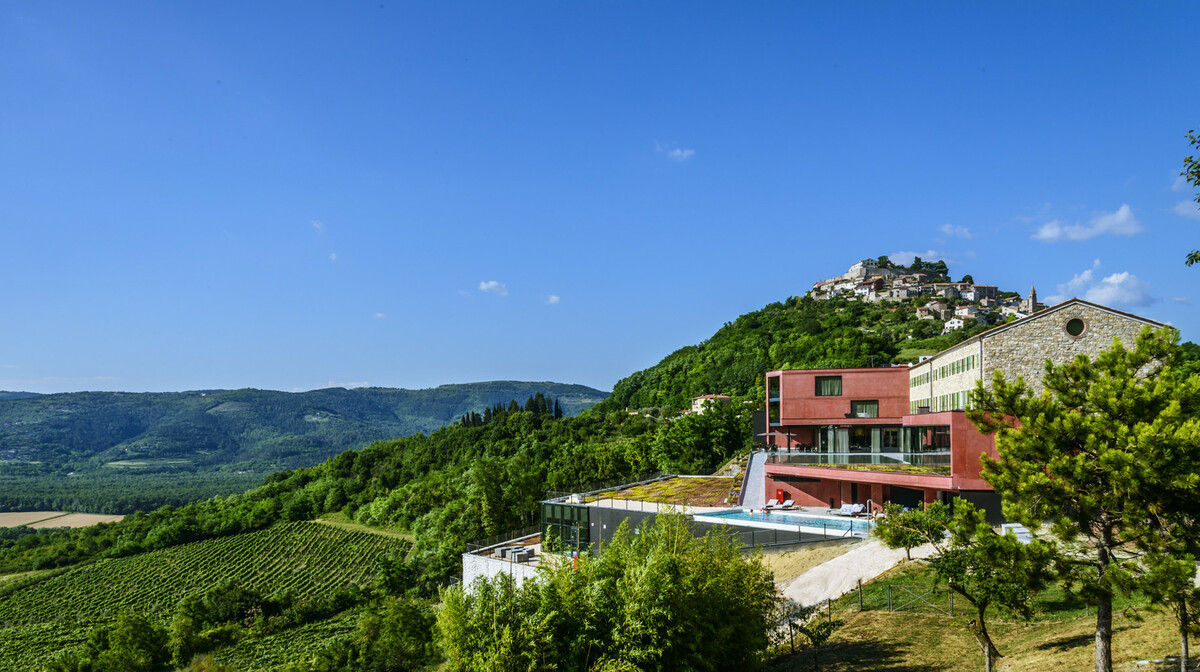 © Roxanich.hr
© Roxanich.hr
Four Houses for Four Brothers, Diklo, Zadar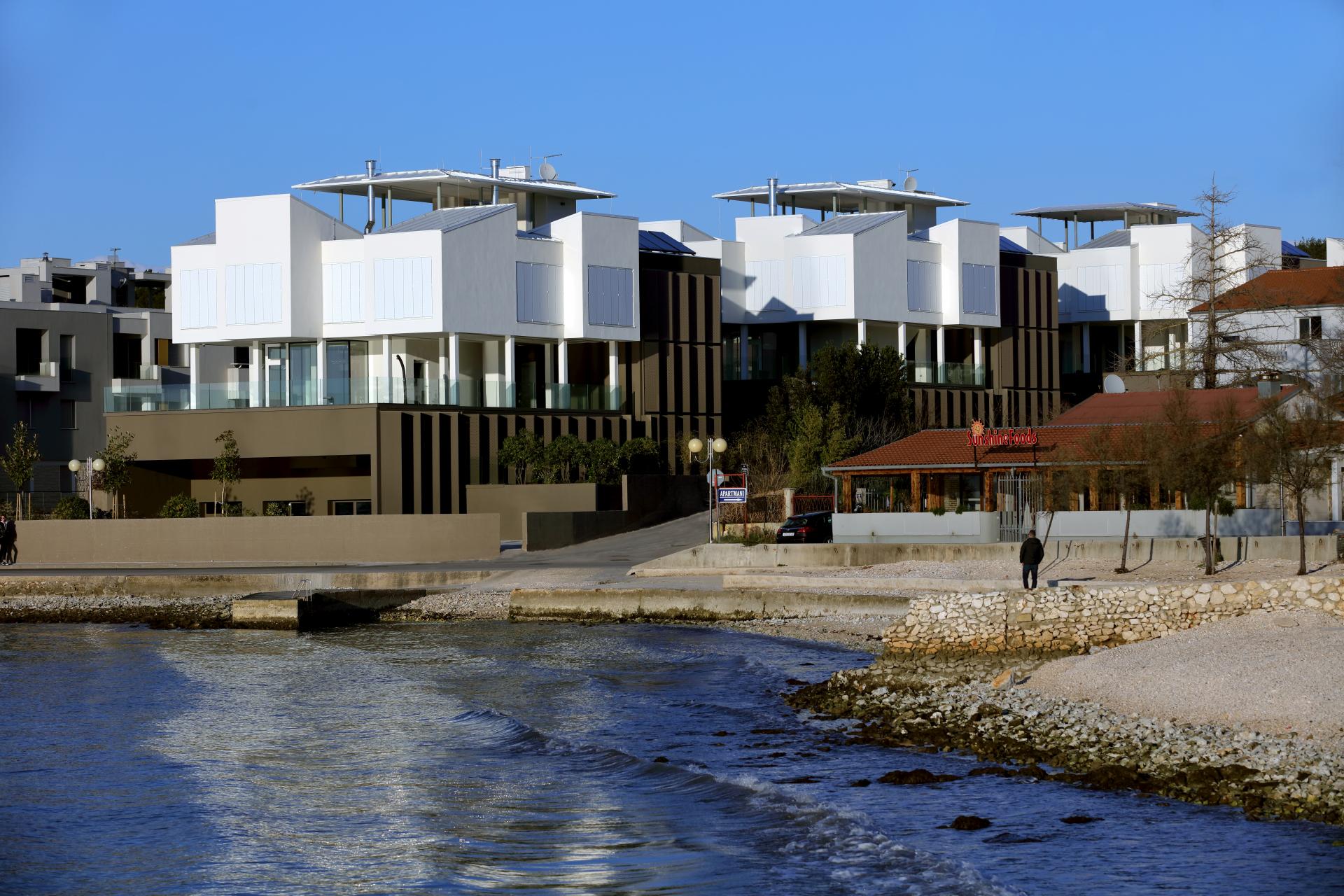
Judging from a theme of project titles used by architects Iva Letilović and Igor Pedišić, we're not sure that Four Houses for Four Brothers was actually commissioned by four brothers or that four live there. But, you could well believe they could. The ultra-modern set of independent houses, located next to a beautiful stretch of coast in a north Zadar neighbourhood, was specifically designed to address a distinctly Croatian reality – how to open up some of your dwelling to seasonal guests while you remain at home. The design separates the buildings clearly into separate quarters which allow privacy, comfort and minimal encroachment for both visitors and residents.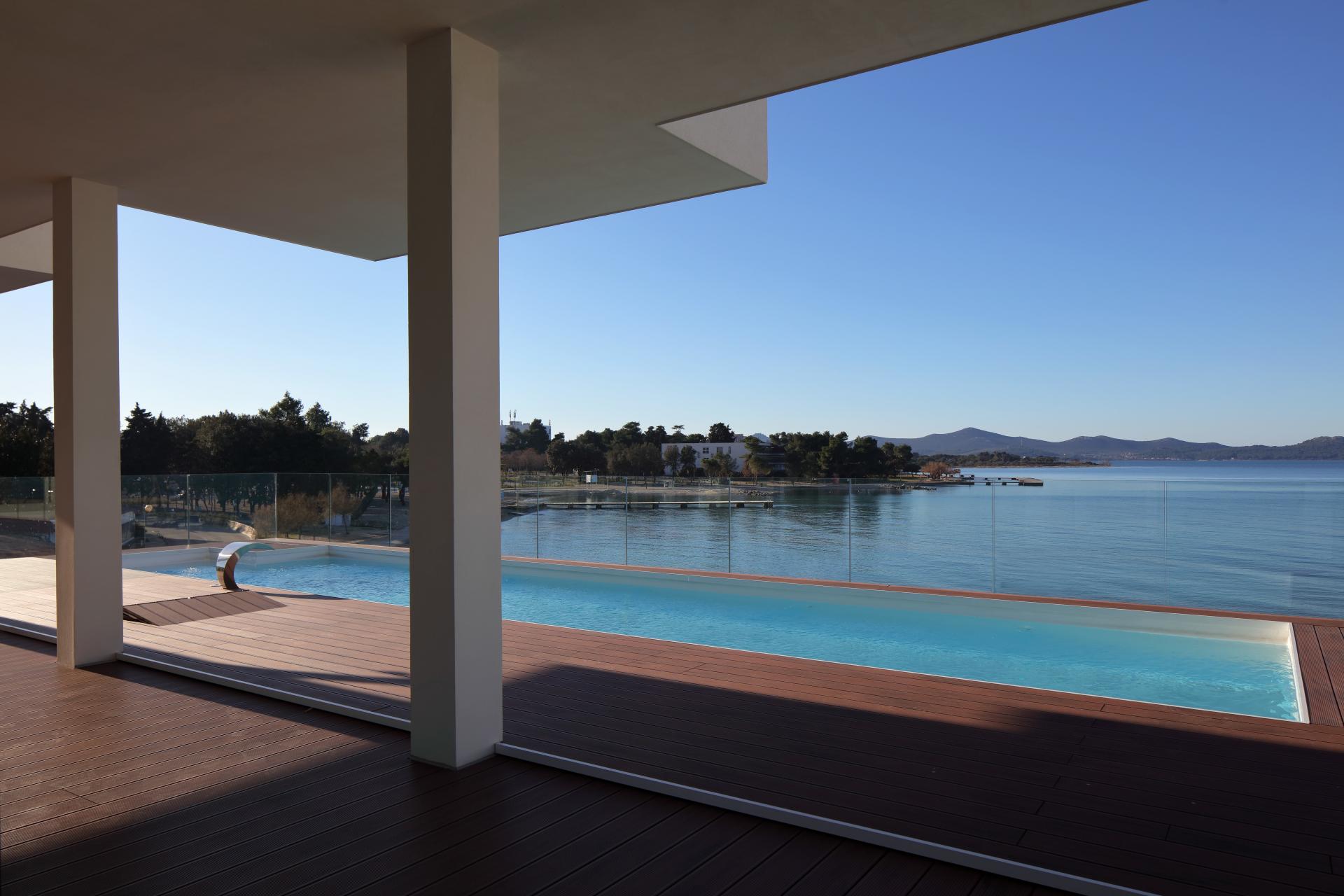 © Igor Pedišić
© Igor Pedišić
Galić Winery, Kutjevo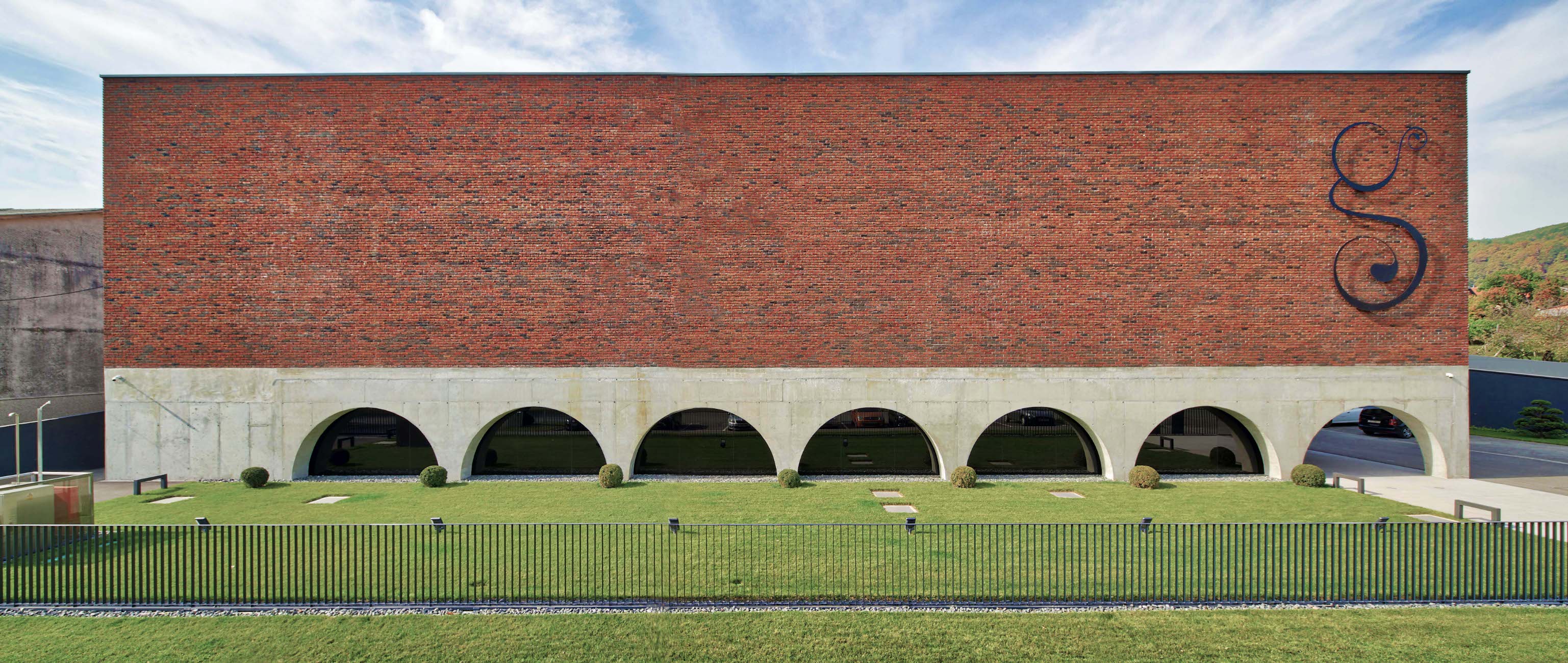
Award-winning outfit Zagreb-based studio Dva arhitekta have an existing, jaw-dropping design for a rural winery commissioned by famous makers Galic. However, that project, as yet, remains unrealised. But, their winery for Galic in the centre of Kutjevo town is complete. Melding the traditional and the contemporary, the upper section of the building is a bold and unblemished red brick, adorned with the winemaker's unmistakable logo. Beneath, concrete arches invite your eyes into the actual wine cellar – neat rows of barrels, protected behind glass walls that are set back from the facade. Brilliant!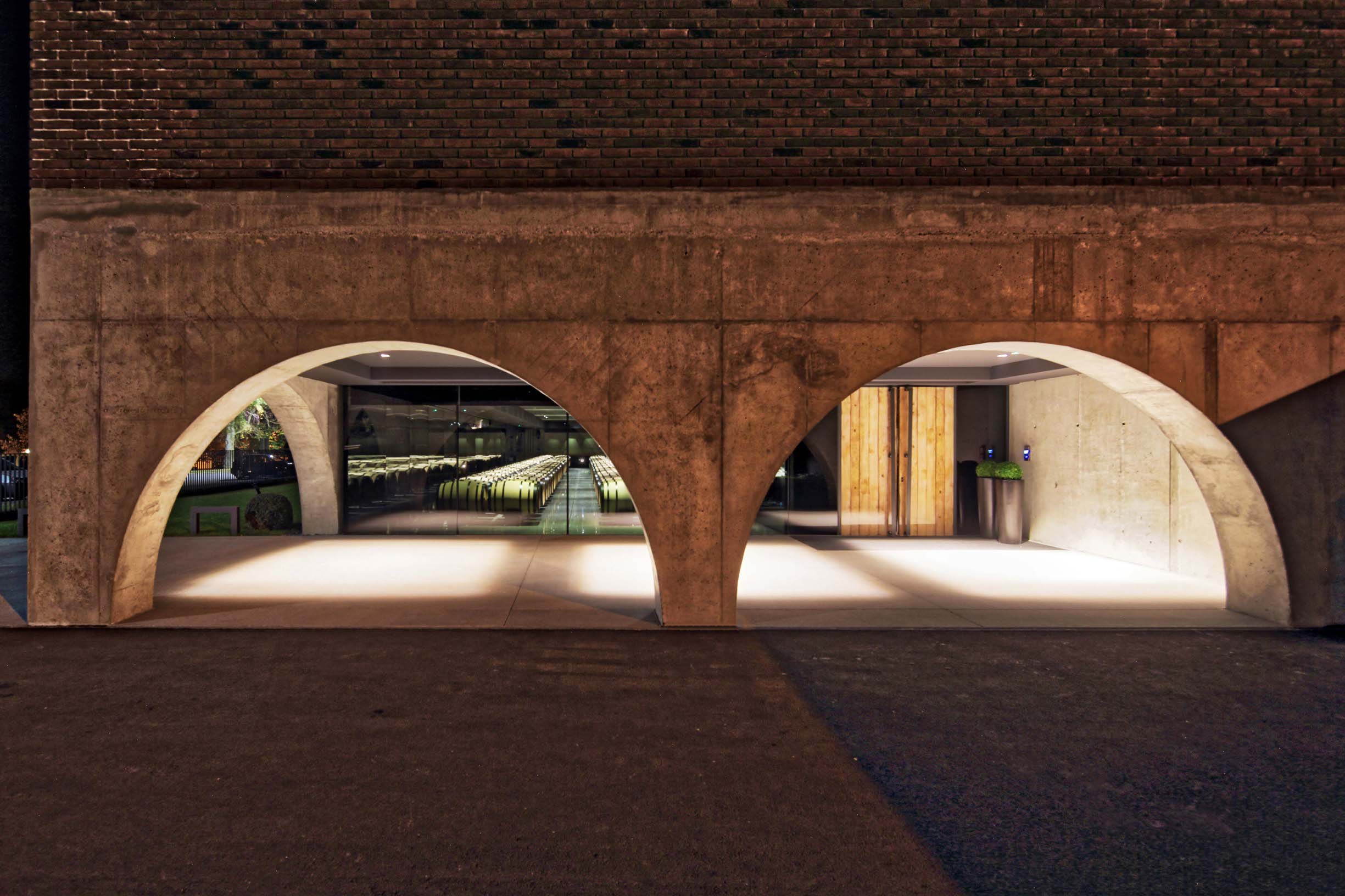 © Damir Fabijanić
© Damir Fabijanić
Seecel Centre, Zagreb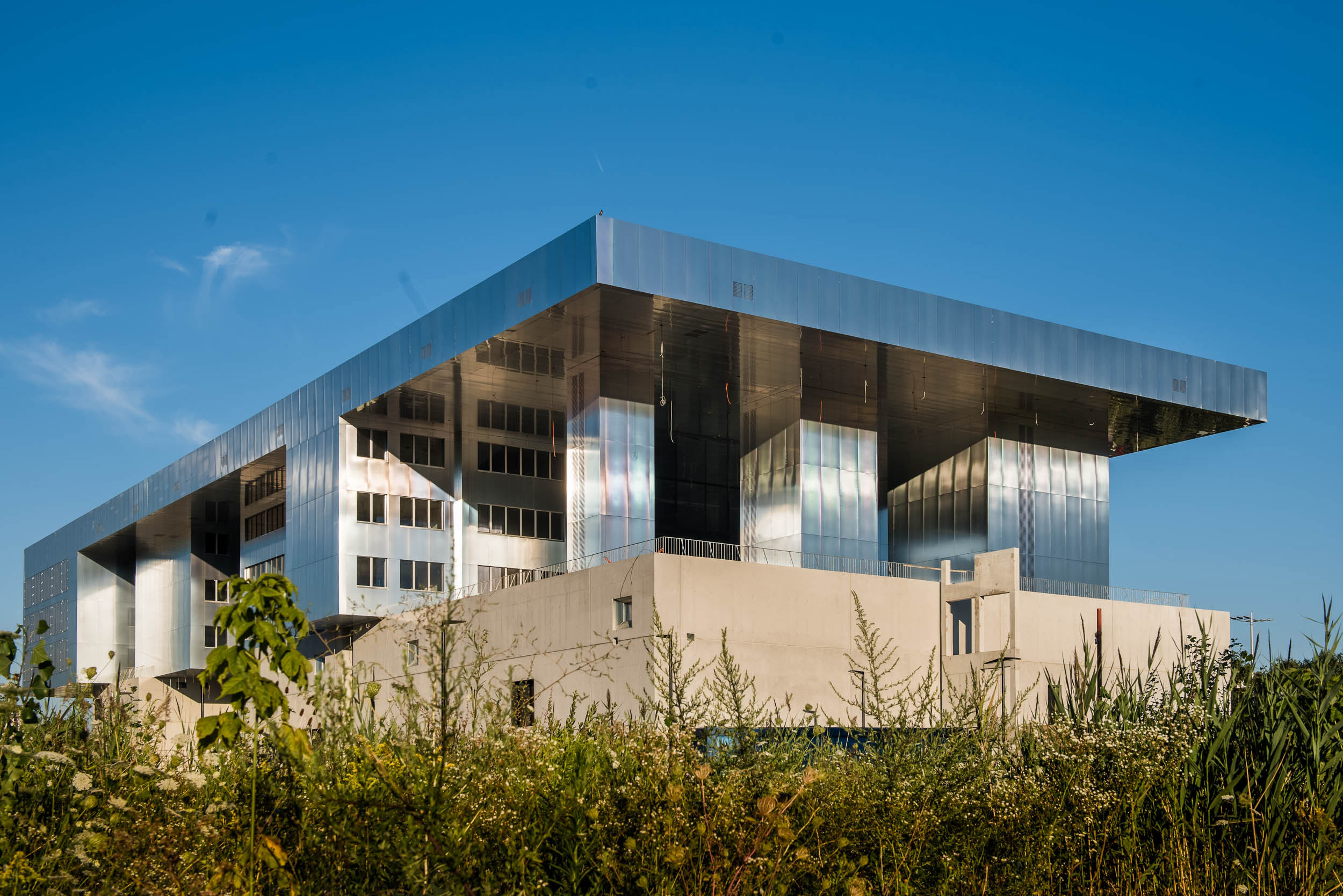
Designed as a regional centre for the development of entrepreneurs and its construction costs generously part-funded by European money, the Seecel Centre arrived long overdue and does not house its intended inhabitants. Such matters are best left for different articles as, here, we're concerned with the undeniable finery of this building's architecture and appearance. Holding space for accommodation, offices, communal collaboration, education and presentations, the five-floored building uses ultra-modern building materials and construction methods to make it low-energy, its great blocks of covered concrete, with glass windows set further back, echoing old fortifications. It was designed by Igor Franić who, in Croatia, is perhaps best known for the Museum of Contemporary Art in Zagreb and completed by him and his team at SZA / Studio za arhitekturu d.o.o.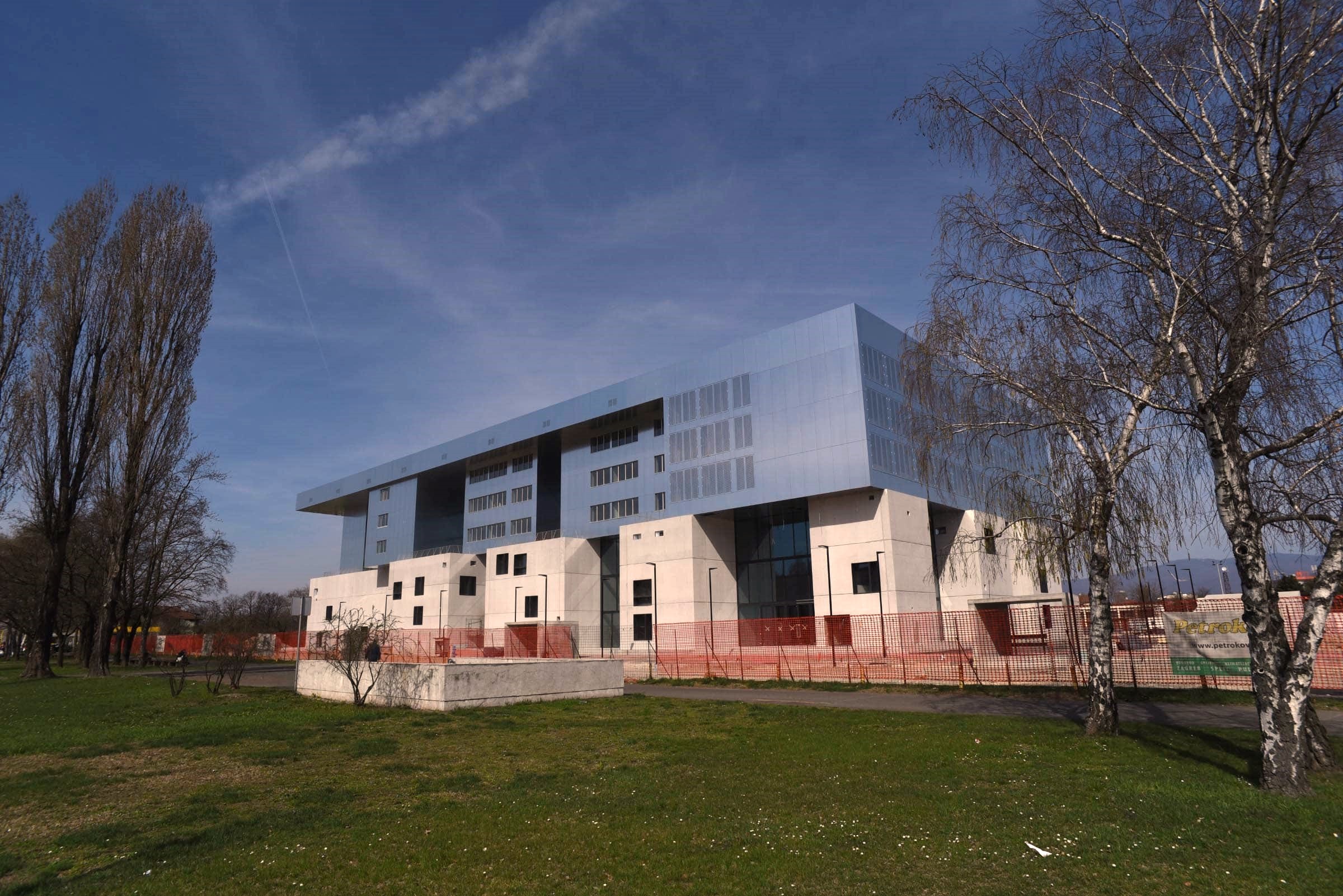 © Site Project d.o.o.
© Site Project d.o.o.
Trg Poljana, Šibenik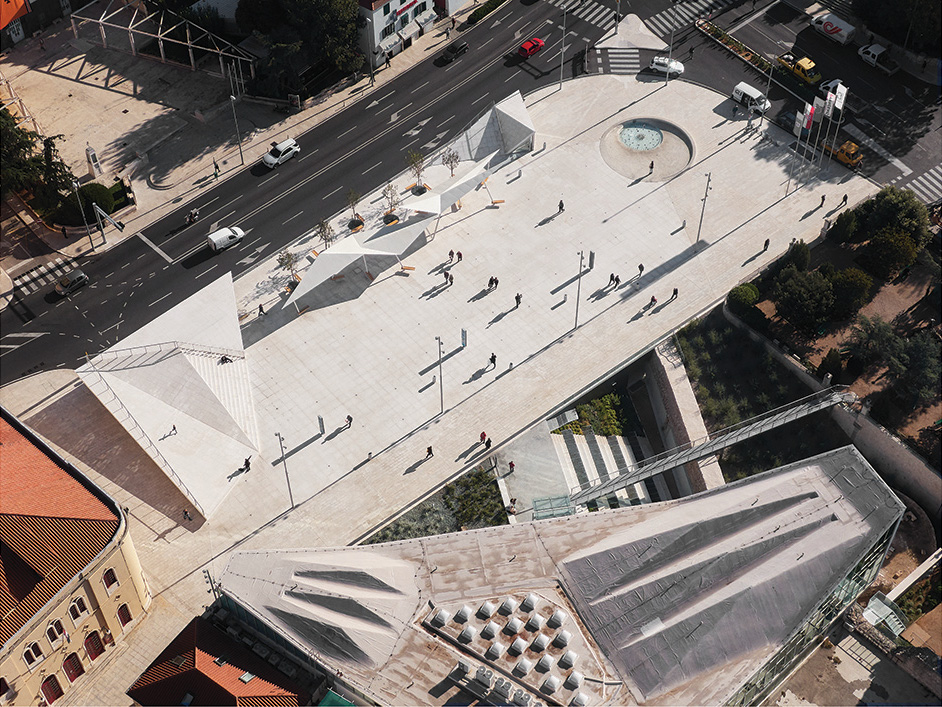
Not a small amount was asked of project architects Atelier Minerva from Dubrovnik in the task to create Trg Poljana in Šibenik. The site had long been earmarked for a much-needed, official town square – a place for events and public gatherings. But, the town was also woefully short on parking. By burying a multi-level car park beneath the open space, the architects successfully met both demands. Triangular shapes sit at an angle above shaded seating, echoing the inclines on the roof of the Juraj Šižgorić City Library opposite. Clever.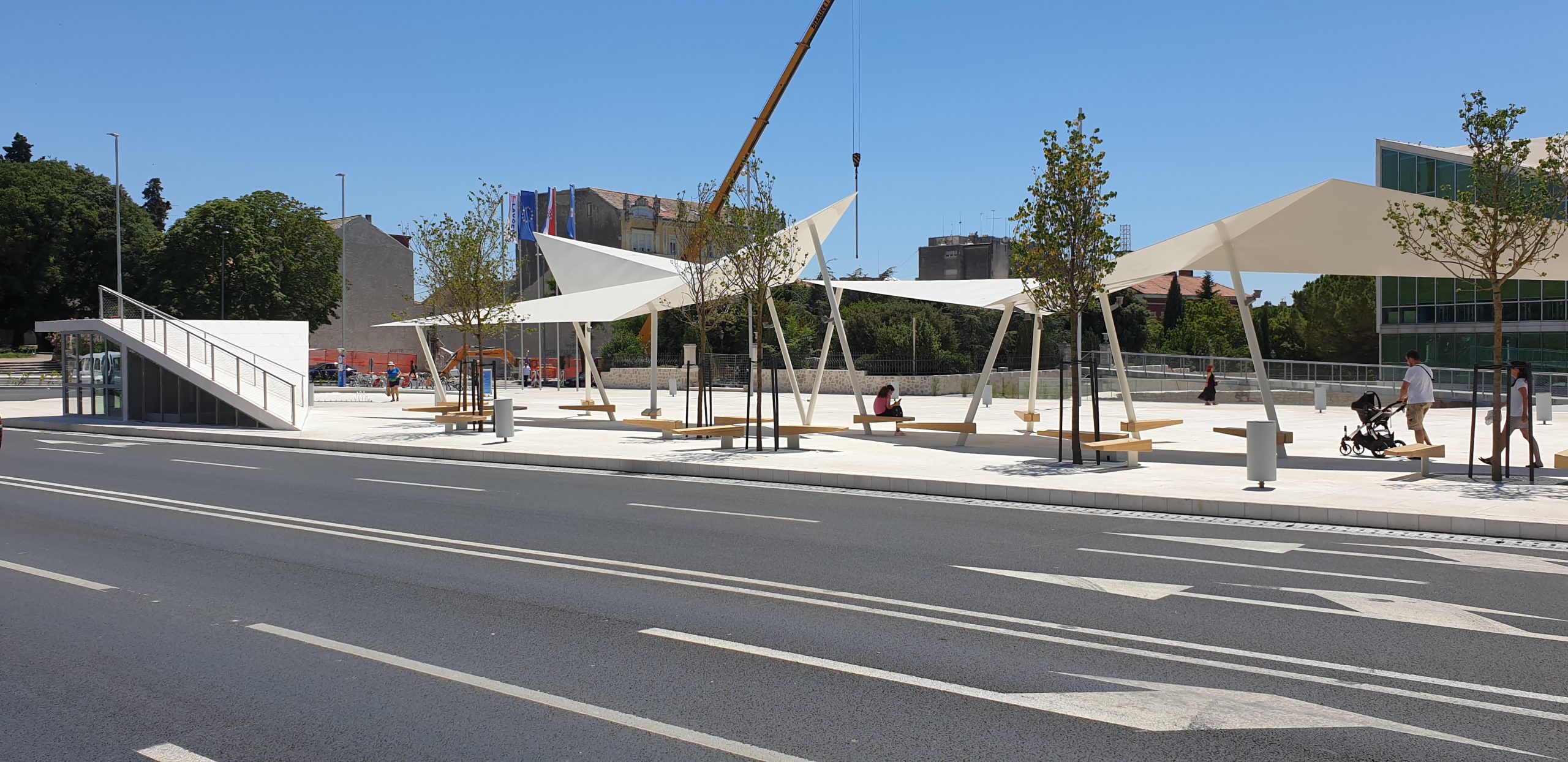 © Ervin Husedžinović / Eccos-inzenjering
© Ervin Husedžinović / Eccos-inzenjering
Homestead on Hartovski vrh, Žumberak, Zagreb County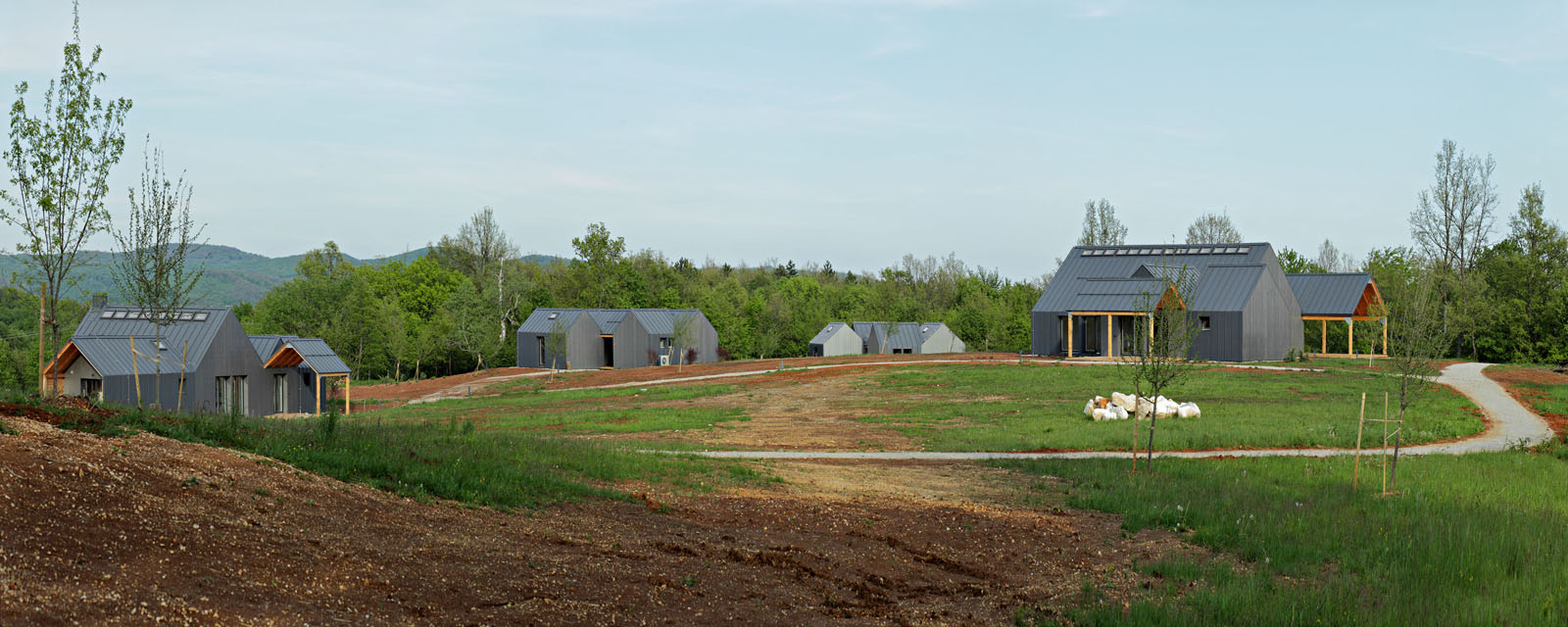
A collection of multi-purpose rural buildings, Homestead and Meditation Centre on Hartovski vrh was commissioned and designed for use by the Buddhist Center Zagreb. Their aim was to relocate activities such as chan, yoga, meditation, healthy living and teaching to a peaceful retreat outside of the city. Architects Branimir Rajčić and Mariela Žinić began the project in 2015, with the completed site arriving in 2019. Modern building materials are used, but not so the striking collection seems out of place within a partially agricultural setting. The set of buildings includes a residential dwelling and a larger hall for meetings and activities, both of which use large windows to allow the light and nature to flood in.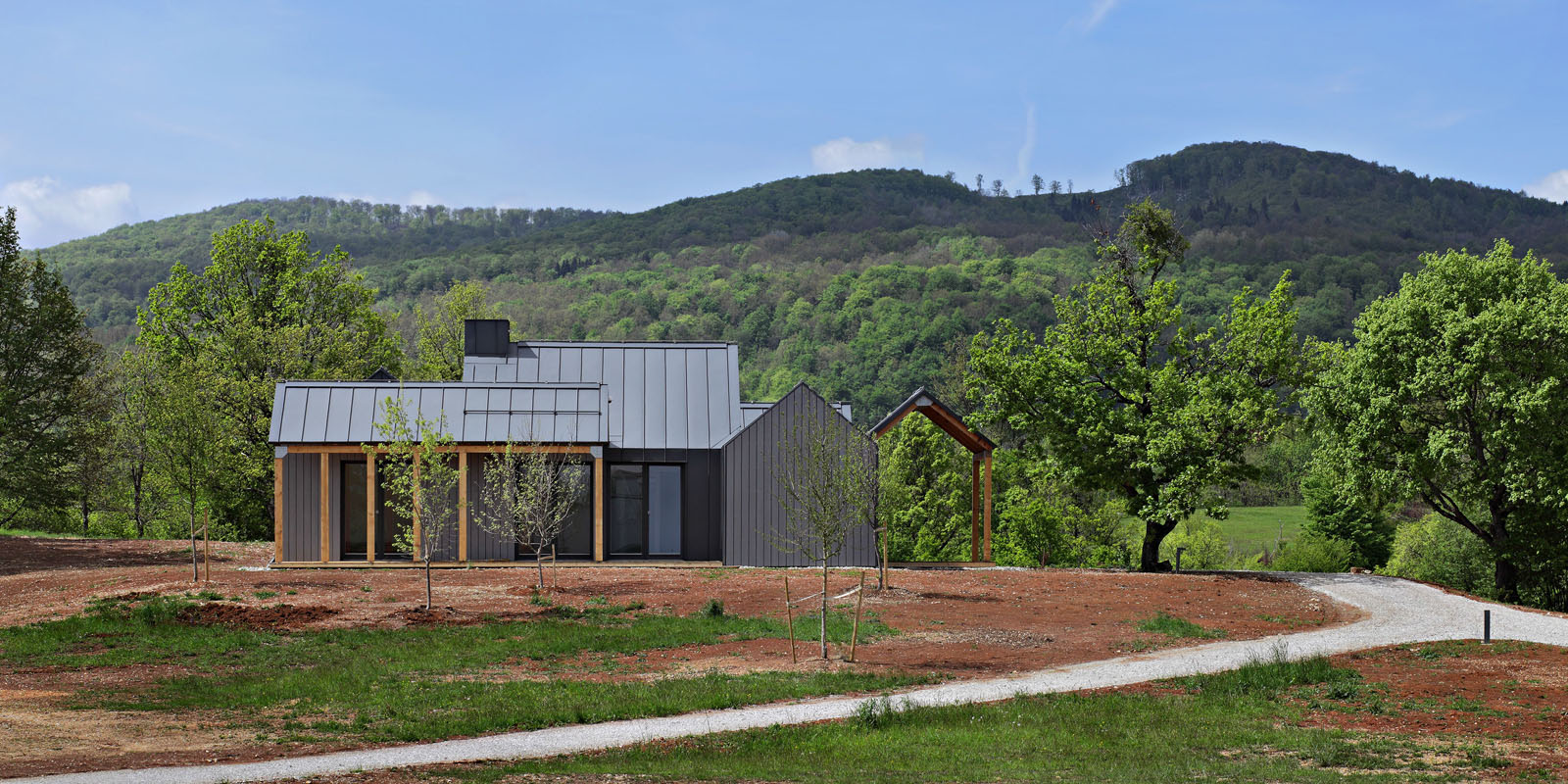 © Robert Leš
© Robert Leš
Square of Traditional Crafts, Varaždin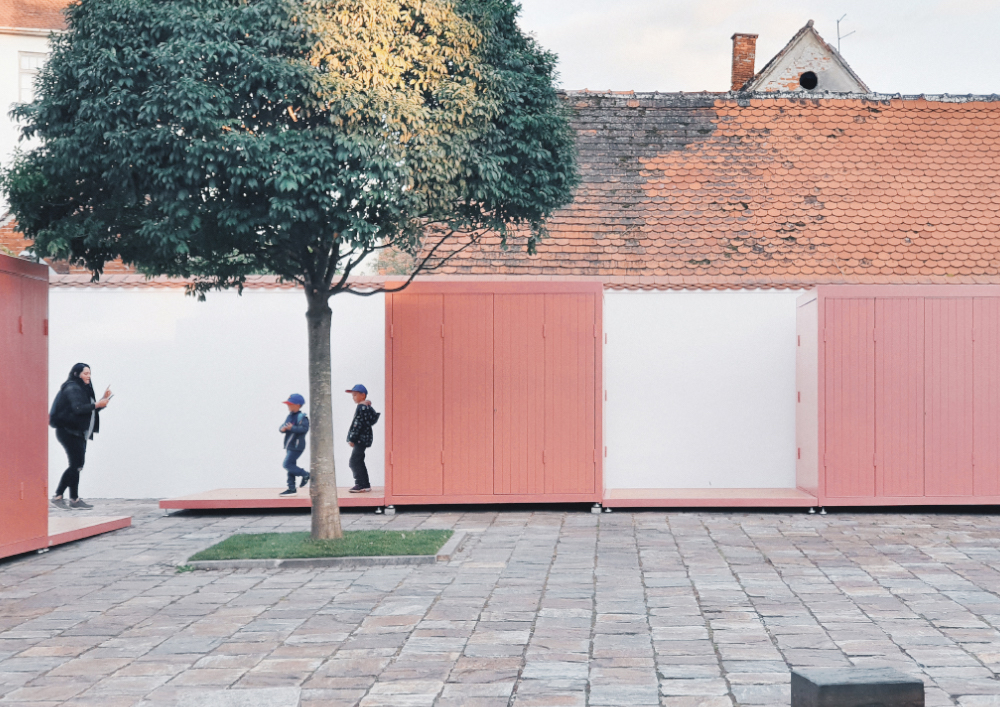
A tricky task was given to architects Studio Konntra – how to enliven and modernise a traditional old square in the centre of one of Europe's best-preserved Baroque Old Towns. They did this by constructing transportable kiosks to house small outlets for local artists and craftsmen that cater to visiting tourists who come to the square. When occupied during the day, the plain wooden interiors allows the crafts to take centre stage. But, after closing time, the outsides of the wooden doors are brightly coloured and adorned with paintings, a welcoming environment for residents to use at night.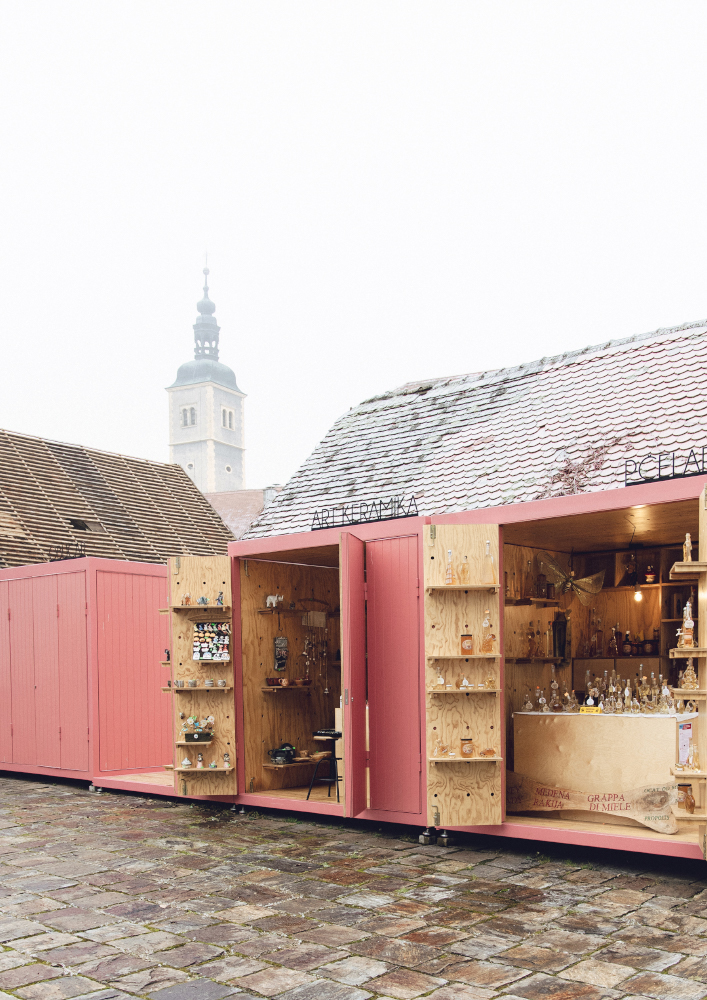 © Studio Konntra
© Studio Konntra
Denis Ivošević of Istria Tourist Board: We Want to Achieve Even Better Flos Olei Results
February 9, 2021 - Denis Ivošević of the Istria County Tourist Board revealed that olive oil producers in the region have prepared earlier than ever to achieve even better results in the 2022 Flos Olei guide, and that their work with olives won't stop there.
Glas Istre reports that at the end of January, the Istria County Tourist Board launched a campaign and sent an invitation to all producers to apply for and deliver extra virgin olive oil for the new edition of the 2022 Flos Olei guide.
According to the Istria Tourist Board director, Denis Ivošević, they began collecting Istrian extra virgin olive oils much earlier this year to reserve the first spot at the tastings. He adds that it may sound unusual, but the order of evaluation is already significant for the outcome and maintaining the reputation of Istria as an international olive oil destination.
"The fact is that every year, more and more is invested in knowledge, but also the acquisition of new skills, so we believe that we will collect a record number of samples that will allow us to approach new records - not only in the number of listed Istrian olive growers but also that for the first time, one of the Istrian olive growers reaches the prestigious 99 points. This is the result we hope for, which would mean a lot to all of us and bring additional momentum to the development of olive growing and confirm the top reputation of Istria as an olive growing destination," says Ivošević.
Recall that Istria has been part of this unique guide since 2005, when only two Istrian producers from the region were included. The Ipša family from Ipši and the Beletić family from Novigrad had the honor of being the first. The guide was then published under the name L'Extravergine, and from 2010 it changed its name and publisher to a new, today recognizable name, Flos Olei. Since the first edition of the guide under this new name in 2010, Istria has taken an important role and positioned itself as the second-best olive growing region, just behind Tuscany. However, every year the advantage of Tuscany was smaller. Finally, in 2016, Istria took the top spot that it has maintained to this day, but with a far greater advantage than Tuscany previously had on Istria.
"It sounds unreal, and I would say pretentious, but Istria has been declared the best olive growing region in the world for the sixth year in a row. How it looked last year is sufficiently shown by the fact that Istria had 71 olive growers and Tuscany 43. However, it is even more important that more than a thousand samples from all over the world arrive for evaluation, that a professional panel of verified tasters in the organoleptic sense tastes all the received samples, that after that, a selection of the 500 best in the world is made, which is impressive," the director of the regional Tourist Board proudly points out.
The flattering accolades should be taken as motivation for further investment and growth.
"During the corona crisis, I would say the most challenging year in recent history, when there were almost no investments and those planned were stopped in time, only the field of olive growing, among the few, achieved what was intended. Thus, the largest investments were made to raise the quality of processing, storage, and the presentation and sale of Istrian extra virgin olive oils. Total investments exceed HRK 50 million, which is an extremely great achievement for such a specific, niche product. On the one hand, investments have been made in new modern and technologically advanced processing plants. On the other hand, investments have been made in architecturally interesting building solutions with designer-equipped new tasting rooms and boutiques. So last year, the Chiavalon family opened a new olive growing center in Vodnjan, a modern building that includes a special line of Mori olive processing, with a new cellar, tasting room, sales point, storage space. The Ipša family also continued with investments, which also opened an attractive olive growing center in Ipši near Oprtalj. It is a renovated and revalued traditional building where there is a new line of Mori olive processing, with a new cellar, tasting room, point of sale, Istrian tavern, and warehouse. The interim director of the Fund for the Reconstruction of Earthquake-Affected Zagreb, Damir Vanđelić, and his family have opened a new olive grove and center along the road from Bale to Rovinj. The new oil mill is also a refurbished and revalued traditional building housing the new Mori olive processing line, with a new cellar, tasting room, and sales outlet, combined with fruit and vegetable production, given that the olive grove center is located on a 67-hectare-large family farm.
We should also mention the significant investments of the Galić family, which opened a new cellar for extra virgin olive oils in Kostanjica near Grožnjan, a tasting room, and a sales point and a panoramic terrace, as well as Oleum Maris, where a new olive center opened along the road between Vodnjan and Pula. It is a modern building with a new basement and sales point and continues with a new tasting room and projections and a panoramic terrace. Finally, thanks to an investment by the Beletić family from Novigrad, a new, modern Pieralisi olive processing line was opened.
This list is only part, or the most significant investments of Istrian olive growers, with a handful of smaller ones that complete the picture of how much importance is attached to raising new olive groves, acquiring new knowledge and skills, improving production and the technological process, but also new models of presentation and sales of the final product - extra virgin olive oil of premium quality.
"In Istria, olive growing has become the ultimate question of identity and national pride!" says Ivošević.
"Olive growing in the broadest sense of the word is not just producing extra virgin olive oil. If we have proven that we are capable of producing high-quality extra virgin olive oil, that we know how to promote, brand, advertise, and sell it, we must certainly try in other disciplines that come from the basic product - olives," says Ivošević, and delves into the areas where there is potential for further growth. He says it is the production of table olives, which is rarely used commercially on the Peninsula today.
"We have almost no serious producers who have found their niche or specialization in this area, and that is the part we definitely miss, especially since the demand for such a product is extremely high, especially given the developed gastronomy in Istria and Croatia. The use of table olives can definitely be used in a wide range of Istrian gastronomy presentation. For example, it can be used in various forms and techniques of preparation as an introductory greeting from the kitchen, as a separate snack, or in combination with other products as a supplement to various tastings. It can also be used as an appetizer, hot or cold, as an addition to the main course, and why not as part of a dessert? But, most importantly, we would avoid importing the worst quality of such olives, which we import almost without any quality criteria and health control," explains Ivošević.
One of the directions is certainly a stronger focus on niche cosmetic production of olive-based boutique cosmetics. In this part of dedicated production, he recalls, we have pioneers who began using extra virgin olive oil in cosmetics, not only through sales in specialty stores but also in increasing use in wellness, beauty, and health treatments.
It is unnecessary to explain that extra virgin olive oil, in the way it is produced in Istria, is a natural product and contains many qualities. It is naturally rich in unsaturated fatty acids. It has a high content of phenols that have a beneficial health effect because olive oil polyphenols help protect blood lipids from oxidative stress. Extra virgin olive oil is also a natural source of tocopherol, a precursor of vitamin E, which helps protect cells from oxidative stress when present in sufficient quantities. Tocopherols in the presence of phenols act synergistically, i.e., enhance their antioxidant effect.
"It has long been known that extra virgin olive oil is a natural remedy, and now the globally known Jennifer Lopez has launched a cosmetic line based on olive oil "JLo Beauty Olive Complex," which will certainly encourage some to try the same in that specific niche of cosmetics and natural remedies," says Ivošević.
In the end, he says, the waste generated by processing olives can be used wisely, by using firewood seeds. In this way, the potential of olives would be fully used, and the problem of disposing of that waste would be partially solved.
"With new directions, such as this, Istria will show that in addition to the prestige in the production of premium extra virgin olive oil, we turn to other disciplines that include an extensive range of opportunities - from the segment of health, nutrition, and psychophysical fitness, beauty treatment and rejuvenation, wellness treatment, in the broadest sense of the word, all the way to sustainable and responsible development in terms of waste management for heating," concludes Denis Ivošević.
To read more about lifestyle in Croatia, follow TCN's dedicated page.


